Luminar Neo will take your photography to new heights
Luminar Neo post processing software is the simpler way to create outstanding images.
Cherry blossoms image created with the assistance of Luminar Neo’s post processing tool.
Simplify post processing to a few simple clicks
If there is one tool that has transformed my photography more than anything else in the last year, it has been the introduction of Luminar Neo’s photo editing program to my post processing toolbox.
Now, it’s available for up to 77 per cent off an already very reasonable cost.
By simplifying the whole process of editing my digital images down to merely a few simple clicks, the photo editing software has made post processing not only a real joy, but a way for me to discover new, and exciting approaches to photography.
And, when I want to take my images to a whole new level, Luminar Neo’s extensive editing tools offer all the capabilities that more serious amateurs or professionals would want in a post processing package.
Add their most recent additions to an already extensive list of tools and post-processing modules, and it’s probably fair to say that Luminar Neo is not only the new kid on the block, but it managed to take the best of what’s around, simplify it and add its own unique creative editing modules to put this photo editing software in a league all its own.
Click here for pricing and details if you are a new user of Luminar Neo
Click here for pricing and details if you are an existing user of Luminar Neo.
Luminar Neo is also not resting on its laurels. They tell me that in the coming weeks they will also be introducing the beta of their AI Assistant, a powerful new tool arriving in Luminar Neo before the end of the year.
Fall leaves shot with a Lensbaby lens and post processed with Luminar Neo post-processing photo software.
Light depth module
By far, Luminar Neo’s new “Light Depth” module is so transformative that it alone makes the program worth purchasing. The ability to change the light in your digital images to highlight areas of the scene from one with flat light, into one with a three-dimensional look, is game changing. Add to that, the ability to control the warmth and coolness of the scene both near and far – all with a few simple clicks – and it’s hard to not get excited about the possibilities.
Click here for my complete post showing the incredible results you can get from Luminar Neo’s Light Depth module.
A prized family photograph of my parents and relatives with famed Ink Spots lead singer Bill Kenny in B&W restored.
The same image colorized with one click by the power of Luminar Neo’s restoration module.
Restoring old photos is so simple
In its latest release Luminar Neo has made professional photo restoration and colour conversion as simple as one click. And the results are literally astounding. There is no more need to pay professional photo restorers to bring back your family photos, it’s all built into the new version of this Ukraine-based post processing photo program.
Click here for my complete post showing the transformative results you can get from Luminar Neo’s new Restoration module.
Luminar Neo offers users with their own Space to share their best images or family vacations with friends and family without the need for expensive websites.
Now you can get your own Space to show off your photos
No need for a fancy and expensive website, now you can get your own space to show friends and family your best images. As part of Luminar Neo’s newest release, purchasers can get their own “space” where they can show off their favourite photos or vacation pictures with friends and family without the expense of creating their own website.
Check out two spaces I recently created on Luminar Neo’s new “Spaces”. Our European vacation here and fall in the backyard here and for a look at a few of the images I restored using Luminar Neo’s “Restoration” module, click here.
More posts on Luminar Neo
All of this and much more is available with Luminar Neo’s latest release just in time for the holiday season. For my of my posts on Luminar Neo, check out the posts below.
What you get and pricing packages
You might be surprised just how much processing power you get for a more than reasonable price. Luminar Neo’s Black Friday offers are live with discounts of up to 77% — the perfect moment to get the full Luminar Neo Ecosystem.
Here are some of the pricing details: Please use the click here to get the discounts through my affiliate with Luminar Neo.
Prices for new uses: Click here
Luminar Neo Desktop Perpetual: $99
Luminar Neo Cross-device Perpetual (Desktop + Mobile): $139
Luminar Neo Max Perpetual (Desktop + Mobile + Spaces): $159
Prices for existing users of Luminar Neo:
Upgrade Pass: $49
Ecosystem Pass: $69
Focus on street images for more memorable vacation photos
Focus on street photography for better vacation images.
Under a bridge along the pathway back to the river cruise ship, I noticed this musician entertaining the passersby. Most paid no attention to his presence, so I turned my camera on him to take advantage of both the graffiti and the lovely texture of the wall behind him. Although originally shot in colour, the RAW image was converted to B&W for a more fitting “street scene.”
We’ve all seen them, smiling faces standing like statues in front of tourist hot spots surrounded by hundreds of others waiting to get the exact same photo.
Sitting through photo after photo of “Here’s us in front of …..” get’s a little tiring for friends and family, but include some more “interesting” images and you might just have a very captive audience.
Don’t get me wrong, there’s a place for these images among your vacation snaps. After all, what would a European vacation be without a shot in front of the magnificent cathedral, the impressive fountain or the incredible view of the Alps. Nothing says “I was there” better than a snapshot at the scene.
But don’t forget to get your creative juices flowing by experimenting with more memorable images that capture the true experience of going to an unfamiliar place. Take the time to embrace the real culture of the area, roam some of the backstreets and bring home some truly memorable images of a once-in-a-lifetime vacation.
I was walking some backstreets in Heidelberg Germany looking for interesting images when I spotted this young girl walking toward me. As she walked past, I turned to capture her confidently walking down the cobblestone street past bikes heading to “who knows where” but with the confidence and sense of purpose that made me take notice. For the purpose of this “street photography” post, I converted the image to B&W, but her pink sweater and faded blue jeans and backdrop of pastel houses makes the scene as good in colour as it is in BW. (See the colour version below.)
That’s exactly what I did during a recent two-week European vacation that started and ended in Switzerland with stops in picturesque towns and cities in, The Netherlands, France and Germany.
While other passengers on the river cruise were entertained by the guide explaining the historical significance of certain tourist hot spots, I wandered off in search of more interesting images on side streets, at cafes and through shop windows.
The following is a small sampling of some of the “street” images I was able to capture, with explanations of why I was attracted to the scenes.
While my wife shopped in this well-known German Christmas store, I stayed outside looking for interested images. This young woman decorating a store window caught my eye and I shot several images of her arranging elements in the window. Shooting through windows is a common “street shooting” theme, but being able to photograph a worker decorating the window for Christmas was just too good to pass up.
Outdoor patios are such an important part of the culture in most European cities that it’s only natural to try to capture a taste of it. This waitress was setting up for lunch making capturing her coming through the doorway simply a matter of patience.
Bicyclists are an important part of the European culture. Walking the backstreets allowed me to capture this image, a quintessential European scene.
The iconic bike street scene. I was particularly attracted to the simplicity of the scene and the monochromatic look.
Another bike image. The shape of the bike attracted my attention as well as being able combine the three elements to complete the picture. The reflection in the windows also adds to the scene.
Look for small details
Again, wandering down the side streets, I stumbled upon a florist with a permanent four-legged friend.
Sometimes a scene presents itself and all you have to do is wait for the right subject to pass through it. This fellow looking at his phone walking away from a scooter was to good to ignore.
An iconic scene of an outdoor cafe in Germany. Waiting for the right moment adds to the simplicity of the scene. Moments before the image was taken, tourists milled about which would have turned the image into a touristy snapshot.
Searching for Simplicity
Finding simplicity in a touristy town is not always easy but with a little patience and a lot of luck, it’s possible. I was able to keep a very low profile by photographing with a Pentax Q miniature camera rather than a much larger DSLR camera and lens.
Pretty in Pink
This is the colour version of the image higher in the post. I love the soft pastel colours of the young girl’s sweater and jeans and the backdrop of coloured homes.
Rustic doorway
Our tour group stopped at a location to use the washrooms so I wandered around and found this old doorway complete with graffiti. The flowers at bottom right contrasts nicely with the vintage door.
This image was photographed in the same location as the BW image of the man and scooter above. I thought the woman’s red pants picked up on the red of the Lindt chocolate in the window and works better in colour than it would in BW.
Another outdoor cafe scene that captures the essence of a European city.
I noticed this well-dressed woman walking to the town centre earlier and came across her again people watching on a park bench. By moving around, I was able to add a little humour to the image by combining this colourfully dressed mannequin with the stylish woman.
I could not resist photographing this well-dressed gentlemen is his German attire.
Finally, I loved the vibrant colours of this woman’s clothing right down to her shoes and how her focus is trained on the beautiful pastries in the window of the highly acclaimed Cafe Gundel.
Kolari neutral density filters put to the test
Kolari Vision neutral density filter system can turn your simple photographs into works of art.
Digital photography is invitation to minimalist fine art images
I’ll admit that I have not used neutral density filters all that often. I mean, growing up shooting Kodachrome 25 and 64 as well as Fujichrome 50 meant there was not a whole lot of need to put darkened glass in front of my lenses to get an even slower shutter speed.
But that was long ago and times have changed.
Image taken without a neutral density filter at 1/200th of a second.
Today’s modern cameras boast ISO settings that easily reach into the thousands and some cameras don’t even offer ratings under ISO 200. So, using neutral density filters has become increasingly important in order to create certain in-camera creative effects.
A waterfalls, for example, takes on a beautiful soft look with a slower shutter speed. Even a simple stream looks better when a slow shutter speed has been used to create a soft ethereal look.
An long exposure of anywhere between 10 seconds to several minutes or more creates a dreamy, ethereal look as ocean waves crash against the rocks. The results can easily transform a typical tourist shot into a work of art anyone would be proud to hang on their wall.
The image below – although admittedly not very exciting – illustrates how a long exposure (16-seconds) can remove wave action and create a minimalist image with an ethereal look. (I’m going to work on finding better subjects for a future post on maximizing the 10-stop filter.)
A 10-stop neutral density filter was used to create this 16-second exposure of a rock in the lake. The long exposure flattened out the water, removing the waves and helped create this soft, ethereal feeling.
These are the more obvious, and popular, uses of neutral density filters. There are, however, so many more uses that photographers might want to explore.
One of the benefits of digital photography is that there are no longer excuses to not experiment with your camera. In the past, experimenting with a roll or two of film cost real money, especially if you were not happy with the results. Today’s digital cameras, however, take the cost factor out of experimentation and leaves photographers with the incentive to pursue a more creative, experimental approach to making photographic images whether in the garden, in the forest or even by the lake or ocean.
Filters in original case
The three Kolari ND filters are nicely packaged in a quality case with the magnetic adapter ring.
Kolari kindly offered me a set of their magnetic-based neutral density filters (a 3-stop, 6-stop and 10-stop filter) to use in the garden, in the woodland and in the field. In the short time I have been able to put these filters to the test, I have to admit that I am impressed. Not only with their ease of use, but with their neutral colour profile and exceptional clarity.
That should not come as a surprise since Kolari is using Schott glass – considered the finest in photographic glass – for their filters.
Let’s take a look at some of my early results employing these filters.
The three images above illustrate the effects of a slow shutter on moving water. The top image shows a 12 second exposure while the small image below shows a typical 1/200th of a second exposure. A tripod was a necessity for the 12-second exposure.
Better Bokeh, create a softer background
One of the important uses of neutral density filters is how they allow the photographer to create a softer, more pleasing bokeh or background in their images. This is especially important if you are photographing in brightly lit areas where your camera is calling for small f-stops like f8, f11 or f16.
By adding one or more neutral density filters to the lens, you are able to choose f-stops like f5.6, f4 and f2.8. This is especially important for portraiture to help the photographer “soften” the background.
If you are looking to get the most out of your fast prime lenses, like an f1.4 lens, it is vital to cut the light entering the lens in situations where you are looking to create a soft bckground.
In the image below, I used a fast f2.5 macro lens to capture the spotted bee balm. By using the lens wide open, I was able to get the main subject in focus while keeping the flower at right soft and out-of-focus. A faster f-stop (f8, F11, f16) would have brought the second flower into focus and made the image too busy to be successful.
Giving water a soft, ethereal look
A sturdy tripod is necessary for long exposures, including this image (below) of a small waterfalls along a stream. The slow shutter allowed me to soften the water and create a more pleasing image. The amount of softness depends on a combination of how fast the water is moving and how long the shutter remains open. In this case it was only a matter of a few seconds.
By experimenting with different strength ND filters, you can create very different effects, but you will likely find the 3-stop filter will be the most used.
A slow shutter speed of several seconds was used to create this soft ethereal look to the small waterfalls at a nearby stream. The low light levels in the forest allowed for the Kolari 3-stop filter to slow the shutter enough to capture the image. Under brighter conditions, a 6-stop filter may have been necessary to slow the shutter to the desired speed.
Taking creativity to a new level
Getting into the more creative potential of using neutral density filters affords the photographer an opportunity to create interesting impressionistic images.
The image below, for example, of Proven Winners’ Bubble Gum geraniums growing in a hanging basket takes advantage of a 3-stop neutral density filter and a long exposure while intentionally moving the camera (ICM). By moving the camera in a diagonal direction while pressing the shutter, I was able to use the colour in the flowers to create strong diagonal lines in green and fuchsia.
Since these images are more creative than documentary, pushing the post processing to bring out colours and textures seems appropriate.
Whether you like ICM images (I love pushing the boundaries creatively) or prefer to use the filters in a more traditional way, there is no denying that the potential of combining ND filters with digital cameras provides endless creative potential.
Below are a number of ICM images taken in the garden by slowing the shutter speed using the Kolari magnetic ND filters.
Once the magnetic base is screwed on to your lens, changing filters and experimenting with different filter effects is quick and simple with the Kolari filters.
A polarizing filter can also be used with the ND filters.
This image of Proven Winners’ Bubble Gum geraniums was taken with the 3-stop neutral density filter and post processed in Lightroom adding texture and vibrancy.
This image of Black Eyed Susans in motion, combines a documentary approach with a more impressionistic one. Again, post processing was used to create more vibrant colours and textures in the image.
This image of a group of rotting apples was taken using the Kolari 3-stop ND filter. I love the colours and the very sensual feeling the image evokes. It is the result of many attempts to capture a successful image.
Let Mother Nature do the work
A similar effect that can be fun to experiment with is letting Mother Nature create the movement. Pick a subject like flowers in an open field, slip on an ND filter and hold your camera steady on a windy day. The result will be an image that captures the joy of flowers blowing freely in the wind.
Removing people with neutral density filters and very long exposures
Neutral density filters can also be used, for example, to eliminate people at popular tourist attractions or in landscapes. This is another example where the 10-stop ND filter comes into its own. As long as the people are milling about, an exposure of 10 minutes can actually make them disappear in the image leaving the photographer with a more minimalist image. Different ND filters combined with the movement can result in either the complete elimination of the people, or ghost images of the people, which can also be effective.
Kolari Vision is more than just ND filters
One look at the Kolari Vision website and you know that this American-based photographic company is so much more that a filter company. There is little doubt, however, that the company is a leader when it comes to photographic vision and leading-edge technology.
Not only are they leaders in clip-in internal magnetic filters for mirrorless cameras, the company is also breaking new ground when it comes to full spectrum, infrared, astrophotography, action photography and drone camera conversions.
If any of these filter systems or conversions interest you, be sure to go to the company’s highly informative website at Kolarivision.com for more information.
Discovering the wonders of the woodland with my new best friend
Colby is our new 4-year-old flat-coated retriever rescue that has taken over our home and became my mate in the garden and walks in the woodland.
Flat-Coated Retriever named Colby steals our hearts
The woodland can be a solemn place when you walk it alone. Add a friend and it becomes a whole new world of discovery.
That’s what I experienced when Colby (Cole for short), our 4-year-old flat-coated retriever rescue, literally entered the picture and became my new mate during those woodland walks and garden walkabouts.
And, I quickly discovered there’s not a better buddy to have by my side.
A week of learning and discovery
I’ve learned a lot in just one week with a Flat-Coated Retriever at my side.
If you are wondering, ‘what the heck is a Flat-Coated Retriever,’ think a Golden Retriever in an elegant coat of black with a more delicate frame. Throw in a little Irish Setter, a pinch of water dog, complete with webbed feet, and a heart of gold and you would not be too far off.
They are a breed that have earned the name “Peter Pan” dog for their tendency to never grow old. Young at heart, they are eager to please and quick to be up for an adventure.
Since Colby arrived, everyday has been an adventure – from our walks in the woods to our morning at the waterfalls.
I suspect that even sitting in the backyard watching all the wildlife is an eye-opening experience for him. It’s obvious that he’s not sure what to think of the chipmunks coming in looking for peanuts, but he watches patiently, if not a little too intently.
Then there are the birds always flitting through the trees that surround the patio. The hummers buzzing about don’t seem to catch his attention the way I thought they might. Still, I can’t help but think it’s all new to him. One look at him and it’s not hard to conclude that he’s trying to process it all. If he’s not focused on a single chipmunk making it’s way up my leg for a peanut, his attention shifts from one part of the yard to another, one squirrel at a time.
I can’t wait until we get to introduce him to our wild turkey friends, deer, foxes, racoons and possums. Should be an interesting summer of discovery for the big guy.
I have always loved the flat-coated retriever. I mean what’s not to love except maybe his rather large size. A vet visit yesterday determined his official weight to be 64 pounds. A little on the light side, but an improved RAW diet should add a few pounds to his frame once he gets better settled in to his new home.
It was important for us to adopt a dog that was not bred for killing animals. A rat terrier, for example, would not have gone over well in the backyard and certainly not appreciated by our wildlife friends from chipmunks, squirrels, rabbits, deer, skunks etc. A retriever’s prey drive is much easier to control and we’ve already been impressed with his acceptance of the many chipmunks that appear as soon as we step outside. They are keeping their distance from him but moving ever closer every day.
Cole, our 4-year-old flat-coated retriever rescue sits very patiently waiting for me to get my photographs. Such a “good boy.”
A little background on the flat-coated retriever
Flat-coated retrievers are neither an incredibly well-known breed, nor are they one of those modern breed of dogs that are in vogue these days.
In fact, they go way back to around the mid-1800s where they were bred as a hunting dog. After World War ll the Golden Retriever and labs replaced the Flat-Coated as the dog of choice – possibly the result of our prejudices against, and fears of, all things black including dogs and cats.
Flat-coated retrievers were introduced as a breed in England during the mid-1800s. According to Wikipedia, ”the first examples of the breed were introduced around 1860, but the final type was established 20 years later. They were developed from a mix of St. John's water dogs (a lesser Newfoundland dog, hence the webbed feet), setters, sheepdogs, and spaniels. Initially, they were favoured by gamekeepers and hunters for their ability to retrieve game both on land and in water.
Males stand 23–25 in (58–64 cm) tall at the withers, with a recommended weight of 60–80 lb (27–36 kg). Females are only a wee bit smaller at 22–24 in (56–61 cm), with a weight of 55–75 lb (25–34 kg).
These guys have strong muscular jaws that came in handy for bringing back game, and a relatively long muzzle, (just the way I like my dogs).
If you are looking to fall in love with them, just take one look in their almond-shaped, dark brown eyes that sparkle and show off their intelligent, friendly expression.
The Flat-Coated Retriever comes in three colors – black (most common), liver, and yellow.
Despite their relative scarcity, they continue to be a much loved breed and certainly one of the most handsome dogs around. Their gorgeous black coats, feathers on their legs and tails, and the lovely manes predominantly on male dogs – makes them showstoppers everywhere they go.
Colby is certainly no exception. His friendly nature, at least with human companions, makes him the centre of attention wherever I take him.
I have learned that there is nothing this breed of dog wants more than to just be by your side everywhere you go. Colby is the sweetest boy. I can’t imagine anyone giving him away, but I’ve learned through Goldenrescue.ca, where he was rescued, that Colby has been through a lot in his four short years.
He was originally rescued out of Cairo, Egypt before coming to Canada where he showed signs of extreme fear, anxiety and stress. A dog showing extreme anxiety of everyone and everything is never a good sign, but a professional dog trainer took him in and, as a result of his hard work with Colby, the fear and aggression is pretty much gone, replaced by a calm and loving fellow who instantly felt at home when he arrived here.
Colby at the Falls
One morning Colby and I visited a nearby waterfalls in the morning before other visitors dropped by. He posed for a quick picture for me before romping off. to explore the area.
At home on his favourite chair, in the woods and in the water
It didn’t take him long to discover his favourite chair, which happened to be Holly’s (our previous dog) favourite as well. From there he can keep a careful watch on us even while his rather large head rests on the hassock.
In the woods, Colby turns into a high-energy hound dog sniffing everything in sight and encouraging me to follow every deer trail he comes across rather than the lovely manicured paths that run throughout the conservation lands.
One thing I was not prepared for was his rambunctious greeting the first time we returned after leaving Colby alone for a grand total of one and a half hours. Oh my goodness was he happy to see us. I’m sure a life of being passed around has made him a little leary of being left alone.
I’m trying my best to reassure him he’s found his forever home.
He’s happy to get his feet wet in the stream, but just as happy to walk alongside me and explore what’s around the next corner.
There will be lots of bends and corners in the future for us to explore and I look forward to each and every one of them with Colby at my side.
He’s one heck of a “Good Dog” and I know little Holly would be happy that I have him as a friend.
Why you might need a go-anywhere, rugged waterproof camera
Adventure cameras like Pentax’s WG2 are not just for beach vacations and climbing mountains, they have their place in the garden, at home and certainly as an every day carry.
Five reasons to buy an adventure, waterproof camera
Adding one of these go-anywhere, indestructible, underwater cameras to my camera bag might have been one of the best decisions I’ve made when it comes to photographic equipment and simple point-and-shoot cameras.
Why? Because it opened up a whole new world of photography to me.
Not only am I not worried about dropping my camera on rocks or into a flowing stream, this Pentax WG2 is literally begging me to abuse it to get images I probably would not have dared try with my more delicate, expensive point and shoots, mirrorless or DSLRs.
And, with its 28mm-140mm (35mm equivalent) focal range, it can handle most tasks I can throw at it. From wide-angle garden landscapes, to flower and butterfly close-ups and super extreme close-ups with its specialty macro LED lights, to a dip in the pond for some fabulous pictures of life underwater including water lillies, reptiles and fish in their natural environment.
About those specialized macro LED lights – in fact its a total of six tiny LED lights around the lens that work similar to a ring light to evenly light up a macro subject close to the lens. Now that’s cool built-in feature for any camera.
And, in case you were wondering how much one of these were going to set you back, I got my almost mint adventure camera for less that $40 from a seller on an on-line marketplace. The easily pocketable WG-2 (released in 2012) is not the latest version from Pentax/Ricoh (see below for details) but its 16 megapixels is more than enough for my needs.
But that’s just the beginning.
The newest adventure cameras
RICOH/Pentax announced an expansion of its waterproof camera line just over a year ago adding the Pentax WG-1000 and the Pentax WG-8. The newest additions to the WG series of all-weather adventure cameras both feature a rugged chassis, plus the waterproof, dustproof and shock-resistant features the series is known for.
Pentax notes that the “WG-1000 is designed for casual underwater photography to a depth of 49.2 feet (15 meters) for up to one hour of continuous operation. Lightweight yet rugged, the new camera is also well suited for a range of land-based activities – it is dustproof against dirt and stains and shockproof against a fall from a height of 6.5 feet (2 meters).”
If that was not enough, it boasts a four-times optical zoom lens with a focal-length coverage from 4.9 mm to 19.6mm (equivalent to approximately 27mm to 108mm in the 35mm format). When coupled with its Digital Zoom function, the camera’s zoom range can be extended by approximately 24 times for high-magnification zoom photography. Its back-illuminated, 16.35-megapixel CMOS image sensor delivers sharp, clear, high-resolution images, even at a super-high sensitivity of ISO 3200.
“The WG-8 adds a number of features including: outstanding waterproof, shockproof and cold-resistant performance. This top-of-the-line model is waterproof to a depth of 65.6 feet (20 meters), shockproof against a fall from heights of 6.8 feet (2.1 meters), and able to operate in temperatures as low as 14°F (-10°C). Even in demanding conditions, it captures super-high-resolution still images of approximately 20 effective megapixels and high-quality 4K-resolution movie clips.”
Ricoh notes that the WG-8 features a “five-times optical zoom lens with focal-length coverage from 5mm to 25mm (equivalent to approximately 28mm to 140mm in the 35mm format). The lens’s minimum focusing distance of one centimeter allows the user to capture a wide range of images, from eye-catching close-ups to sweeping landscapes. Its Intelligent Zoom function extends the zoom range by approximately 40.5 times without compromising image quality.”
The WG-8 has a host of advanced features and user-friendly functions, including a multi-application ring light, ideal for close-up macro photography, and web camera capability when connected to a computer for live-streaming of high-quality, high-resolution images. Its heavy-duty construction ensures that the WG-8 performs superbly and dependably in harsh, demanding outdoor conditions and on worksites.
The WG-90 is a great alternative for someone looking for a less expensive model that gives up little in the way of features.
More adventure cameras from other brands
But, the Pentax WG-line of cameras is not alone in this class. In fact, every manufacturer worth its salt has one of these adventure outdoor waterproof cameras. All of them are exceptional at what they do.
The Olympus Tough has long been regarded as one of the best in the class. Check out the OM-System’s Tough TG-7’s list of impressive features, including 12 mega pixels and 4K video features.
But don’t forget about Nikon or Canon and Fuji. Even Kodak offers an underwater adventure camera.
Marketing does not do them justice
These cameras are often advertised as underwater cameras and marketed with images showing beautiful beaches and underwater shots of fish on colourful Caribbean reefs, or mountainclimbers grabbing shots near the top of Half Dome.
I think these marketing approaches do a disservice to how useful these cameras can be for everyday photography. Their small sensor size would not make them my go-to-camera of choice for once-in-a-lifetime landscape images, but for an everyday carry, it would be hard to go wrong with one of these easily pocketable workhorses in your jacket or camera bag.
Hey, don’t get me wrong, these cameras are definitely first options for beach vacations and heavy-duty mountain climbing, but take a look at the results I’ve been able to obtain in just a few months of owning the 13-year-old Pentax WG2.
I’ve been able to capture everything from waterfalls shots with a slow shutter speed, to a microscope image of a garden tick that got me earlier this summer, and everything in between.
There is an endless list of reasons to purchase one of these cameras for outdoor or beach vacation photography. However, they also have a place at home as an every-day camera to photograph children and pets.
Their versatility is difficult to beat but here are five very good reasons to own one of these cameras.
This underwater view of a nearby stream shows some of the interesting captures possible with these adventure cameras, whether they are from Pentax, OM Sytems, Canon or Nikon.
They are completely waterproof, some down to as much as 65.6 feet (20 meters). Drop it in your natural pond to capture life under the water. That’s something not easily done with other cameras without a specialized underwater rig for it. At first I was a little leary to take it under water, but once the camera was submerged it opened a whole new world. First I took it to a stream in the woodland near our home and captured images with the camera half submerged and fully submerged. Then I put it among the rocks right next to a small waterfalls and did not have to worry about any damage from the spray that came off the waterfalls. Next, I submerged it into our patio pond water feature to capture a beautiful water Lilly in bloom. (see above) And that’s just the beginning of what I have planned for the underwater test of this terrific little camera.
Use the cameras down low among the rocks near a waterfalls where a normal camera would be susceptible to waterspray not to mention the possibility of dropping the wet and slippery camera among the rocks or into the river or stream. I remember doing this years ago with my expensive Pentax LX just before it fell off the tripod and into two feet of fresh water. I was mortified when I heard the splash and quickly reached in to retrieve the soaked camera and lens. Turned out the camera survived the encounter but you don’t want to do that with today’s modern digital cameras unless it’s one of these go anywhere, underwater adventure marvels.
Take it out in the pouring rain to capture unique flower shots like the one above. If you can’t wait for the rain, set up your garden sprinkler near a flower border and use different shutter speeds to capture the rain falling on the flowers. You can even set most of these cameras to take a series of images at intervals to get different effects without getting soaked.
Use the camera’s incredible close-up lens and LED lights to capture super closeups of insects or other small items. Pentax calls it “microscope” mode and it lives up to its name. The camera focuses down to a couple of centimetres and the scene is lit up by six small LED lights around the lens, very much like a miniature ring light. The shadowless light is perfect for scientific study. After being bitten by a tick earlier this summer, I used the camera to take an extreme close-up of the tick to show experts for proper identification.
• Adding very competent close-up capabilities makes these adventure cameras ideal for photographing flowers and insects.
The cons, and there certainly are some to consider
These waterproof, go-anywhere adventure cameras are not perfect. In fact, if you are a serious photographer and only want to use a single camera for all your photographic needs, there are too many limitations to these cameras to use one exclusively.
However, learning to work around their limitations is not difficult and can actually be a fun challenge.
I can only really speak for the Pentax series of adventure cameras here and what I find is the lack of ability to choose your own shutter and aperture settings can be limiting when faced with more difficult lighting or situations that call for a slow shutter speed.
The WG2, like many simple point-and-shoots, provides the photographer with several shooting modes to choose from. In most cases, one of the modes is an obvious choice. Landscape, for example for general scenes, beach and snow for bright scenes, children, pets, night scenes, sunsets and of course the underwater and underwater movie modes.
The problem I encountered was trying to slow down the shutter enough to capture the softness of the waterfalls. Some experimentation was necessary, but thankfully today’s post processing software enables the photographer to create the effect fairly easily using the motion blur filter in Luminar Neo, for example.
Watch your white balance
Automatic white balance seemed off and needed adjustment. Most of my general images came out a little too warm and needed slight correction in post processing. I like to edit all my images, so this was not a problem for me, but it might be for anyone who uses the images straight out of the camera.
I suspect that the automatic white balance may have been set to warm to offset the colours the would be obtained from using the camera underwater at a beach where the blue spectrum would likely be dominant in the image.
In conclusion
An adventure camera is built to give the user capabilities that far surpass a traditional camera, and the strength and endurance to accomplish these tasks in the harshest of environments. They truly deliver in these circumstances.
They are, however, expensive point-and-shoot cameras with relatively small sensors that can be somewhat limiting when it comes to creating certain images.
I am confident in saying that these cameras offer way more positives than they do negatives, and should be considered by anyone looking for a second camera – one that can be thrown in the back of a boat, dropped on rocks or in a stream – and just keep on firing.
A small plug for Luminar Neo
I have partnered with the Ukraine-based post processing software company Luminar Neo for my post processing work. As a result, I can offer readers a 10 per cent discount at checkout with my code “FernsFeathers.” Using the code will not cost you anything, but I get a small amount of money to keep me writing articles like this one.
If you are interested in exploring Luminar Neo further, check out my posts here (Luminar Neo in the woodland garden and nature) and here (Is Luminar Neo the only software I will need) and here (exploring a film camera and Luninar Leo)
A winter of wildlife in the woodland
Winter can be the perfect time to watch for wildlife in our gardens. Besides the regular cast of characters, watch for more elusive wildlife that may visit your garden in winter, when they are much easier to spot in the barren, snow-covered landscape.
Owls, coyotes and turkeys, it’s been quite the winter
Winter is always a difficult time for gardeners.
It’s often too cold or dreary to be outside, and, although there are wintery days that our gardens are covered in snow and take on an almost fairy-tale look, most days are filled with imagining what could be once spring arrives.
But winter can be a wonderful time for wildlife. The trees are bare, the landscape is barren for the most part and we have better views of the birds and mammals that visit the garden.
Birds are obviously the prime winter visitors to our gardens, but if you are lucky enough to live in an area where wildlife is abundant, you may have attracted new visitors to your woodland or natural garden.
In our garden, a reliable source of water in the form of a heated bird bath, attracted a variety of birds and squirrels all winter. Our bird feeder brought in many of our familiar winter visitors – cardinals, blue jays, nuthatches, chickadees, Tufted Titmouse, wrens and a variety of woodpeckers.
For a full gallery of images, please click here.
The regular cast of characters from this Tufted Titmouse to cardinals and woodpeckers are regulars at the bird feeders. Be sure to check out my Winter of wildlife photo gallery in the link at the end of this post.
The bird feeders also brought in deer, especially as the snow covered more and more of the ground and made finding food more difficult. Our trail camera caught skunks, racoons, rabbits and an opossum also feeding below the bird feeding station.
A fox visits from time to time, no doubt cleaning up the mice that feed at the base of the bird feeding station.
For the most part, the garden hosted a familiar group of birds and mammals similar to past years.
With one big exception.
This winter was the year of the wild turkeys in our garden.
Last year, it was the winter of the screech owl. This year the owl did not return but was replaced by much larger avian visitors.
They first appeared in late fall under the bird feeders and decided that the conditions in our garden were enough to their liking that they pretty much stayed all winter.
This is not the first time wild turkeys have visited our yard, but it is the only time they have stayed for a prolonged period of time.
New this year is our resident wild turkeys who have decided that the woodland garden is a good place to spend the winter. Be sure to check out my Winter of wildlife photo gallery in the link at the end of this post.
Of course, the regular supply of food from the bird feeders played an important role, but the supply of natural seed from our Northern Sea Oat grasses also became a favourite food source for our two male wild turkeys. (It started out as three male turkeys but early on the less dominant turkey of the group disappeared and has never been seen since.)
It’s been a wonderful winter watching our turkeys grow from fine young males into more mature Toms. A day rarely goes by that they don’t greet me when I go out to fill up the feeders. We have long conversations on almost a daily basis about whatever is on our minds.
They’ve come to trust me but are quick to move away if I get too close to them on my way to the feeders.
They are relatively safe here. Our dog, Holly, passed away in the fall and although there are dogs behind us, a hill across the back of our property provides some cover and a fence keeps the dogs at bay even if they spot the wild turkeys, rabbits, etc.
I expect the time will come soon when the Toms wander off into the woods to find mates. I’m sure they will bring their families around at some point in the summer. Last year, I counted 17 turkeys (mostly babies) in the back yard at one time.
I have spend the winter capturing images of these birds, never knowing when they will move back into the shelter of the larger woodlands.
Give a hoot about owls
I was able to capture an image of this lovely Barred owl in the woodlands near our home. It’s important not to use any poisons in your garden to control mice, the main prey of these lovely birds.
Be sure to check out my Winter of wildlife photo gallery in the link at the end of this post.
Getting out to capture a greater variety of wildlife
While our garden provides endless joy and photographic opportunities even in winter, I like to get out and experience wildlife in the nearby woodland or even farther afield.
As a wannabe wildlife photographer, getting out of the garden affords me the opportunity to photograph wildlife that is not present in our garden.
This year, I was intent on capturing images of a few more elusive birds and mammals that are not regular visitors to our yard.
Struck out on the Snowy Owl but got another instead
First on my list was the snowy owl, which have yet to photograph, despite driving all over Ontario in search of these migratory overwintering birds. There is still hope, but my chances are fading fast.
That’s not to say my attempts were in vain. One evening, while I was out looking for Snowys, I came across a lovely Barred owl in the woodland near my home and captured successful images of this beautiful owl.
After weeks of trying to capture a good image of a coyote, I was fortunate enough to meet up with this beautiful coyote in a nearby woodlot. Be sure to go to the link below to read about the memorable ten seconds of time we spent together face-to-face on a woodland path. Be sure to check out my Winter of wildlife photo gallery in the link at the end of this post.
It’s an important lesson for photographers and nature lovers to just get out and experience the world around us because you never know what you are going to stumble upon.
In search of coyote images
Second on my list of winter wildlife images I hoped to capture this winter was a coyote. Weeks of searching for them in freezing conditions paid off with a wonderful, up-close encounter with a lovely coyote and resulting images. For the complete story of my coyote encounter click here.
Sandhill Cranes: A morning of great promise
A few weeks later, after many failed attempts to photograph coyotes and snowy owls, I decided it was time to visit the winter migratory home of Sandhill Cranes that gather by the hundreds in a lakeside town about 1.5 hours from where I live.
Going to an area where you know there is a very good chance of capturing wildlife images is always a good idea, especially after weeks of failure out in the field.
A morning with the Sandhill Cranes resulted in hundreds of usable images, but only a handful of good images that I can be proud to show here and on other social media sites.
It’s been a long winter for many of our backyard wildlife friends. Our chippy popped up out of the deep snow to enjoy a little of the warmer weather and was even seen wandering on top of the snow looking for a late-winter food food source.
Surviving a brutal winter
As our brutal winter loosens its grip on our gardens and natural areas, I have noticed more wildlife leaving the comfort of their dens in search of food. Last week, while searching for snowy owls, I came across a young raccoon that was out walking about on top of three feet of snow no doubt looking for food.
Earlier this week, I watched one of our many chipmunks leave the safety of its underground burrow to enjoy a little sun and go out in search of food.
It’s been a difficult winter for wildlife. Heavy snowfall has its benefits for some wildlife that benefit from its cover and its insulation value. However, it creates serious hardship for many others that find obtaining food difficult when the snow cover is so deep.
The diminutive screech owl, for example, is apparently having difficulty capturing enough mice to survive the winter in this area. Wildlife rehabilitators, for example, are apparently reporting an increase in malnourished owls being brought to their facilities.
We can do our part to help wildlife in our gardens by providing the necessities of life – water, food and good, safe cover.
Consider using this winter as an inspiration to ensure the wildlife in our gardens not only survive in but prosper when winter returns next year and in the years to come.
I am sure that if you are kind to our wildlife, you will reap the rewards every day in your wildlife garden for years to come.
For a full gallery of images, please click here.
Coyote in the woodland: Capturing its essence
Days in the making, a fraction of a second in the taking. Capturing the elusive coyote in a winter woodland.
For two weeks I tramped through snow and ice in freezing conditions to capture an image of the elusive coyote. Then, like a ghost, it appeared. Seconds later it was gone.
When mere seconds make all the difference
About five seconds. That’s all this beautiful coyote gave me.
Then, it wandered off into the woods leaving me alone in a wintery woodland to contemplate what had just happened.
I’m sure many readers have experienced a similar encounter either with a coyote, fox or maybe just a favourite bird. They are often unforgettable moments – slivers of time that enable us to step into their world, if even for just a few fleeting seconds.
Having an unexpected wildlife encounter – while exciting and memorable –is quite different than going out with the prime purpose of capturing a successful image of an elusive animal.
This is the story of how I was able to capture, in a fleeting few seconds, a handful of images that I had been chasing for weeks.
Anyone who accepts the challenge of wildlife photography knows that it is often hours, even days, of boredom interspersed with just a few seconds of action. That certainly holds true with my recent coyote encounter.
Animals operate on their own schedules and, although we can sometimes predict their routines, we can never be sure of their specific movements on any given day.
For days I had been visiting an area in a nearby city where a group of coyotes were regularly seen travelling along a bike/walking path. They were quite habituated to seeing humans, so getting photographs of the elusive critters should have been easy. (I mean, everyone in the neighbourhood along the walking path told me they see the coyotes regularly.)
Unfortunately, days of walking the trails in freezing temperatures and sitting quietly into the evening waiting for them to appear proved fruitless.
Having an unexpected wildlife encounter – while exciting and memorable –is quite different than going out with the prime purpose of capturing a successful image of an elusive animal.
I spoke in a quiet, reassuring voice to catch her attention and convey that I meant no harm. She stared back as if to say, “I know you mean me no harm, but I will stay cautious and move on.”
Get more information about the urban coyote.
If you are interested in finding out more about the coyotes that live among us in urban environments, be sure to check out the book: Coyotes Among Us, Secrets of the City’s Top Predators.
Coyotes, foxes and other apex predators are on their own schedules and they rarely line up with ours. Seeing them in our yards at night, is not the same as getting useable images of them.
Wildlife, especially dominant predators, survive on instinct and that instinct warns them to stay away from human interaction as much as possible. As a result, they are not often out in the middle of the day. They thrive in the early morning light of dawn and the fading light of dusk when most humans are either in bed or at home having dinner or watching television.
Of course, these are the best times to pursue images of these elusive animals. However, low light makes this the most difficult time to capture good images of foxes, coyotes, owls and other predators that hunt mostly at night or during the fading hours at dawn and dusk.
February is the time coyotes begin to den up in preparation for puppy season. The timing is such that the puppies are often born in early spring when food is more plentiful. In the middle of winter going into spring, foxes and coyotes are more often seen hunting during daylight hours. Fewer people are out and the difficulty of finding food forces them to stay out longer.
This, of course, explains why there are more sightings during these times. It’s not that the animals are sick, (often misinterpreted) it is simply a matter of survival.
Keep your dogs leashed in coyote country
It’s extremely important to give coyotes their space. It’s even more important to keep your dogs on leash for their own protection and, even more importantly, so that they do not chase coyotes.
During these critical times, wildlife cannot afford to use energy trying to evade aggressive dogs whose owners are not acting responsibly and allow their dogs to chase and or harass wildlife, whether it is deer, foxes or coyotes.
And, when it comes to coyotes, these owners just might get more than what they bargained for.
Photographing these magnificent animals
Back to my quest of capturing useable coyote images.
After a week of chasing coyote images along the footpath in a city about a half hour from my home, a neighbour told me that a group of coyotes were living in a large woodlot not more than five to ten minutes away from our home. The location is surrounded by homes on one side and a fenced off highway on the other.
Sounded like it had potential. I first opened Google maps to check out the area and see if I could find easy access into the woodland. It is the middle of winter so the snow is high in the woodlot and getting around would not be easy.
It turned out that, much like my first location, this area also featured a paved walking path that allowed easy access into the area and gave the coyotes a corridor to move about. But, unlike the first area, this path was much more remote and I rarely encountered people along the pathway.
It proved to be a much more pleasant experience and one that offered a much better opportunity to get images in a more natural environment.
Scouting the location and scoring early
So off I went at around 2:30 in the afternoon on a cold winter’s day for my initial scout of the area.
I brought along two cameras. One was my trusty Pentax K5 digital SLR and my favourite wildlife lens, a 300mm, f4.5 prime telephoto mounted to a monopod. (Full post on this lens here.) On the K5 camera, (see full post here) with its smaller APS-C sensor, the 300mm lens becomes the equivalent of a relatively fast 420mm lens. Add a 1.4 converter and it jumps to close to a 600mm lens.
I also carried a more compact bridge camera, the Pentax X-5: a versatile, all-in-one superzoom camera with a 26x optical zoom, resulting in a rather impressive 22-580mm equivalent focal range. Although bridge cameras, which are available from most camera manufacturers, look like the perfect cameras on paper, they can be slow to use and, when it comes to wildlife, often result in a missed opportunity.
(For more on bridge cameras check out my earlier post here.)
And that’s exactly how my day started out.
Not 15 minutes at the new location and I came across something odd.
Too slow to zoom in
The bridge camera took too long to start up and zoom in to capture a good shot of the coyote way down at the end of the trail, barely visible.
Looking down the trail, I noticed something a little unusual, but not having been to the area before, I was not sure what I was seeing. It could have been an oddly shapd tree trunk or even a deer looking into the side yard of a home. A few seconds later and I realized it was actually the back end of a coyote looking through a cedar hedge.
Opportunity missed
I needed just a second or two more to zoom the bridge camera in to capture what would have been a nice image. Here is a cropped image of the photograph above to see what could have been. Unfortunately, when it comes to wildlife, a second or two might be too much time.
It stepped out, saw me, stared at me for a few seconds and disappeared into the woods. It was only enough time to turn on my bridge camera, wait for it to power up, grab a shot at the wide angle setting and begin zooming in only to miss the shot entirely.
Okay, a missed shot, but at least I knew there were coyotes in these woods and a very nice looking one from what I could tell. I was at least happy that my initial scouting visit paid off with a glimpse of a coyote.
Little did I know what would happen next.
So having seen the coyote in the area, I decided to set up at what appeared to be a crossroad of coyote tracks. By snuggling into the cedars against the fence, I could fade into the hedge while at the same time see the surrounding forest and watch for a coyote using the trail.
One side of the trail was more or less blinded by the tall cedar hedge and that’s exactly where the coyote came from, catching me totally off guard.
The coyote appeared, not more than 10-15 yards (9 meters) in front of me, on a slow trot.
The camera was not really ready for this sudden action and although I had pre-set it for the proper conditions, I needed to stop the coyote for a few seconds to catch a shot.
“Well, hello their beautiful,” I softly spoke. That stopped her in her tracks and got her to look at me. My heart stopped, my breathing slowed as I brought the camera to my eye.
Put the focus on her eye as she stared at the camera and gently push the shutter down. The sound of the shutter did not seem to frighten the coyote.
I knew my time was short. This was not a tame animal from a game farm or even one that was so used to humans that it was approachable in any way.
This was a wild, apex predator in its environment and seeing me for the first time.
I pressed the shutter, left it pressed as the motor drive fired off six or seven consecutive shots. I prayed that one – just one – would be in sharp focus and catch the coyote in a natural pose, eyes fixed on me.
It shook its head as If to shake off some snow, looked at me again and sauntered off through the brush to disappear over a hill into the valley below.
The whole encounter lasted maybe seven to ten seconds, just enough time for me to raise my camera to my eye, fire off 15-20 images and be thankful that this wonderful animal and I were able to share a few wonderful moments in its environment.
It wasn’t until after I returned home and got the opportunity to review the images that I realized that the coyote picked the perfect frame for our encounter. It chose to stop in the centre of a wild grape vine encircling its entire body giving me a clear vision of its perfect self.
Like a ghost, the coyote disappeared as quickly as it appeared, sharing with me a small piece of its life in a handful of images and about ten seconds of its fascinating life story.
I left the area soon after and, although I have returned several times since the encounter, have yet to see or capture more images of the magnificent coyote.
I am sure we will meet again soon, but in the meantime, I have a handful of images to remember that special ten seconds we shared together.
Protecting Coyotes
Coyote watch works with residents to help protect coyotes and foxes in primarily urban environments.
If you are concerned about the future of coyotes, you may want to visit Coyote Watch’s informative website focusing on protecting these magnificent animals. To visit their website, click above or here.
Hand feeding chipmunks in five easy steps
Hand feeding chipmunks in your wildlife woodland garden is not difficult. All it takes is some patience and a good supply of peanuts. Then, it’s just a matter of befriending the Chipmunks to trust you enough to take the nuts out of your hand.
You’ll have them eating out of your hand in no time
Getting friendly chipmunks to feed out of your hand is not difficult providing you have patience and follow these five simple steps.
So how do we hand feed chipmunks?
The goal is to encourage the chipmunks to first become comfortable with your presence and then to slowly begin providing it with its favourite food in a way that it knows you are the provider. Don’t just leave it around, try to do it in the presence of the chipmunk. As it recognizes that you are friendly, move the food in closer to you. In a short period of time you should be able to encourage the chipmunk to come right beside you to collect its food. Then, it’s just a matter of getting it to take the food from your fingers. As time goes on, you should be able to encourage the little guys to crawl up on your open palm and collect its favourite food.
It can be helpful if you single out one or two particularly bold chipmunks who does not show much fear around you.
A couple of summers ago, I had a chipmunk, appropriately named Stubby because he sported half a tail, who I had feeding out of my hand in just one morning. In fact, Stubby became so friendly that before long he was taking peanuts from my mouth (well actually my lips). I’ll tell you it’s quite the interesting feeling to have the critters’ little hands on your bare leg, arm or chin while it is getting its food from you.
Needless to say, we became good friends over the summer. She lived the good life all summer with a nice stash of shelled peanuts, and my dog Holly and I enjoyed her friendship most days during my morning coffee.
Two behaviours to take note of: The first is foot stomping. It was not uncommon for Stubby, especially the first time we met each morning, for her to foot stomp while tail-thrashing. This is indicative of facing down an enemy. But I wasn’t the enemy and I think she knew it. I’m betting it was more a warning not to mess with her. I simply ignored it and had a little a chuckle even when she did her little dance on my bare leg.
The second is to not be surprised if the little guys acidently give you a little nip. Be prepared and try not to over react if you feel its teeth on your finger. Treat it like you would when you are training a dog to take treats from your hand. A stern “eh eh” will give it a signal not to do that. Stubby would sometimes mistake the tip of my finger or thumb for a peanut when I put the food in the palm of my hand. She would put her front teeth on my finger but quickly realize that it was not a peanut. She never actually bit me, but if you are uncomfortable with that, hold the peanut in such a way that the chipmunk takes it from your fingers with its front paws rather than the palm of your hand.
Stubby taking peanuts from my hand. They are actually very gentle little critters.
Nine Cool Facts about Chipmunks
• Chipmunks are the smallest members of the squirrel family.
• A single chipmunk can gather up to 165 acorns in a single day.
• They live primarily in burrows in an underground tunnel system that can be 10 to 30 feet (3 to 9.1 m) long.
• Although chipmunks do hibernate, they don’t store fat so they become active during warm periods over the winter. They also stuff extra food in their cheek pouches to take it to an underground food cache where they use it as a food source during hibernation.
• Chipmunks can stretch their cheek pouches three times larger than their heads.
• They are not particularly social animals and only interact during the spring mating season.
• There are 25 species of chipmunk, The Siberian chipmunk that is found in Asia and parts of Europe is the only one that lives outside of North America
• The Eastern chipmunk is the largest of the species and can grow to 11 inches (28 centimeters) and weigh in at up to 4.4 ounces or 125 grams.
•Chipmunk tails can grow from 3 to 5 inches
A close approach is not difficult once you gain their confidence.
Detailed approach to hand-feeding Chipmunks
Okay, let’s get a little more detailed about the five steps to encourage Chipmunks to feed out of your hand.
1) The first step is to simply find a comfortable chair near where you have seen chipmunks on a regular basis. If your woodland wildlife garden is mature, there is a good chance you can pick a site almost anywhere in the garden. Near a bird feeder is usually a good place to start. It’s likely the chipmunks are already making regular visits to the bird feeding location and are comfortable with you being around on a regular basis
Preferably this “comfortable chair” is located in an area where you sit regularly anyway. If you like to have your morning coffee on the patio, that’s the place to focus on to begin your hand feeding project.
2) Now every time you go to your favourite chair with your morning coffee, make sure you come armed with your food of choice. I like to store the peanuts in a convenient but safe spot, either in a steel can, glass jar or locked away in a nearby shed or deck box. Chipmunks seem to like shelled peanuts, but unshelled peanuts are just as good. Sunflowers will work well here too. The shelled peanuts are so large that chipmunks can usually only fit a couple in their cheek pockets before running off to their storage cache.
Before long, they’re back again looking for more. Chipmunks can fit a lot of unshelled peanuts and sunflower seeds into their cheek pockets so be prepared with a good stash nearby.
3) The other good reason to load up on shelled peanuts is the ease in which you can toss them in the direction of the chipmunk. I like to flick them by placing the peanut between my thumb and index finger and then, when I see the chipmunk, even if it is far away, I can flick the peanut over toward it. By doing it this way there is no large, sudden arm movements to scare the chipmunk away. Although a peanut flying through the air might scare the chipmunk the first couple times, before long it is scampering to retrieve them.
4) Now that the chipmunks know who their friend is, you can begin placing the peanuts in small piles near you. As the chipmunk becomes more and more accustomed to your presence, move the food in closer until they are right beside you. As they approach, hold as still as possible to give them the confidence to continue. I like to talk to them quietly to get them accustomed to my voice. Getting to this stage does not usually take too long providing your chipmunks are not too skittish.
Friendly red squirrel who shared an afternoon with me and ended up jumping on my shoulder.
5) Getting them to feed out of your hand is a little trickier. If you are sitting in a chair, you have to figure out a way to get them up on the chair. Chipmunks can usually make their way up most chairs, but I encouraged my little chipmunk to crawl up my leg by strategically placing peanuts along my leg until it finally reached the armchair. From there, feeding it out of my hand was simple. Remember though, any sudden movements will send it scampering away and too many quick movements might make the chipmunk too skittish to return.
Remember, move slow, speak softly and have plenty of peanuts ready.
I follow the same procedure for red squirrels but don’t encourage them to run up my leg. I just give them peanuts from a short distance. I did, however, have one decide to jump on my head during a photo shoot a couple of years ago.
I was placing peanuts on a boulder and photographing a friendly red squirrel who was happy to pose for me for the price of a couple of peanuts. At one point “Big Red” got behind me. I could hear him in the garden behind me and in a tree just above where I was sitting. I decided to ignore him rather than turn around and possibly scare the friendly little guy.
Before I knew it, he climbed up the back of the chair and jumped on my shoulder. Hmmmmm that was weird. I managed not to over react and stay calm. He looked around from his high vantage point on my shoulder for a few seconds before jumping down and continuing the photo shoot.
Fun times.
It’s a great feeling to have a little chipmunk’s claws on your bare skin as they gently take the peanut out of your hand.
Are chipmunks dangerous?
Chipmunks are not dangerous, but that does not mean a particular chipmunk can’t be a problem. Like other rodents, they can be carriers of disease and any animal that is fed by us humans can lose their fear of people and become dangerous.
I do not recommend feeding carnivores such as coyotes, foxes and certainly not wildcats or other larger carnivores.
Chipmunks are also mischievous little critters that can result in them getting into trouble if they manage to get into your attic or if you try to treat them too much like a pet. Like most rodents, their teeth are constantly growing so a rubberized wire is fair game in their books. If they get into a shed, especially one with bird food, they may never leave.
And, like any wild animal, if they are cornered or fear their babies are threatened, they may get aggressive.
That being said, I have no fear of chipmunks and have handled them on more than a few occasions. Three rescues: one involving a neighbourhood cat, another involving our dog’s swimming pool, and the third requiring the removal of a yogurt bottle from a chipmunk’s head all involved handling a stressed chipmunk without gloves. Never have they been aggressive toward me in any way. For more on the rescues go to my article here.
The Internet of Nature: How technology could shape our urban forests of the future
Dr. Nadina Galle and her work with the Internet of Nature uses technology to shape the future of the urban forest. The Canadian born former Fulbright scholar and MIT researcher now at the University of Amsterdam uses ground sensors and satellite imagery among other technologies to help cities monitor, care for and protect the urban forest to provide a better place for people to live in future.
New book, Nature of Our Cities, celebrates optimism in the midst of a changing planet
Dr. Nadina Galle may have got her “eureka moment” at the age of 12, but it took the release of her first book, The Nature of Our Cities, in June, 2024 to bring the “moment” into focus.
Terrified, at age 12, after watching a Canadian documentary called The End of Suburbia, she worried that the lifestyle she enjoyed growing up in a Canadian suburb in Waterloo, Ont., would eventually lead to the “collapse of the society (she) was born into.”
She remembers a happy childhood playing with her friends in their big, grass-filled backyards. It was a lifestyle, however, that even at an early age, she realized had its flaws.
“At the age of 12, I decided it would become my life’s mission to build better places for people to live,” Dr. Galle explains in her highly entertaining and informative TEDx talk.
“Gardeners, more than anyone, understand the intimate relationship between people and nature. This book offers them new, exciting tools—from AI-powered sensors that water newly planted seedlings to intelligent water gardens that mitigate floods—that can help anyone get involved in transforming where they live into resilient, vibrant ecosystems”
“Born in the Netherlands and raised in Canada, I developed my love for the outdoors and my commitment to conserving nature from a young age. Reading works by Jane Jacobs and James Howard Kunstler as a teenager, I questioned the imbalance between nature and the encroaching urban sprawl I saw around me in suburban Canada,” explains the former Fulbright scholar and MIT researcher.
Dr. Nadina Galle is at the forefront of using smart technology to protect the urban forest.
Today, Dr. Galle is working at the forefront of smart nature-based solutions, exploring how technology can transform the way we care for our natural urban environment. Her website The Internet of Nature is a treasure trove of information about how technology can benefit the urban forest including links to her cutting-edge podcasts.
“At the age of 12. I decided it would become my life’s mission to build better places for people to live.”
On her quest to build better places for people to live, she studied ecology, evolutionary biology, earth sciences, and eventually went on to earn a PhD in Ecological Engineering. In her fascinating TEDx Talk, she defines Ecological Engineering as the “design of sustainable ecosystems that integrate human society with its natural environment for the benefit of both.”
Remember that inquisitive, yet terrified little 12-year-old girl’s promise to herself?
Well, her lifelong pursuit of learning eventually led her to her PhD in Ecological Engineering at MIT and University College Dublin and what has emerged is what she calls “Internet of Nature.”
If that is not enough, Dr. Galle has just released her first book: The Nature of our Cities, Harnessing the Power of The Natural World to Survive a Changing Planet.
The 304-page book explores how innovators from around the world are combining urban nature with emerging technologies, to protect the planet’s cities from the effects of climate change and safeguarding the health of their inhabitants.
Dr. Galle explains in the book’s promotional material: We live in an age when humanity spends 90% of its time indoors, yet the nature around us—especially in America’s cities—has never been more vital. This distancing from nature has sparked crises in mental health, longevity, and hope for the next generation, while also heightening the risks we face from historic floods, heatwaves, and wildfires. Indeed, embracing nature holds untapped potential to strengthen and fortify our cities, suburbs, and towns, providing solutions spanning flood preparation, wildfire management, and promoting longevity. As ecological engineer Dr. Galle argues, nature is our most critical infrastructure for tackling the climate crisis. It just needs a little help.
What does all this mean to us urban and rural woodland gardeners?
Dr. Galle says Ferns & Feathers readers will appreciate her book on a number of levels.
“Gardeners, more than anyone, understand the intimate relationship between people and nature. This book offers them new, exciting tools—from AI-powered sensors that water newly planted seedlings to intelligent water gardens that mitigate floods—that can help anyone get involved in transforming where they live into resilient, vibrant ecosystems,” Dr. Galle told me.
• To order a copy of Dr. Galle’s book from Amazon, go here.
How gardeners can help protect the urban forest?
What does all this mean to the average woodland/wildlife gardener, or simply the urban homeowner living with a typical yard?
It means that although we gardeners may think of our gardens as ours alone to enjoy and experience, they are actually part of a much larger environment that makes up the urban forest – a forest that in most urban areas around the globe is under severe threat from natural (climate change) and human intervention.
Irish garden designer and author Mary Reynolds promotes this approach to natural gardening in her book The Garden Awakening where she advocates for homeowners to consider their properties like “natural arks” that form smaller islands of nature that can join together to provide much larger islands of native plants, trees and natural environments. (You can explore her approach further in my article about her work here).
This approach to urban gardening also means that traditional thinking probably has to change to ensure that our urban forests provide us with the natural environment so many of us depend on for our future well being. If the Covid-19 pandemic has taught us anything, it has made us more aware of the importance of green spaces and the natural environment to our own well being.
Protecting the urban forest has never been more important
The very fact trees sequester carbon is reason enough to plant as many new trees as possible. However, it’s been proven that older, existing trees (and their soils!) are even more effective at sequestering carbon, so ensuring their protection and continued health in our urban areas is vitally important.
Every year the urban forest is under greater threat, Dr. Galle explains in her TEDx Talk. This is hammered home by the fact that every week approximately 3 million people move (or are forced to move) to cities around the globe.
“Everyone is talking about how many people are moving to cities, but no one is talking about what kind of life they will live once they move there,” she explains.
How we protect the urban forest in the future is what Dr. Galle wants to change, and she wants technology to be leading the way. (More on that later in the article. First it’s important to understand our role as gardeners and homeowners in the whole process.)
“Roughly 50-70 per cent of the urban forest in any given city is on private/homeowner land, which means only 30-50 per cent is actually in the maintenance area of the city,” Dr. Galle explains via email to Ferns & Feathers from her home in the Netherlands.
“This is crucial because it shows the massive role homeowners can have in the development and longevity of the urban forest.”
An important point author Peter Wohlleben makes in his NYT best selling book The Hidden Life of Trees, (link to an earlier article on the book) and one that Dr. Galle echoes in her writings and talks, is that a tree planted in the heart of an urban landscape has a typical lifespan of a mere 7-30 years. The same tree planted in a natural forest can easily live to 100 years and considerably more given the right conditions.
Dr. Galle has even identified Wohlleben and the UBC forest ecologist, Dr. Suzanne Simard, whom he covers extensively in his book, The Hidden Life of Trees, as a major influence in her work, particularly research on how trees communicate through underground fungi that can connect to the roots of other trees (and plants) to create what’s called a mycorrhizal network. A mycorrhizal network can influence the survival, growth, health, and behavior of the trees linked within its extensive network or community. Trees use their network to not only communicate, but to share resources, often stemming from the resources of the “Mother Tree”, the most connected tree in the network.
This underground network, Dr. Galle emphasizes, needs to not only be protected through proper watering, fertilization and care, but encouraged to branch out in urban environments whenever possible. Success will depend on a multitude of factors including the cooperation of individual homeowners to protect the trees on their properties.
How valuable is a single tree on your property?
In fact, in his follow-up book The Heartbeat of Trees, Wohlleben gives an example of how a study conducted by Chicago University researchers found that a single tree planted on the lawn of an urban property can increase the benefits to the homeowner by the equivalent of an annual pay increase of $10,000. The study, conducted with thousands of Toronto, Canada residents, also showed that two trees planted in the front could provide the health and well-being benefits equal to an annual income increase of $20,000.
If this doesn’t convince homeowners of the importance of maintaining their own trees in their front yards, it’s hard to imagine what will.
“Most homeowners don’t realize the trees on their land (may be) protected by a private tree ordinance, meaning you can only cut down trees (even when you own the land!) with a permit,” Dr. Galle explains. “Otherwise, you can be fined, or even jailed (though I doubt that’s ever happened).”
“Many cities, like Santa Monica, for example,currently don’t have private tree ordinances, but after remote sensing analysis revealed they’d lost 20-30 per cent canopy cover on private residences in just a few short years, they’re rapidly trying to instate a private tree ordinance. Otherwise, there will be no urban forest left!" says Dr. Galle. (Readers can learn more about Santa Monica’s urban forester and his struggles to maintain its urban forest in a S2E10 of the Internet of Nature Podcast here.)
How can homeowners preserve and protect their trees?
Dr. Galle recommends four ways homeowners can preserve their trees and do their part to ensure the longevity of the urban forest.
• Understand your trees: use a tree identification app to understand what grows around you and learn as much as you can about them and their history.
• Don’t cut down your trees unless absolutely necessary. If you must cut a tree down, replant smartly, meaning planting native trees that will thrive in that location.
• Water your trees when it’s hot and dry, and use a sensor to help you understand when and how much water you have provided the tree so you don’t over water, which can also be dangerous to the tree.
• Find and invest in a good local arborist for regular tree health inspections. Regular inspections of your trees will help to keep you, your property, and the tree safe.
How technology can help protect the urban forest
Protecting individual trees is certainly a step in the right direction, but Dr. Galle is more focused on protecting the entire urban forest.
It’s obviously a momentous task that, up until recently, was often the primary responsibility of city planners, work crews and arborists working tirelessly to provide what they thought the trees, plants and wildlife needed to prosper.
What Dr. Galle and her co-researchers found after talking to these critical workers at the frontlines of urban forest protection is that they really did not know what was needed to protect the urban forest in its entirety. Their expertise certainly guided them in the right direction, but specific day-to-day, week-to-week, season-to-season evidence was sorely missing.
The result: Protecting the urban forest was, at least to some extent, a guessing game and climate change is making guessing that much more difficult.
So, Dr. Galle began to ask: “What if technology could step in where Earth’s biological communications networks have been altered and disrupted?”
And so, the Internet of Nature (IoN) was born.
What is the Internet of Nature?
Working with scientists, researchers and companies around the world – including Canada, the U.S., Australia, China, and across Europe – Dr. Galle is developing a multifaceted approach to monitoring the health of our urban forests through technology: more specifically the internet.
“After seeing both the ‘Smart City’ and ‘Green City’ agendas gain popularity, irrespective of one another, I began to explore ways to integrate these precision methods to build greener and smarter cities, she explains in an interview with the Amsterdam International Water Web,.
Dr. Galle explains that “The Internet of Nature (IoN) makes use of emerging technologies, like sensors, satellite imagery, computer algorithms, and many more, to represent urban ecosystems and turn green spaces into data that helps us better understand how to manage them.”
She goes on to explain that: “It doesn’t only collect data to help monitor these important spaces, but also reconnect city dwellers to nature — and better understand how people feel about it.”
“In my research and work, I have experimented with sensors, satellite and drone images, online reviews, big data, plant ID apps, and many more, to find the best ways to measure and monitor urban nature. From that, the Internet of Nature arose, helping us monitor nature, but also reconnect people to the greenery at their doorstep.”
As part of her lifelong ambition to provide healthier and better places for people to live, Dr. Galle explains that IoN technologies have experimented with sentiment analysis to mine citizen opinion of green space by training a computer to ‘decipher’ online reviews, interaction and engagement rates. “This way we learn more about how people experience green spaces.”
Sentiment analysis algorithms would, for example, enable cities to help establish how people feel about certain urban green spaces including parks compared to more natural areas based on reviews left on sites like TripAdvisor, or on-line questionnaires.
Information gathered from underground sensors is sent to an ipad where moisture and other factors can be monitored to help protect the trees in the area. Photo courtesy of Soilmania.
How sensors play a role in protecting trees?
By using electronic IoT sensors designed and built in the Netherlands by SoilMania, scientists and arborists are able to monitor tree’s needs, stresses and environment at any time through a computer and even apps on a phone. This information can then be extrapolated to all the trees in a given area and solutions provided to protect them.
SoilMania, founded only four years ago, is already being used on crops, fields and greenhouses; on golf courses and sports fields; as well as in public and green areas including entire cities to monitor the needs of the urban forest.
It may be nothing more than providing information telling arborists when a tree needs deep watering. The in-ground sensor will also tell workers exactly how much water and or fertilizer the trees need and provide information about how much water has reached the trees’ roots.
Sensors are even able to monitor, for example, the salt in the soil around a tree’s roots that can build up as cities continue to spread salt on roads during winter months. If salt levels build to dangerous levels, the company even provides a solution to bind with the salt or other toxic elements to neutralize them before it can damage the tree. The method has already prevented hundreds of untimely tree deaths related to salt damage.
During her time at MIT’s Senseable City Lab, she was interested in seeing if there was microbial activity in the soil around inner-city “street trees” using sensors to detect the activity and therefore the health of the tree.
This research also led to the possibility of using remote sensing technology through satellite imagery. “I’m particularly interested in hyperspectral imagery” that can pick up on vegetation and the health of vegetation in minute detail from satellites that are able to orbit the earth twice in a single day. Although such imagery is already being used in agriculture and forestry, significantly improved resolution now enables scientists and arborists to actually “measure the health of individual trees.
Information is gathered by the tree sensors and sent via cloud computing to computers to monitor soil around a tree or group of trees roots. Provided courtesy of Soilmania
In conclusion
Dr. Galle’s childhood dream of creating a better place for people to live continues to be a work in progress. Her commitment and dedication to achieving this goal has led her down a path of knowledge and academic excellence that is sure to end in success – exactly what that success entails is still yet to be written.
However, there are many barriers standing in the way – not the least the acceptance needed of how technology can solve the problems large cities face when it comes to protecting urban forests.
Added to that is the continued damage inflicted on our urban forests by nature, climate change, and most importantly, homeowners who either don’t know, or worse, don’t respect the important part trees play in our lives.
The challenges are too many for any one person to tackle, but, with the power of the internet, maybe, just maybe Dr. Galle and her team can find those solutions.
Let’s hope so. Our lives may depend on it.
Author Profile: Vic MacBournie is a former journalist and author/owner of the award-winning website and newsletter Ferns & Feathers. He writes about his woodland wildlife garden that he has created over the past 25 years and enjoys sharing his garden photography with readers.
Holly: A dog with a heart so big she needed a pacemaker
Let me introduce you to my garden buddy. We’ve walked down the same garden path together, stared death in the eye, and came out stronger on the other side. Holly, our Humane Society rescue is quite the little fighter. Take a minute to get to know her and our incredible journey together.
Digital paintings of my best garden buddy Holly who needed a pacemaker installed more than three years ago.
She was a very, very good girl
Let me introduce you to my best friend, Holly. The dog with a heart so big she needed a pacemaker. Actually, make that two pacemakers. The first pacemaker’s battery began to run out after serving her well for almost 4 years, so she had to have a second one installed.
We had to say goodbye to Holly Sunday, April 28th, 2024. It was one of the hardest things my wife and I ever had to do. Sixteen years as a loving part of our family, makes saying goodbye almost unbearable.
But let me tell you about Holly, her pacemakers and her love for life and our garden.
The original pacemaker operation involved inserting a wire into the dog’s main artery in her neck and running a wire into the malfunctioning heart chamber where it is attached to the wall of the heart. Then, the wire is attached to a pacemaker, turned on and tucked away just under the dog’s skin on her shoulder where it sends electrical impulses to the heart and keeps my little girl alive.
She was quite the character. From the day we got the little bundle of energy she’s been by my side. I remember spending the first night with her in the basement sleeping side by side on the couch. At that point she was not house trained so we made many trips outside that night.
For years we shared our spring and summer mornings together out in the garden. Me with my coffee in hand, and her, vigilantly watching over the garden to ensure no intruder should appear.
The chipmunks, red, grey and black squirrels are all okay. In fact, they are all her little buddies. But our neighbourhood fox, a rabbit or a deer, well they are not welcome and will get the official send off with a frantic series of warning barks.
Warning of what, we’re not quite sure.
We always kept her on a leashing the garden. A long one mind you, where she could run from one end of the yard to the other. The leash just gently stopped her from potentially chasing any wild animals.
Mornings together on the patio, me with my coffee and her watching out for Woodland visitors to the garden.
In more than 12 years as the garden watchdog, Holly has not killed or even injured a single garden friend or foe.
She’s literally one-of-a-kind. A miniature Golden is the best description of her. Weighing in at about 35 pounds with a black nose and the cutest ears anyone has ever seen, this little Humane Society rescue still thought she was a puppy right up until the end.
At least in the mornings. That’s when she was all spunk. By mid-day, after her walk, she was ready to begin her day-long nap which lasts into the evening with only a short burst of energy right around dinner time.
Age catches up with all of us and Holly was no different. Most people who met her still thought she was a puppy, or at least many years younger than her age.
Holly wasn’t always full of energy. Several years ago we thought we were going to lose her. After she stopped eating and lost a lot of her spunk we rushed her off to our local vet only to find out her heart was in rough shape. Tests showed it had dropped to only 31 beats a minute (dogs usually clip along at about 100-plus beats a minute) and had become quite enlarged.
Several tests and veterinarian visits landed us at a specialized animal hospital where we met Dr. Minors, an animal cardiologist and surgeon who explained that one of the chambers in Holly’s heart was misfiring and that she would be a perfect candidate for a pacemaker.
The operation had to be scheduled for weeks down the road. In the meantime, a number of tense weeks passed where Holly’s heart would cut out and cause her to faint for a few seconds before recovering. On the day of the operation, we said our goodbyes and handed her off to Dr. Minors and her team of cardiac specialists.
The operation involves inserting a wire into the dog’s main artery in her neck and running a wire into the malfunctioning heart chamber where it is attached to the wall of the heart. Then, the wire is attached to a pacemaker, turned on and tucked away just under the dog’s skin on her shoulder where it sends electrical impulses to the heart and keeps my little girl alive.
Two days later she was out of the hospital and within a week or two right back to her old self.
Now, she wears her pacemaker on her shoulder just beneath the skin for all to check out whenever I tell them about it.
Holly outside on her table after her second operation to replace her pacemaker after the first one’s battery began to run out..
And I never passed up the opportunity to fill people in about our little bionic puppy named Holly. Afterall, we both travelled a similar path – me a double by-pass survivor and her with her pacemaker.
My little buddy, who grew old along with us, seemed just as happy as I did to sit quietly and take in the early morning sounds of the garden waking up.
Me with my coffee, and her, ever vigilant, eagerly waiting to awaken that inner puppy with a warning bark or two before nap time.
Holly at a full run at one of the local dog parks. She certainly loved running free through the tall grasses.
Be prepared for the high cost of pet care
On a side note: My wife and I were lucky enough to be in a financial position to proceed with Holly’s treatment which, as you may have guessed, was quite expensive.
Having your own cardiac surgeon comes at a price, and pacemakers, even used ones, do not come cheap. We believe that having a pet comes with a lot of responsibility and that includes a financial commitment to care for the animal the best you can. Providing basic flea, tick and heartworm medication such as Advantage is really only the beginning of the regular costs of sharing your life with a pet, be it a dog or a cat. Let’s not even get into pet supplies and accessories. A younger couple in a different stage of life may not have been able to afford the health care Holly needed.
We did not have health care insurance for Holly, but I know of a co-worker who used her insurance several times when her rather young dog developed eye and joint problems that required surgeries. If you think you might be forced to make a difficult decision if your pet became ill or just needed major surgery, consider purchasing health insurance for your pet. Choosing between life and finances is not a position you want to be in.
Holly relaxing with one of her little friends on the patio.
Holly a fighter to the end
About two years ago we discovered a lump on Holly’s shoulder. Tests showed that it was likely cancer and we were told that she might have as little as six months to live. Well, our little trooper survived for almost two years after the diagnosis.
Her favourite time of the day was spending mornings out in the garden with me enjoying the birds and the wildlife.
I like to think she was the protector of the little chipmunks and squirrels that were her friends in the garden, and for as long as she was around, they had a friend and a protector in the little rescue dog with a heart so big she needed a pacemaker to keep it going.
She may be gone now but she will not be forgotten. Every time I have my coffee outdoors in the garden, I think of her and how much she loved our garden time together.
Always be kind to animals, whether they are your pets or garden visitors.
Grow Wild: Favourite native grasses and plants for the Prairie garden
In her book Grow Wild, Lorraine Johnson tackles three main garden zones in Canada and the United States. Prairie gardens take up the second chapter and offer an insightful and informative look at this popular garden style that turns its focus
on tough plants and hardy grasses.
Grow Wild is an excellent introduction to native plant gardening both in Canada and the Northern United States.
Ornamental grasses and hardy plants are focus of Prairie gardens
Many native plants we consider stalwarts in our gardens, such as coneflowers, black-eyed Susans and many ornamental grasses, actually have their roots in the Prairies.
Garden author Lorraine Johnson is a pioneer in the use of native plants in the garden.
These are tough plants – from the grasses of the lowlands to the flowers and plants that once filled wide open stretches of land as far as the eye can see,
Many are willing spreaders and are happy to find their own homes when given the chance. In fact, many of these native grasses, flowers and shrubs are just as at home in their prairie gardens as they are in our landscapes.
It helps, however, to gain an understanding of the roots of these plants and why we should consider incorporating at least some of them into our gardens.
In her book, Grow Wild, author Lorraine Johnson turns her focus on prairie gardens. Over the course of 42 pages in her book, Johnson weaves valuable information about the plants, growing conditions and unique characteristics of the growing zones with personal stories of gardeners and their native prairie gardens.
• If you are interested in more on Lorraine Johnson and her books on native plants, be sure to check out my earlier post here.
For prairie gardeners the information is priceless. Lorraine shares with readers her favourite clay-busting plants, winning combinations of prairie plants, favourite fall-blooming prairie plants as well as best native plants to use in moist areas.
For more Ferns & Feathers posts on prairie plants and meadow gardens please take a moment to check out the following articles:
• Little Bluestem is a big winner
• Serviceberry is perfect addition to landscape
• The Making of a meadow garden
• A little love for the black eyed Susan
And, since the Prairies are best known for the vast grasslands, here are a few favourite grasses from the book Grow Wild
Some favourite short to medium-height Prairie grasses
Prairie dropseed (Sporobolus heterolepsis) a graceful fountain-like grass that reaches a comfortable 1-2 feet (30-60 cm) and is useful as an edging plant. Its fine, green leaves turn bronze in fall. It blooms in late summer with lovely-smelling seed heads. Grows in moist to dry soil, clay to sand with good drainage.
Sideout grama (Bouteloua curtipendula) oatlike seed heads and drupe and flutter. Grows to 1-3 feet in average dry soil.
Blue grama (Bouteloua gracilis) this drought-tolerant grass grows 1-2 feet in average to dry soil.
Buffalo grass (Buchloe dactyloids) grayish green low-growing grass 6 inches/15 cm makes a good alternative to non-native turf grass.
Some favourite Tall Prairie grasses
Big bluestem (Andropogon gerardi) considered the signature plant of the tallgrass and mixed-grass prairie. Grows to 6- to 10 feet (2-3 m). Bluish-green in summer, turns a reddish-purple in fall. Sun to part shade; wet to dry soil in clay to sandy soil.
Little bluestem (Andropogon scoparius) a great alternative to Big bluestem for smaller gardens. Grows 2-3 feet 60-90 cm with attractive, fluffy, silverish seedheads. Leaves turn reddish bronze in fall. Tolerates shade and prefers sandy, well-drained average to dry soil.
Switchgrass (Panicum virgatum) grows 3 to 6 feet (1-2 m) tallgrass prairie species features gracefu leaves that with airy clusters of flowers and seeds in late summer. Can be aggressive. Moist to dry soil.
Our front garden incorporates some prairie planting with Little Bluestem grasses on the right and a large drift of black eyed Susans combined with other grasses along a dry river bed.
A Naperville, Illinois prairie garden
The story of Pat Armstrong and her Naperville, Illinois prairie garden tells a tale about a gardener dedicated to her prairie roots – from the prairie grass profiles imprinted into the cement at the front walkway, to the myriad of native plants that fill her 1/3 acre of tallgrass prairie garden in Illinois.
She speaks about the wildlife the garden has attracted – from the Cooper’s hawk that hunts on the property, to the box turtles, fox snakes, toads, salamanders, opussums, cottontails and 16 species of birds that nest on the property.
The wildlife is all attributed to the habitat created by the native plantings.
Armstrong explains: “From a piece of property that harbored only one native plant when she bought it, there are now more than 140 species of prairie plants, 60 different woodland denizens, 20 species of trees, 20 species of trees, and 20 different native grasses and sedges.”
In this chapter of Grow Wild, Johnson explores five more Prairie gardens including a Chicago-based garden that is filled with bergamot, black-eyed Susan, butterfly weed, Canada goldenrod, Joe-Pye weed, ox-eye, purple coneflower and woodland sunflower, just to name a few.
Some favourite spring bloomers
Pasqueflower (Anemone patens) White and purple flowers bloom in early spring beofre the fernlike leaves appear. Hairy stems with feathery plumes for seeeds. 6 to 12 inches in good draining soil.
Shooting star (Dodecatheoin meadia) can be a stunning display in the wild prairies where there pink to purple star-like flowers carpet the moist earth. Grows 1 to 2 feet (30-60 cm in sun to part shade in wet to dry soil.
Blue-eyed grass (Sisyrinchium augustifolium) grasslike leaves with deep blue star flowers with yellow centres. Grows to about 1 foot (30 cm) in sunny average to dry soil.
Three categories of Prairies
Johnson explains that there are three broad categories of Prairie: tallgrass prairie, mixed grass prairie, and shortgrass prairie. These categories cover a wide area of Canada and the United States. The tallgrass prairie in the more easterly region and even stretching into parts of southern Ontario, is mostly predominant in Manitoba stretching down to the mid-western states down through the Gulf of Mexico.
Mixed grass prairies dominate in the drier areas from Saskatchewan and the Western regions of the Dakotas to central Texas.
Shortgrass prairies dominate East of the Rockies from southeastern Saskatchewan and Alberta into Texas.
The serviceberry or Saskatoon berry shrub or small tree (in flower above) is a beautiful addition to any landscape with its spring flowers followed by a profusion of berries for birds and other wildlife.
Shrubs for the prairie gardener
Saskatoon (Amelanchier ainifolia)
False Indigo (Amorpha fruticosa)
New Jersey tea (Ceanothus americanus)
Gray dogwood (Cornus racemosa)
American hazelnut (Corylus american)
About the author: Lorraine Johnson’s other books to consider
Lorraine Johnson is a highly respected garden author with extensive expertise in the field. Her knowledge and experience in sustainable gardening practices, with a particular focus on native plants and their benefits, make her a trusted source for all things related to plants and gardening techniques. Through her books and advocacy work, she has played a crucial role in raising awareness about the importance of incorporating native plants into gardens.
Her newest book, A Garden for the Rusty-Patched Bumblebee: Creating Habitat for Native Pollinators is a must read for native plant gardeners.
One of Lorraine’s key areas of expertise is in creating gardens that are not only beautiful but also environmentally friendly. She emphasizes the importance of using native plants in garden design, as they are well adapted to the local climate and require less maintenance. Her expertise in this area has made her a leading advocate for the use of native plants in landscaping.
Lorraine’s passion for gardening and expertise in the field is evident in the numerous books she has written on the subject. Her books cover a wide range of topics, providing valuable insights and practical advice for gardeners of all levels of experience.
• One of Lorraine's notable works is “100 Easy-to-Grow Native Plants for Canadian Gardens.” This book highlights the beauty and benefits of using native plants in Canadian gardens. Lorraine explores the unique characteristics of each plant, including their adaptability to local climates and their ability to attract pollinators. This book serves as a comprehensive guide for gardeners looking to incorporate native plants into their landscapes.
•Another popular book by Lorraine is The New Ontario Naturalized Garden. In this book, she delves into the concept of naturalized gardening and its benefits for both the environment and gardeners. Lorraine provides practical tips on creating a naturalized garden, including plant selection, maintenance, and design principles. This book is a valuable resource for those interested in creating sustainable and wildlife-friendly gardens.
• Lorraine has also written City Farmer: Adventures in Urban Food Growing, which explores the growing trend of urban agriculture. In this book, she shares stories and experiences from urban farmers across Canada, showcasing the innovative ways they are growing food in cities. Lorraine’s book inspires readers to embrace urban farming and provides practical advice for starting their own urban food gardens.
In conclusion: Perfect introduction to native plant gardening
Grow Wild is a pioneering work in the world of native plant gardening. Although many books have been written since Johnson published Grow Wild, the book remains a perfect introduction into the world of native plant gardening. When it was first published back in 20??? it was likely the first introduction to native plants for many gardeners. It remains an important source of knowledge for those of us craving for whatever knowledge we can get from experts willing to share their wealth of knowledge.
Author Profile: Vic MacBournie is a former journalist and author/owner of Ferns & Feathers. He writes about his woodland wildlife garden that he has created over the past 25 years and shares his photography with readers.
Lorraine Johnson’s Grow Wild!: An early pioneer for using natives in the garden
Lorraine Johnson’s book Grow Wild was an early inspiration for me to explore native plant gardening.
Author Lorraine Johnson is one of the pioneers in extolling the importance and beauty of using native plants in our gardens. Her book Grow Wild continues to be an important influence on gardeners more than 14 years after it was published. Her latest book, A Garden for the Rusty-Patched Bumblebee, continues her long line of outstanding garden books.
Book plants the seed for native plant gardening
About 14 years ago I discovered Grow Wild! Native Plant Gardening in Canada and it changed my life. It was the first time since I started down this road to woodland and natural gardening that I realized I was not alone.
Up until then, I had an underlying appreciation for simple native plants from wandering the nearby woods as a nature photographer. However, it took author Lorraine Johnson’s 150-page, soft-cover book to make me realize other gardeners shared many of the same ideas I had, and that it was entirely possible to create a beautiful garden with native plants and create a place where wildlife could call home.
Johnson is a highly respected garden author with extensive expertise in the field. Her knowledge and experience in sustainable gardening practices, with a particular focus on native plants and their benefits, make her a trusted source for all things related to plants and gardening techniques.
Lorraine’s most recent book is a must read for native plant gardeners.
Her extensive knowledge and passion for native plants have made her a leading figure in the field. Through her books and advocacy work, she has played a crucial role in raising awareness about the importance of incorporating native plants into gardens.
Her newest book, A Garden for the Rusty-Patched Bumblebee: Creating Habitat for Native Pollinators is a must read for native plant gardeners. Her painstaking research for the book is evident as she works to connect insect species that specialize with individual plant species.
One of Lorraine’s key areas of expertise is in creating gardens that are not only beautiful but also environmentally friendly. She emphasizes the importance of using native plants in garden design, as they are well adapted to the local climate and require less maintenance. Her expertise in this area has made her a leading advocate for the use of native plants in landscaping.
In addition to her focus on native plants, Lorraine is also a proponent of organic gardening methods. She promotes the use of natural fertilizers and pest control methods, avoiding the use of chemicals that can harm the environment and human health.
Lorraine actively promotes the use of native plants through her speaking engagements and workshops, where she educates gardeners about the unique characteristics and benefits of native plants, such as their ability to attract pollinators and support local wildlife.
Her work has not only transformed the way we approach gardening but also contributed to the conservation of native plant species and the preservation of biodiversity. Through her advocacy and expertise, Lorraine continues to inspire gardeners to embrace the beauty and benefits of native plants in their own gardens.
Lorraine Johnson’s book Grow Wild opened my eyes to the possibilities of using native plants to create a garden that is both beautiful and beneficial for local wildlife.
Grow Wild is the perfect introduction to native plant gardening
Lorraine’s book, Grow Wild! Native Plant Gardening in Canada, was first published in 2008. Back then, information on native plant gardening certainly wasn’t as easy to come by as it is today. The book, though it focused on Canadian gardens, played a big role in revolutionizing the gardening industry by introducing a fresh perspective on native plant gardening. Since then, native plant gardening has become more popular – some might say even trendy with younger progressive thinkers.
Her extensive research and expertise in Canadian flora are evident throughout the book, making it an invaluable resource for Canadian gardeners.
But American-based native gardeners can benefit from her writings just as much as their Canadian counterparts.
The book’s chapters, covering the Pacific Northwest, the Prairies and the Northeast could just as easily be written about similar agricultural zones in the United States from Seattle Washington to New York City. Gardens and gardening zones have never recognized political boundaries and certainly what is native to Southern Ontario, Canada is also native to states in the Northeastern United States. The same can be said for the other gardening zones from the Prairies to the Pacific Northwest.
The book covers a wide range of topics, including plant selection, garden design, and maintenance techniques. Johnston’s practical advice and step-by-step instructions empower gardeners to create beautiful and sustainable landscapes using native plants.
Grow Wild also includes stunning photographs that showcase the beauty and diversity of native plants. These visuals not only inspire readers but also help them identify different species and envision how they can incorporate them into their own gardens.
Since its initial publication, Grow Wild has become a must-read. Its comprehensive and accessible approach has made it a go-to resource for both beginners and experienced gardeners alike. Whether you’re looking to attract pollinators, conserve water, or create a unique and vibrant garden, Grow Wild provides the knowledge and inspiration needed to succeed.
What other gardening books has Lorraine Johnson written?
Lorraine’s passion for gardening and expertise in the field is evident in the numerous books she has written on the subject. Her books cover a wide range of topics, providing valuable insights and practical advice for gardeners of all levels of experience.
• One of Lorraine's notable works is “100 Easy-to-Grow Native Plants for Canadian Gardens.” This book highlights the beauty and benefits of using native plants in Canadian gardens. Lorraine explores the unique characteristics of each plant, including their adaptability to local climates and their ability to attract pollinators. This book serves as a comprehensive guide for gardeners looking to incorporate native plants into their landscapes.
•Another popular book by Lorraine is The New Ontario Naturalized Garden. In this book, she delves into the concept of naturalized gardening and its benefits for both the environment and gardeners. Lorraine provides practical tips on creating a naturalized garden, including plant selection, maintenance, and design principles. This book is a valuable resource for those interested in creating sustainable and wildlife-friendly gardens.
• Lorraine has also written City Farmer: Adventures in Urban Food Growing, which explores the growing trend of urban agriculture. In this book, she shares stories and experiences from urban farmers across Canada, showcasing the innovative ways they are growing food in cities. Lorraine’s book inspires readers to embrace urban farming and provides practical advice for starting their own urban food gardens.
Lorraine’s work is groundbreaking because it addresses emerging trends in gardening, such as urban agriculture. Her book, City Farmer: Adventures in Urban Food Growing, highlights the innovative ways in which urban farmers are growing food in cities. By showcasing these practices, Lorraine inspires readers to reimagine the possibilities of gardening in urban environments and encourages them to take part in the urban farming movement.
This is the first of three posts on Ferns & Feathers that will be exploring the various chapters in Lorraine’s book. Other posts will focus on building a Prairie garden, as well as a garden in the Northeast.
Grow Wild: The Northwest: From Lush Coastal Forests to Dry Grasslands
I have always admired the gardens of the Pacific Northwest. From Seattle Washington to Canada’s Vancouver Island, the area is rich with wonderful gardens let alone natural beauty ranging from coastal rainforests to Garry Oak meadows and mountain wildflowers.
In Grow Wild, Johnson explores the enormous possibilities in this growing region while admitting, like me, a certain envy toward those who are blessed to live in such a naturally beautiful and fruitful area.
For more on naturalized gardens in the Pacific Northwest including garden plans for a front garden, check out my earlier post here.
Lorraine writes: “And its not just a coastal phenomenon. In community after community in the Northwest, I was introduced to people and projects that warmed the heart (and fueled my envy): kids in Victoria, British Columbia, planting Garry oak meadow species in their schoolyard, learning all about the botanical and cultural history of their region, proudly nurturing their young gardens so that in 20 years, the next generation of pupils could spend recess in floral splendor…”
Gardening with Native Plants of the Pacific Northwest is a must for gardeners living in this beautiful area.
Always a stickler for native plants, Johnson includes a section for gardeners to properly identify Northwest Native plants citing a number of excellent resource material including Leo Hitchcock and Arthur Cronquist’s Flora of the Pacific Northwest from Seattle: University of Washington Press, 1973).
I can add the excellent Gardening with Native Plants of the Pacific Northwest by Arthur R. Kruckeberg and Linda Chalker-Scott from Greystone publishers. For my full report on this outstanding book, check out my earlier post here.
In her book Grow Wild, Johnson takes the time to list the trees for the Northwestern Gardener beginning with the Grand fir (Abies grandis) that she describes as a graceful giant that is often found growing in association with Douglas fir. Included in her short descriptions are the sun soil and water requirements.
She includes the Bigleaf maple (Acer Macrophyllum) with its leaves that can spread out to 12 inches (30 cm) across. Other trees include Arbutus, Oregon Ash, Pacific crab apple, Bitter cherry, Western red cedar and Western Hemlock.
Johnson then goes on to list Woodland Shrubs for the Northwestern Gardener including: Vine maples ( Acer circinatum), Hazelnut (Corylus cornuta), Salal (Gaultheria shallon), Tall Oregon grape ( Mahonia aquifolium), Ninebark (Physocarpus capitatus) as well as Pacific rhodendron (Rhododendron macrophyllium), just to name a few.
One of the truly enjoyable aspects of Growing Wild is how Johnson disperses important plant listings with examples of outstanding local gardens to illustrate many of the plants flourishing in a real-life setting. In the Northwest section she explores a lovely 42-by-35-foot Vancouver garden described as a “Tiny Urban Forest.”
The garden’s rebirth after major house renovations is traced from the first plantings of native vine maples to cedars and a small waterfalls to mask the sounds of the neighbourhood. Photographs show the finished garden and its successful transformation from a pile of “scrubby fill” to a magnificent little hideaway in the middle of the city.
Other gardens featured from the Pacific Northwest include Bob Wiltermood’s “Wetland Wonder” garden in Port Orchard, Washington. It’s a fascinating study of how to take a wet area of the garden and by adding a raised boardwalk be able to experience nature at its finest – from the local turtle to otters, beavers and 38 species of nesting birds.
Johnson dedicates more than 35 pages to gardens in the Northwest covering everything from Woodland wildflowers, to woodland ferns, best shrubs and wildflowers for wetlands, sun-loving shrubs and wildflowers, drought-tolerant natives and best natives to use in rock gardens.
She wraps up the chapter with a story about a Victoria, British Columbia garden that is helping to highlight the beauty and importance of the endangered Garry oak meadows in the area. This final section provides valuable information on native grasses, shrubs and plants gardeners need to plant if they hope to restore their own Garry oak meadows.
For more information on Garry Oak meadow restoration, be sure to check out my earlier post on a Vancouver Island couple doing outstanding work to restore swaths of land and educate others on the importance of the Garry oak meadows.
Author Profile: Vic MacBournie is a former journalist and author/owner of Ferns & Feathers. He writes about his woodland wildlife garden that he has created over the past 25 years and shares his photography with readers.
Garden Assistants: Don’t be afraid to hire some help
Creating a backyard escape has never been more important than it is today. Hiring unemployed students or part-time gardeners could be incredibly rewarding both for homeowners as well as students and small business people who learn new skills and appreciation for the importance of gardens.
Hiring garden helpers: best decision I could make
Sometimes a gift comes knocking and other times we have to go looking for it. When it comes to garden help, I’ve had it both ways. And, both times, hiring individuals to help with the garden has been one of the best decisions I’ve made.
I’m NOT talking about a landscape company to come and cut the grass, blow leaves, prune trees to within and inch of their lives and generally cause a bigger commotion than is necessary.
I am talking about two types of garden help: First a young man with little garden knowledge but a strong back and a good work ethic; and two, a young very knowledgeable woman who makes gardening her full time work.
Consider hiring a student to help fulfill your vision
My first foray into hiring help for the garden came just as Covid began to kick in. As stores and restaurants closed, jobs became quite scarce for young people. Finding work was difficult to say the least.
It was about that time that I got a text message from a young man – home from university – and looking for work. I had hired him the year prior for some garden work so I knew the type of young man and worker he was.
And, so the gift that came as a message on my phone: “Hi Vic… If there is any outdoor work that you would like to get done this summer I would be very happy to come and help out. If you are not comfortable with it, I completely understand, though I could come with my own gloves, water etc and stay outside to ensure proper distancing. Let me know what you think, no rush.”
It was a gift from heaven. I had ideas and together with his young, brute strength we managed to transform the back garden that year.
His timing could not have been better.
Like most of us, our backyard garden became our refuge during the most difficult days of the pandemic. It’s always been a place my wife and I retreat to when we need some peace from the world, but it has never been more important than it was then.
(For more on gardening on a budget check out my in-depth here.
Our garden was looking a little shabby. The projects were piling up in my mind as fast as my right hip was disintegrating and making the simplest of these projects an extremely painful exercise.
And along comes the answer to our problems in the form of a young man looking for summer work to help pay for his university.
Sometimes you just need a little muscle
I am sure we are not alone. Those of us lucky enough to have homes and gardens to retreat to, who are still employed or living comfortably in retirement, owe it to our youth to help them get through difficult times.
I had a garden vision, I just needed someone to make it happen and hiring a student in this case was much less expensive than hiring a landscaping firm.
Just two weeks later and our backyard was transformed by this young man.
Bringing the garden vision to life
Nine yards of natural cedar mulch plus an additional 15-20 bags have replaced huge swaths of grass and over-run gardens that are now perfectly edged.
Trees have a new home, hostas and grasses split into multiple plants and moved to new locations around the garden.
A massive woodpile was created to provide a home for chipmunks, birds, snakes, salamanders and a host of insects.
Patio stones lifted and straightened after years of slowly sinking into the ground and making the patio look shabbier than it was. Stone edges were added to the patio. Old composters and BBQs disposed of and, in some cases, replaced after laying new patio stones.
Stepping stones placed strategically around the garden to help bring it all together.
When the work was completed, I could tell he was almost as pleased with the results as I was. There was a lot for him to be proud of here.
Together, an old retired guy with a bad hip and a young man with a quiet disposition and a fierce work habit, got together to create something extremely important – a garden.
My vision, his muscle all came together in just a few weeks of work.
And I barely lifted a finger.
Truly a gift my wife and I will enjoy for years to come, and, who knows, maybe our Woodland garden inspired a young man to take a real interest in the environment, gardening and one day creating his own Woodland retreat some time in the future.
A young woman with expertise and a vision
Fast forward to this year and that hip I mentioned earlier was only getting worse. Garden work was not an option. Heck, walking from one end of the garden to the other proved too difficult some days.
That’s when My Garden Helper, Michelle, came into the picture. Michelle operates her own gardening business aimed at helping seniors stay in their homes longer by taking care of all the garden work that gets more and more difficult as age and old bones take over.
This was the year I needed someone like Michelle more than ever. After years of having to do all the work ourselves, my wife and I were able to find someone to make life just a little easier.
From her first visit, I knew we were going to make a great team. It wasn’t just her eagerness, but when we toured the garden and I explained my non-traditional approach to gardening, I could tell she got me and my vision of a garden for wildlife rather than a pretty picture of plants lined up in a row.
Not only did I see that she got my vision, but I knew quickly that I could benefit from her garden vision and experience.
From the back half of summer, through to fall, Michelle would drop by for about four hours every second week to help out. She split and moved plants, cleaned up a couple of wilder areas, planted bags and bags of bulbs that I can’t wait to see emerge this spring and helped with a little fall cleanup.
She’ll be back in spring to begin on some of our new projects and together we’ll create a garden to dream of.
If you have been putting off hiring some help, now is the perfect time to line up your Garden Helper for next season.
Gardening on a budget links
Ten money-saving tips for the weekend gardener
DIY Bark Butter feeder for Woodpeckers
DIY reflection pond for photography
Click & Grow is ideal for Native Plants from seed
Mulch: Organic vs Non-organic
The decision to use an organic vs a non-organic mulch is not always obvious. Here are some tips on when and how I use mulch in our woodland gardens .
How and when to use various types of mulch in the garden
Our garden gets by with four types of mulch. But only one is organic.
The organic mulch – mostly shredded cedar bark – is my primary go-to mulch that I have used in the garden since day 1. I can’t begin to even think how many truck loads of cedar mulch we have had dumped at the top of the driveway over the past twenty-plus years. Much of it is long gone, absorbed into the earth helping to make for a richer, more woodsy soil.
Other mulch selections in the garden include pea gravel, river rock, boulders and a red aggregate that I use as a driveway rather than asphalt or concrete. The aggregate is not only pleasing to look at, but more importantly, it allows water from rains or snow cover to seep into the ground and feed the roots of our trees rather than running down the driveway, onto the street and into the already overburdened sewer systems.
The garden’s design will often dictate when and what type of mulch to use.
A woodland garden benefits from shredded bark that looks natural and decomposes over time enriching the earth.
But there is room for other types of organic mulch, including pine needles (a favourite in the United States), cacao hulls and, of course, compost. Cacao is a great mulch to use in small quantities near a front door or a patio so you can take in the rich chocolate smell the mulch gives off.
Looking down on an island of black mondo grass planted in a dry river path to break up stone and give it a more natural look. (also see below)
5 uses for organic mulch
1) Use as a substitute for a living ground cover (either for a short- or long-term solution)
2) Around individual plants to keep weeds out, moderate the temperature and water content of the soil
3) As a first step to cover large areas that will eventually become part of the natural garden
4) Together with black landscape fabric to eliminate weeds or grass to begin or revitalize an area in the garden
5) To create a natural pathway through your woodland landscape
5 uses for non-organic mulch
1) Use pea gravel and stepping stones for an inexpensive, yet pleasing pathway that is more formal than a shredded bark path
2) To create dry-creek beds as garden focal points or to deal with drainage problems
3) In service areas around the home where you have no intention of adding bedding plants (ex: around utility boxes)
4) Consider converting an old asphalt driveway back to stone to eliminate water runoff and create a more textured, natural appearance.
5) Around your home’s foundation to encourage better drainage
Our garden’s organic mulch has not all been cedar. When one of the neighbours cut down a massive spruce tree on their front lawn several years ago, I asked the tree company workers if they would drop the entire tree on our driveway when they had finished shredding it. They were happy to oblige, but warned me that it would create a very acidic soil when it broke down.
It sat at the top of the driveway for a few weeks that fall and literally burned itself up as it began to decompose. I remember finally going out to move it onto the garden on a cool morning and it was so hot that every shovel full created enough steam that it appeared to be on fire.
I think I put about six inches of mulch down the side of the driveway that year.
I could not argue with the price, but it was ugly stuff with bits of spruce needles mixed in with the still-sappy branches. The next spring I covered the whole thing with a thin layer of cedar mulch and proceeded to allow it all to break down. Today, you would be hard pressed to find much evidence of the spruce tree and the final result is not acidic soil.
Just recently we moved two dump trucks full of cedar mulch into the backyard as part of a major landscaping project to eliminate as much grass as possible and create new gardens.
It involved putting down a layer of landscaping fabric to cut off any light to the existing grass, followed by at least three inches of cedar mulch.
I am definitely not a fan of black landscape fabric, but I always use it, (or old newspapers) as a first step in a new landscape project.
A combination of all our mulches come together in this images. Large boulders combine with pea gravel, river rock, crushed red brick (driveway) and even a little cedar bark mulch to create this ground cover.
The landscape fabric is great for keeping weeds out and, more importantly, killing existing grass. Its major problem, however, is that it also blocks living organisms from moving through the different layers of soil. If you are trying to build a healthy, woodsy soil, black landscape fabric certainly does more harm than good, over the long term.
My plan is always to remove it over time as the weeds and grass die off. I would expect that it is ready to be removed one to three years after it was installed.
In the meantime, I usually begin cutting large planting holes in the fabric a year after installing it. By then most of the grass is dead and it’s safe to begin gardening as long as you are careful to cover the bare soil with a thick layer of mulch after planting.
This process not only eliminates the huge task of removing the turf, it also takes advantage of the decomposing turf and leaves behind a nice layer of top soil to begin gardening. Patience is the key obviously.
If a low-maintenance garden is your priority, by all means leave the fabric and continue to garden through it. While it lasts a long time, it will eventually break down in the soil and lose its effectiveness as a weed barrier.
When it comes to using non-organic forms of mulch, the black landscape fabric always remains in place.
These are usually areas that I have no intention of ever converting to a traditional garden, so the fabric’s main purpose is to ensure nothing grows up through it.
In fact, it’s not unusual for me to double it up just to ensure unwanted guests can never make an appearance. They usually do, eventually, but it can take years before the weeds begin to break through the fabric.
Non-organic mulch
Non-organic mulch, mostly pea gravel and river rock, play a major role in our gardens.
They are used extensively in both the front and back gardens bringing a cohesiveness to the entire space while serving as a natural bridge from the garden to the hardscaping areas located closer to the house.
Great effort is made to make them look as natural as possible. Too often, homeowners and some landscapers try to get “cute” with river rock. In a woodland or natural garden, surrounding a tree or a garden with river rocks positioned in a perfect circle just doesn’t work. It looks unnatural and would never occur in nature, so try to come up with a more natural approach.
A natural-looking dry river bed, for example, benefits from more than one size of river rock to help it take on a more natural appearance. Ideally, very large river rocks need to be set in place at strategic locations throughout the river bed to anchor the design. Then, a layer of medium-size river rock added as the base, followed by smaller river rock pushed out toward the edges and finally pea gravel in what would be the stream’s washout area.
Now you don’t have to go to such extremes every time you use pea gravel or river rocks in the landscape, but it helps to keep it as natural looking as possible.
Our dry-river-bed journey began by filling in a large gully in the front of the house after cars kept falling in while turning at the end of our cul-de-sac. By turning the drainage ditch into a dry river bed using mostly river rock along with some pea gravel to fill in the edges, the water that naturally flowed through the area in the spring and during heavy rainfall, is allowed to continue along its course under and through the river rocks. The dry river bed solved three problems: it eliminated an eyesore; cleaned up any standing water that hung around in the spring; and still allowed the water to flow through the drainage gully.
Since then, we have used river rock and pea gravel, as well as some large boulders, to crate a Japanese-inspired garden in a part of the front yard. The river rock and pea gravel continue down the side of our home and pick up again in the backyard where they are used extensively as both a dry river and pea gravel pathway leading to the patio.
Inorganic mulches like stone can be effective in the landscape if used with care. Try to soften the harsh look of stone by allowing plants to spill over the edges. At times, I will even plant right into the pea gravel to create an island of green in the sea of stone. Along the back path, I have a planting of black mondo grass growing in a small island of larger river rock that never fails to make me smile when I see it.
Elsewhere, grasses grow out from a dry river bed suggesting a small island in the creek bed.
Woodland nurseries you need to know about
Not all Nurseries are created equal. Most provide plants your average gardener is looking to plant. But Woodland gardeners and native-plant gardeners are not your average gardeners. Here are four specialty nurseries you will want to check out online if you are looking for special plants or just reliable information on growing plants you already own.
Nurseries specializing in Woodland plants
It’s not always easy to find Woodland plants in your local nurseries. Even if they do carry one or two native woodland plants, there’s no guarantee the plants were not harvested from the wild or that they will do well in your area.
In the past few years since writing the original article, more and more nurseries are carrying more native and woodland plants. In fact, most nurseries are recognizing the move toward more natural and native plants, whether they would be considered “woodland” plants or more sunny meadow-style plants.
Buying from reputable local nurseries is always the best choice, but when they don’t carry what you are looking for or lack the expertise to help you in your Woodland endeavours, there is no shame tracking down nurseries that specialize in hard-to-find native plants.
Here are four that know their stuff (two American-based and two Canadian). All are working hard to offer the best native plants possible. Please recognize that transporting plants across borders is often very difficult or impossible.
Fernwood Nursery & Gardens (U.S.)
Rick and Denise Sawyer have been running “Maine’s Shadiest Nursery” since 2012 in Montville, Maine. Their nursery specializes in native and Woodland plants hardy to their area.
They are proud to say they have one of the largest collections of shade tolerant plant collections in New England, many of which are propagated at the nursery. Display beds at the nursery help demonstrate how the plants can best be grown and grouped together aesthetically.
Wild native showy lady slippers can be difficult to grow. They can be almost impossible to find at regular nurseries, but they are available through responsible specialty growers.
They do not appear to do mail-order, which is unfortunate for those living outside their area. Their down-to-earth blog, documenting life at the nursery is a good read with lots of interesting tidbits for the Woodland gardener. You can find their website at fernwoodnursery.com
Big-time hosta lovers, their website lists close to 20 with good descriptions of each. What really caught my eye, however, was the Cypripedium retinae or Showy lady slipper which they feature in a beautiful photograph showing a massive grouping on their website planted with Maidenhair fern. A glorious combination.
Other featured plants include:
Trillium grandiflorum flora plena – this double flowering great white trillium prefers a sweeter soil and more sun than most trilliums. Being sterile, the flowers bloom longer than the single and then turn from white to pink.
Sanguinaria canadense multiplex – a double flowering form of our native bloodroot that blooms a little later and much longer than the single. Grows to 6″ and tolerates drier shade.
Anemonopsis macrophylla – a wonderful Japanese woodlander with nodding lilac and white flowers on 3′ stems in late summer.
Anemonella thalictroides – ‘Snowflake’ A 6″ double flowering selection of our native. Two months of bloom beginning April/May.
Convallaria ‘Cream da Mint’ – larger leaves have gold edges on green centers with a glaucus coating, especially in the spring.
Convallaria ‘Fernwood’s Golden Slippers’ – leaves are all gold with white flowers and red fruit. Not as aggressive as most Lily-of-the-Valley.
Great Lakes Orchids (U.S. Mail order)
Is a family owned tissue culture laboratory and licensed nursery specializing in hardy terrestrial orchids. You read that right. Their orchids are grown in a laboratory using tissue culture techniques. No worries here about wild-dug orchids.
Check them out at greatlakeorchids.com
In fact, this nursery is devoted to the One Test Tube at a Time Initiative, established to share their “services, laboratory, seedlings, plants, and expertise to help save endangered orchid populations.”
There are diminishing plant populations growing in various habitats and areas. For a number of reasons these plant populations are unable to re-establish themselves or fall outside of funding sources that would allow them to remain protected or undisturbed. We would like to see the return to thriving orchid populations for the benefit and enjoyment of all.”
They offer via-mailorder a large variety of orchids both native and non-native selections, including Lady Slipper Orchids, Chinese orchids and European fringed orchids.
Their website says they are branching out with select hardy perennials and bog plants.
Besides their great work, here is the real reason I have included Great Lakes Orchids in this list: The sites Growing Tips for raising Cypripediums is first rate. If you already have native Lady Slippers in your woodland or hope to acquire them at some point soon, you have to bookmark this site and study these growing tips.
If you live in the United States, consider supporting this group by purchasing some of their plants.
Ontario Native Plants (Cda mail order)
And now a plug for newcomer and local mail-order nursery, Ontario Native Plants. A gardening friend and I decided to place an order with this Hamilton-Ontario area online provider of native trees, shrubs, grasses and wildflowers and were pleasantly surprised by not only the product we received but their professional approach. Packaging was first rate. The website says they deliver anywhere across the province of Ontario.
If their website onplants.ca is any indication of how their business will grow in the future, we can expect big things from this nursery. Their 2020 catalogue lists about 100 products. In addition, they have a newsletter notifying regular customers of promotions and native gardening tips.
Since the initial writing of this post, Ontario Native Plants have certainly grown and now offer a huge variety of top-notch native plants to Ontario Gardeners. Their 2023 catalogue can be seen here. Get your orders in early spring for best delivery dates.
For my full story on this outstanding provider of native plants, be sure to check out my posts here.
Included in the list of individual plants are groups of plants packaged together that offer, for example, high-colour impact, fall beauty, as well as shady and sunny rain garden packs. There is a fern package, a pollinator pack and a Prairie pack. As an example, the Sun Lovers pack in the 2020 catalogue includes 12 plants made up of 2 plants from 6 species.
The website is extremely informative breaking down the native plants into light requirements, moisture requirements and soil type. Well done.
This post is not sponsored by any of the above nurseries. As an affiliate marketer with Amazon or other marketing companies, I earn money from qualifying purchases.
Mulch Mania: Building a foundation for a low-maintenance garden
Building a solid foundation starts with your garden’s soil and there’s no better way to build a high-quality soil than to use mulch. Cedar mulch forms the foundation of our low-maintenance woodland garden. It’s benefits are too numerous to list but here’s a start.
A temporary alternative to natural ground cover
Good or bad, we all remember the gardens of our childhood.
I remember dry, barren earth that literally turned to sand when you held it in your hands. It was the 1960s and the only plants that grew in the front gardens were traditional purple iris.
Not that my parents didn’t try. They turned over the soil religiously revealing the darker damp soil for a few hours until the sun baked it again.
It’s hard to imagine a worse recipe for building high-quality, healthy soil. But they toiled on, sometimes adding peat moss or top soil. The ending was always the same. Dry, bleached and baked sandy soil.
The missing ingredient was, of course, mulch. I am sure it was available at that time, but it certainly wasn’t piled up in bags at every building supply, grocery and nursery store.
Today, cedar mulch is so common in our area, it’s hard to believe there are any cedar trees still standing.
Organic mulch is commonly made from bark or wood chippings, but it can also be made of grass clippings or pine needles (a popular choice in parts of the United States,) to name just a few.
Non-organic mulch is another option and another blog post but includes stone such as pea gravel, aggregates and man-made substances.
Cedar mulch is a forest byproduct made from the shredded wood of cedar trees. Compared to pine mulch, the inherent nature of cedar makes it a longer-lasting mulch in the garden.
The benefits of mulch far outweigh any argument for not using it. Not only is cedar mulch attractive, whether you choose natural-, black-, brown- or red-coloured, it has a pleasant smell for the first few weeks it is put down, helps unify the garden and better shows off the plant foliage.
Despite its obvious benefits, it’s still not unusual to see uncovered, baked earth on my daily walks, usually accompanied by the homeowners on their hands and knees pulling weeds or, God forbid, turning the soil over so they can enjoy a few hours of dark soil before the sun comes out to bake it beige again.
Mulch is the perfect backdrop for the foliage of this Pagoda dogwood, while it protects and insulates the soil below. Over time it breaks down and adds a woodsy organic material to the soil.
In many ways, mulch actually takes the place of a living ground cover.
And, although bark mulch is a great beginning to amending your soil an creating a more woodsy soild, it’s best not to consider it the finished product.
In a woodland garden, a native and natural ground cover such as wild geraniums, bunchberry or ferns are a more desirable alternative than organic mulch, but there are plenty of situations where a ground cover is not feasible at the time.
That’s where an organic mulch truly shines.
Without going into all the benefits of heavily mulching your gardens, let’s examine just a few of the reasons mulch should be high on your list when you are building your Woodland garden.
Water retention: By shading the soil with a thick layer of mulch (ideally 3 inches or more), evaporation, both from the sun and wind, is minimized.
It also helps to regulate the temperature of the soil further reducing water evaporation and giving the plants a layer of insulation that helps keep the plants’ roots cool in the summer and warm in winter.
It is important to note, however, that mulch can also act as a barrier that makes getting sufficient water to your plants’ roots more difficult. It is much more water-efficient to target the plants individually either through a drip system or by hand watering them individually.
Deep watering a plant by leaving the hose dripping at its roots for several hours will allow the water to dive deep into the ground rather than getting locked into the mulch layer or just licking the top inch of the soil.
If your garden is properly mulched, you need to water less often but when you do water, ensure you are deep watering and targeting the plants’ roots.
One of the often overlooked benefits of mulch is that it helps prevent water runoff by trapping the moisture and moving it slowly to the soil below.
During a major storm, for example, water that might traditionally just run off in one direction, flooding one area and leaving another area more or less dry, will be better constrained to the general area it fell on. The result, a more evenly irrigated garden that will retain the moisture much longer than barren earth – possibly days or even weeks.
Weed Inhibition: Everyone is striving for a low-maintenance garden. Mulch is the key ingredient to achieving that end. But, let’s not kid ourselves it can’t perform miracles, especially if it is spread too thinly over the soil.
We’ve all seen it. A layer of mulch so thin that you can see the soil through it. Using large pieces of bark rather than the shredded bark, is often the biggest culprit here.
Unlike the shredded mulch, or pine needles, the bark pieces are too large to properly cover the soil and the resulting gaps make it too easy for seeds to find their way to the soil. (If you really love the look of the larger bark pieces, consider using the shredded mulch as your primary covering and top dress with the larger pieces.)
if the ground is not covered properly, once the weed seeds germinate, pulling them out brings more soil to the surface and before you know it, your garden is covered in weeds.
The key is to block light from reaching the soil to keep the seeds from germinating.
Some seeds will germinate right in the mulch but without proper soil they are either not long-lived or easily removed because it is near impossible for them to get properly rooted in the bark medium.
Also, if you water your individual plants rather than a general watering of the entire garden, the weeds’ roots often eventually are starved of water and die off. This is especially true following a wet spring. Weeds from the previous year will sprout in the damp mulch left by snow cover, but as the mulch dries out, the seedling roots will often die off.
A common complaint against the use of cedar mulch in the garden is that it can deplete the amount of nitrogen in the soil. While this can be true, it is not something most homeowners should be worried about.
What is more worrying is the practise of piling mulch around trees and plants in a volcanic mound that is almost guaranteed to kill the plant over time.
I often see it done by unknowing city workers who like to pile mulch up the tree’s trunk as high as possible thinking they are conserving water. Do not fall into this trap. Roots of trees and plants do not benefit from mulch touching them in any way.
Keep the mulch away from the plants and, instead, create a bowl of mulch around the tree trunks or plants where the sides can hold the water or at least slow its runoff from around the plant or tree. The bowl should be larger according to the size of the tree or plant and can actually extend out to the drip line of a young tree or plant.
The Garden Awakening will change the way you garden
Mary Reynolds’ The Garden Awakening is an important book during these troubled times. It is both a gardening book and a road map we all need to follow into the future. For some it is a treasure map to help them rediscover nature and themselves. For others, it will provide them with a new way of looking at their gardens, their land and their life. Please, click on the link for the full review.
The Garden Awakening
Designs to Nurture our Land & Ourselves
By Mary Reynolds
“If nature is left to its own devices and without imbalances in the ecosystem such as the overpopulation of hungry deer or an infestation of rabbits it will reclaim its territory and become Woodlands once more.”
This might be one of the most inspirational gardening books I have ever read.
It’s certainly not your average how-to gardening book. If you are looking for a typical gardening book, The Garden Awakening might not be for you.
Beautiful illustrations by artist Ruth Evans both on the cover and throughout the book.
But if you are interested in the environment, restoring your garden to a healthy, productive space and/or creating a Woodland naturalized garden, then you owe it to yourself to spend some time with Mary Reynold’s book, The Garden Awakening, Designs to Nurture our Land & Ourselves and her vision for the future of gardening.
Since this writing, Ms Reynolds has published a second informative book titled We Are The Ark. This follow to The Garden Awakening, expounds on her successful approach that each garden can be a small Ark in a world for where wildlife desperately needs our help.
For more information on using native plants to restore your garden, take a moment to check out my article on the importance of using native plants in your garden. For full post go here.
An important book at a crucial time
The Garden Awakening is an extremely important book for the time. It’s a reminder that we are destroying the very land we depend on for survival. It’s a reminder that the world we live in cannot continue to absorb this abuse and not unleash its own fury back upon us.
And, as climate change continues to change the world we live in, it’s important that we as inviduals take action to stem the tide.
But Reynolds offers solutions to problems that we need so desperately in these trying times.
Her inspirational book actually provides a roadmap for anyone interested in doing their part to not only protect but revive the land they live on. Along the way, she provides a “treasure map for finding your way back to the truth of who you are.”
“We are the ark” movement
Be part of the movement
Her movement, “We are the Ark” is bringing together like-minded people around the world to join her in creating a healthy environment, one garden at a time. It provides an important stepping stone to a better environment, a healthier garden and a more optimistic future.
“Gardens were like still-life paintings; controlled and manipulated spaces.... somehow, somewhere along the way gardens had become dead zones.”
If Ireland’s feisty Mary Reynolds is not familiar to you, I suggest you watch a movie called Dare to Be Wild, which maps her journey from an outsider to a gold-medal winner at the prestigious Chelsea Flower show. The movie used to be available on Netflix, but I notice that it is no longer available. (The link provided above will take you to Amazon where it is available as a DVD.)
The movie led me to her book, her vision and her unique and thoughtful approach to gardening.
To purchase the Mary Reynold’s book, here is a link from the excellent book seller Alibris: Books, Music, & Movies for The Garden Awakening. Below is the Amazon link.
For those without access to the movie, take note; Mary Reynolds was the youngest garden designer to win the highly coveted gold at the 2002 Chelsey Garden Show. That alone should be enough to interest you in her book.
Reynolds doesn’t waste much time getting to the point. She describes a vision of her embodying a crow flying over the landscape where she comes across a woman (let’s call her Mother Nature) in a forest clearing. She is then swept up high into the heavens and when she finally wakes up she comes to the instant recognition that she “shouldn’t make any more pretty gardens.”
She realizes that she must be guided by the natural world, rather than pure beauty, in her work as a garden designer.
Unlike nature, “gardens were like still-life paintings; controlled and manipulated spaces.... somehow, somewhere along the way gardens had become dead zones,” she writes.
Being in harmony with nature
The revelation that she was “failing to work in harmony with nature,” eventually leads her to unveil 5 garden design ideas in a system aimed at helping anyone, including gardeners, connect with nature.
Throughout the book, Reynolds returns to her Irish roots and uses folklore to help explain her spiritual views of nature and gardening.
Of particular interest to Woodland gardeners, Reynolds explains that all land strives to become a mature Woodland and the job of the gardener is to allow the land to become what it desires to be.
She also encourages people to design their own gardens and provides a road map in five chapters. Each chapter slowly opens up the world of garden design and includes suggestions for intimate garden areas; a nighttime place, a praying place, a gathering place…
In another chapter, she talks about designing with the patterns and shapes of nature. This all leads to a chapter encouraging readers to put their garden design concepts onto paper, including several illustrations and designs that help readers visualize their garden design ideas.
Throughout the book, Reynolds offers suggestions on plants, although these plants might not all be appropriate for all garden zones.
The book wraps up with a chapter on Forest Gardening, a style of gardening that seems to be once again gaining in popularity and importance.
Many would say that Forest gardening is a logical extension to Woodland gardening. It involves producing food by developing a multi-tiered Woodland where berries, nuts and root vegetables are encouraged to be grown.
Her forest garden includes seven layers beginning with the upper canopy including a shrub layer, a layer for herbaceous plants a ground cover layer, an underground layer and finally climbers or vines.
This is a book every Woodland gardener will enjoy and learn from. It’s a book that should be required reading for all gardeners at a time when our futures may well depend on it.
If you are interested in having Mary Reynolds help design your garden virtually, be sure to check out my post on Ms Reynolds’ virtual makeovers.
Large bird feeder plays big role at feeding station
Large bird feeders are an excellent choice to not only provide a reliable food source for backyard birds, but also makes keeping them filled less taxing, especially in winter.
Fill-and-forget-it makes larger bird feeder best choice
A large resin, hopper-style feeder is a good all round choice as a bird feeder.
A large bird feeder is a great investment to attract a huge variety of backyard birds.
In fact, incorporating a large bird feeder into your backyard-feeding strategy will play an important role in both attracting more birds as well as making the feeding experience much more enjoyable.
Let’s face it, going out every day to fill your feeders can quickly become a chore you can do without.
More importantly, if you fail to keep your smaller bird feeders full, backyard birds may look at your feeding station as an unreliable source of food and go elsewhere.
If you are just starting out on your bird feeding journey, purchasing the largest, high quality bird feeder you can afford is probably your best chance at success. It’s a lot easier to keep a large feeder filled and ensure the birds return to a reliable food source than to spend your time trying to keep a small feeder filled.
One visit from a squirrel, and the small feeder can be emptied in minutes. If the empty feeder goes unnoticed for any period of time, birds will begin to look elsewhere for a reliable food source.
Consider using smaller feeders for more specialized seeds, including niger, safflower and millet. These sources of food are preferred by more specialized birds and, for the most part, are not as appealing to squirrels. There is a good chance they will not be raided by squirrels or birds looking for sunflowers. As a result, they will need less filling and monitoring than if they were filled with more desirable sunflower seed.
Three large feeders add variety and reliability
I use three large feeders at various times during the year. One is ideally built for black oil sunflower (see image above of large black screened feeder), another is a large feeder that works like three smaller feeders that allow me to offer a variety of food to specific birds. The final feeder is a larger, covered hopper style feeder that is good for a variety of birds and seed concoctions.
If you are either looking to purchase your first feeder, or your first large feeder, consider purchasing a large resin hopper feeder, They tend to be the best all-round choice. The larger feeders not only hold plenty of seed, but they offer sufficient space for larger birds like blue jays to perch while they eat.
Industrial strength black oil bird feeder
The black oil sunflower feeder is a massive, fly-through, industrial type feeder that leaves the seed completely open to the elements. Made from industrial strength steel mesh, this is an ideal fill-and-forget-it feeder that can act as a real magnet for many backyard birds that thrive on black oil sunflower seed. That, as most of us know, includes almost all backyard birds.
The above Green Meleave Bird Feeder, that holds up to 6.5 lbs of seed, is similar to our larger industrial fly-through feeder. This high quality feeder is made entirely of metal and the bird-shaped safety lock lid makes the feeder extra secure against squirrels, deer and raccoons.
Our large black industrial-grade feeder makes it the ideal feeder to take on squirrels and even racoons that might make it up our feeder pole system. Even deer have trouble shaking out much seed with their noses.
Because its metal screen leaves the seed open to the elements, black oil sunflower – with its protective outer shell – is best used in this feeder.
Our feeder is large enough to allow several birds to feed on it at once, including several smaller birds that can actually fly into the interior of the feeder and feel protected surrounded by their favourite food. I can’t help but think birds imagine themselves in heaven when they actually fly into the feeder and realize they are literally surrounded by their favourite food.
This feeder can stay full for more than a week, depending on the time of year and the number of birds using the feeding station.
Three cylinder feeder offers variety of seed to specialized birds
The second feeder we use on a regular basis is a large, three-cylinder feeder like this one from Heath that allows you to feed three different types of food and includes 6 feeding perches. These feeders are particularly attractive to smaller perching birds.
These feeders are completely covered and do a good job of keeping the seed dry even in harsh weather conditions.
I use this style of feeder to provide a variety of bird feed to attract more specialized birds at different times of the year. In spring and summer, for example, I use one of the feeding cylinders for white proso millet, which is a favourite for Indigo Buntings. In another cylinder, safflower can be used to give Cardinals their own special treat. The third cylinder can be filled with a combination of no-mess sunflower seeds and meal worms for nuthaches, chickadees and woodpeckers or specialized finch food for goldfinches, housefinches etc.
Large hopper-style feeder is always a solid choice
The final choice is a large hopper-style feeder that is an excellent all-round feeder for a variety of birds.
I particularly like the resin-feeders (see post on why resin feeders are superior to wood ones) for their more hygenic properties.
Filling these feeders is easy and cleaning them, especially the Wild Bird Unlimited feeders that have removable bottom plates, involves a simple blast of water and a little soap.
I use the large hopper feeder and a smaller one to hold the expensive, no-mess feed that is my mainstay for most of the summer when I don’t want a build-up of seed and husks under the feeders.
I also recommend trying to purchase resin feeders over the wood ones. Although the more modern resin feeders are more expensive, they tend to last longer and, most importantly, are easier to clean. For more on choosing resin feeders over wood ones.
Another option is to invest in a steel hopper-style feeder much like this one available from Walmart and other sellers. This hopper style feeder even has weight sensitive adjustments that help you target the type of birds that can use the feeder.
This style of feeder was one of the first feeders I purchased when I started to feed birds. The feeder was exceptionally well made and lasted for years before I replaced it. The all-metal construction makes them ideal for situations where squirrels and racoons are a problem, and the touch sensitive feeding bar makes it ideal for discouraging larger heavier birds like Blue Jays, Grackles and blackbirds that tend to throw feed on the ground in search of their favourite seed.
Large covered table feeders can be a useful addition
Now that we have explored the importance of including a large feeder as part of your bird feeding arsenal, let’s look at another large feeder that also offers lots of potential.
Feeders such as the Large Amish Homemade Gazebo Vinyl Bird feeder (also pictured above as a clickable Amazon link), is an ideal choice for those looking for both an attractive and an effective bird feeder. The fact it is vinyl rather than wood makes the feeder even more desirable.
Large covered table feeders can be ideal to attract certain types of birds to your yard. Many of these feeders are also very attractive and can be used as functional pieces of art in your landscape.
To show them in their best light, these feeders really need to stand alone in a picturesque area of the garden where they can shine. Look for feeders like the Large Amish Homemade Gazebo feeder that has a large, built-in seed storage container.
Without built-in seed storage, the covered table feeders either have to be filled on a daily basis, or simply become attractive works of art in the landscape.
If they are used as stand alone feeders, they will also need to have their own pole and guards to keep squirrels and raccoons off the feeder.
Can a large bird feeder save you money?
Whether you are just starting out on your bird feeding journey, or have been feeding backyard birds for a number of years, investing in a large high-quality feeder is a good choice.
A large feeder will help ensure that your yard becomes a reliable source of food for the neighbourhood birds. They are particularly important in winter, when keeping feeders full becomes both more important as well as more difficult.
Large backyard feeders can indeed save you money in several ways. One of the main advantages is that they allow you to purchase bird seed in bulk instead of smaller bags. By having one or two larger bird feeders, you can use an entire large bag of bird seed, which is usually more cost-effective than buying multiple small bags. This way, you can take advantage of bulk discounts and save money in the long run.
Another benefit of using larger feeders is that they can help minimize food waste. When squirrels, raccoons, and deer are unable to access the feeders, there will be less spilled food or seeds eaten by these critters. This means that more of the bird seed will be available for the birds you are trying to attract, reducing the need to constantly refill the feeders and ultimately saving you money on bird seed.
By investing in larger backyard feeders, you not only save money on bird seed but also ensure that the food you provide is primarily consumed by the birds you want to attract. This can lead to a more enjoyable bird-watching experience and a greater variety of bird species visiting your backyard. So, if you're looking to attract backyard birds while also saving some money, consider using larger bird feeders.
Best bat house: Turn your garden into a home for Bats
Bats are an important addition to all garden and critical for the health of the environment. Consider installing a bat house in your garden this year.
Bats need help to survive and prosper?
Big Bat Box is looking to change the world, but not just any world. They want to change the world of bats. In doing so, they’ll not only be helping the bats, but the environment and especially gardeners and those who enjoy the great outdoors.
First let’s start with the bats. By creating safe homes Big Bat Box is protecting the bats’ future, how they survive and where they live.
The company is not alone. BatBnB, based in the United States is working toward the same goal.
Big Bat Box is based in Finland and is putting their expert knowledge to work as well building outstanding homes for Bats with their Big Bat Box and helping gardeners create ideal habitat for bats. Their bat houses are proving that if you build it, they will come.
Big Bat Box offers several different style homes including these Single Chamber Bat Houses.
Most important, these companies, that are committed to helping bats, want to change how humans see bats in the environment, and that includes our gardens.
These double chamber bat houses come in different styles depending on your preference. The black ones are often used to help heat the homes in cooler weather.
BatBnB, a Louisville Kentucky company, says the first step in protecting bats is to eliminate the use of pesticides and replace them with natural solutions – bats, and if they have their way, lots of them.
In fact, they want to change the minds of gardeners and convince them that every garden needs to encourage bats.
In the Woodland Wildlife garden, bats fill a niche that is often left unfilled. By bringing them into our garden we not only help improve our gardens, we also play an important role in helping these mammals recover their dwindling numbers.
BatBnB are not alone. More and more garden experts are recognizing the value of our native bats and are urging homeowners to help the bats any way they can. For some, that may mean eliminating pesticides and using more native plants in their gardens to encourage insects.
For others, putting up a large nesting box to create habitat and attract a small colony of native bats to control insects – especially mosquitoes – is the right direction.
Bat boxes are available in many styles, sizes and configurations from many different retailers ranging from specialized bird stores, to popular commercial and on-line outlets. Purchasing a high quality bat house will go a long way to provide a safe and enticing place for the bats to roost.
Placement of the house is also important.
Five tips to help Bats
• Eliminate all pesticides from your garden
• Provide a natural habitat like a woodland garden with trees, fruiting shrubs and flowers to attract insects.
• Offer evening- and night-blooming flowers as well as compost heaps that attract insects.
• Provide access to water in your garden. A fountain left on during the night is excellent but bird baths or natural ponds also work well.
• Add a high-quality bat house to the garden to provide a safe and comfortable environment for these incredible mammals.
The BatBnB team, consisting of only five fanatical bat lovers, are doing it many ways – through education about the importance of our native bats on their impressive website and by showing the world that providing a place for bats in our gardens is not only beneficial to the bats and the gardeners, but it can be done with a whole lot of style.
“We are all big bat fans and want to see these animals thrive,” says Community Manager Jessica Woodend.
To ensure they can get as many BatBnBs out into the world as possible, the small team of bat enthusiasts has partnered with a U.S.-based distributor to make and ship the stylish boxes.
Just one look at the company’s elegant bat house designs, and you would be forgiven for mistaking them for an elegant piece of garden art.
If the BatBnB houses are not to your liking, there are many bat house styles available.
One of the best is the Vundahboah Amish Goods Outdoor Bat Box Shelter with Large Double Chamber. The bat house (pictured below) is handmade from solid cedar in the United States. The cedar is not only long lasting, it will also age gracefully to a lovely shade of gray over time.
Ferns & Feathers readers are being offered a 15 per cent discount on BatBnB houses when they use the code FERN at checkout. Simply go to the BatBnB website and use the code FERN when checking out.
Education is key to bat survival
“We’re here to rewrite the narrative around one of the world’s most commonly misunderstood animals,”the company states in its website.
And it doesn’t take long to realize just how serious they are.
“Our team is on a mission to empower the conservation movement by designing products that facilitate mutually beneficial relationships between people and wildlife. In doing so we welcome a broader demographic to participate in conservation in a meaningful way. With BatBnB, we’re empowering customers to ditch pesticides in favor of a natural alternative, provide a safe home for an animal in need, and educate their communities about the benefits these amazing animals bring.”
And, in case you thought these are meaningless statements just to sell bat houses, consider that BatBnB is endorsed by leading bat expert Merlin Tuttle.
The Gold Label Bat Houses (see below) are an excellent alternative to consider. It includes shingles for added warmth and protection long-life, and has two chambers.
Expertise and commitment from the beginning
The company started in 2016 after the founders recognized the problem bats faced.
“We spent about 2 months doing our own research into the design. We then spent about 4 months working with world renowned bat biologist Merlin Tuttle, who has spent years studying what was working for bat houses and what wasn’t. Once we had the design ready, and Merlin’s seal of approval, it was about 6 months into our journey starting BatBnB,” explains Ms. Woodend.
“We’re here to rewrite the narrative around one of the world’s most commonly misunderstood animals. ”
“Merlin Tuttle has been on the forefront of bat conservation for over 60 years,” she explains. “It was very important to us that we created a product, alongside Merlin, because he knows what works and what doesn’t. I don’t think there is anyone who knows as much about bats as Merlin does, and we wanted to have a product that would help these animals. He doesn’t give his seal approval out lightly, and we are proud of the product we have that checks all of the boxes for what Merlin found in his own research.”
Mr. Tuttle writes: “The BatBnB line of houses is the first to be developed for mass sale that meets all my personal criteria. I have been involved in the design and construction of these houses from the beginning and am happy to endorse them as unsurpassed in meeting bat needs, resisting deterioration, and still looking great.”
Education at the root of BatBnB website
Visitors to the BatBnB website can get an in-depth education on the value of bats.
The company has teamed up with the the Tuttle Bat Conservation group to provide the Bat Education Zone on the website where they explain the types of insect bats love to eat (1000 mosquito-size insects an hour) including Japanese Beetles, Cucumber Beetles, mosquitoes, stink bugs, leaf hoppers and army worm moths.
Check out this link to a fun but informative YouTube video about the importance of bats.
Visitors to the site will also learn what type of bats they might be able to encourage into the bat house, where the bats live in winter (some migrate south) and why bats need our help.
For parents looking to provide important outdoor education to their children or grandchilden, the kid-friendly website includes videos and fun facts about bats. There is even a quiz at the end to test your knowledge about bats.
The company has come a long way since their beginnings.
Company founders Christopher Rännefors and architectural designer Harrison Broadhurst started with the dual-chambered designs, and the company’s Mammoth bat house, explains Ms. Woodend.
“A year later we released the single-chamber option in order to create a different price point to meet the needs of our customers.
“We have made slight modifications to the mounting apparatuses to make things easier for the consumer to install, and to shift to more eco-friendly options. Our overall structure hasn’t changed much, and that is something we take a lot of pride in. Our research paid off and we were able to offer a high quality product to the masses,” explains Rännefors.
Just how much help has the company been to the survival of bats?
“We have sold enough BatBnBs to provide a safe home for almost 1,000,000 bats! We have BatBnBs in all 50 states, and 13 countries,” he explains.
Why gardeners should attract bats?
“Bats provide some major benefits,” explains Ms. Woodend. Not only do they help control mosquito populations, but they also eat a wide range of other garden pests. Also, bats don’t typically eat bees or butterflies due to a scheduling difference, so our local pollinators are safe.”
As an added bonus, Bat guano is also a really rich fertilizer that can be used in small quantities on our gardens.
So not only are they a natural pest control, they’re a natural fertilizer with no chemicals needed. That’s a combination that is difficult to beat.
Ms. Woodend adds that there are also locations that benefit from pollination from bats. Although bats don’t get the same credit that our native bees and butterflies enjoy when it comes to pollination, bats can be important pollinators especially in tropical climates as well as deserts in the American Southwest where they pollinate agave plants as well as native cactus.
The United States Forest Service Rangeland Management Botany Program credit bats with pollinating more than 300 species of food-producing plants including cashews, bananas, peaches and figs.
Plants such as French Marigolds, Cleome, Yucca, Night-blooming phlox, Evening primrose, Fleabane, Moonflowers, Goldenrod, Nicotiana, Honeysuckle and Four o’clocks all benefit from possible pollination from bats.
If adding a moon garden of night-blooming flowers is in your plans, having bats will help ensure its success.
Bats also help spread seeds from hundreds of different plant species. Tropical fruit bats are good examples of how important seed dispersers bats can be, especially in warmer tropical climates.
Bat tips from a wildlife rehabilitator
Crystal Faye, Animal Care coordinator for Procyon Wildlife in Beeton Ontario, offers Ferns & Feathers readers some vital information about bats from years of helping injured animals or those needing a helping hand.
Here are just a few of her recommendations:
• Leaving dead trees (if safe to do so) to act as roosting spots
• Choosing native flowers that bloom late in the day or at night to attract insects bats will feed on
• Having a pond or birdbath to provide them a water source
• Don’t evict bats from structures during summer when they are raising pups. They have small litter sizes and low reproductive rates, so loss of an entire colony’s pups can really impact their population.
A few bat recommendations for anyone:
• If a bat pup falls from a roost you may be able to get it to grasp onto a broom and raise it back up to the bat house/nesting area. If given the chance it may climb back up to its colony.
• If a bat is found out of hibernation in the winter it has likely used up all its fat stores and needs help to survive. Releasing a bat outdoors in winter will cause it to die from freezing or of starvation. A bat found awake in Ontario or other cold climate during winter needs to be cared for by a licensed wildlife rehabilitator.
• Never handle a bat bare handed. Like most wild mammals they can contract and spread the rabies virus. Always wear thick gloves or use a thick towel if attempting to catch a bat.
To find a list of licensed wildlife rehabilitators in Ontario visit the Ontario Wildlife Rescue. Ontario Wildlife Rescue is a network of rehabilitators and wildlife centres across Ontario.
Why we need bats in our gardens
But what about woodland gardeners? Why should we care about bats?
In a Woodland garden, we strive to create a natural environment where everything is in check. Bats are an important part of that natural environment helping to create a balance. Bats fill a niche that few other animals can meet.
When my wife and I first moved into our home more that 20 years ago, the evening sky was filled with bats flitting about capturing their dinner in mid flight. I remember sitting out with a glass of wine just watching the little bats fly about in the openings between trees.
Mosquitoes were never really a concern at that time. West Nile didn’t exist in our area and the odd nip from a mosquito was no problem.
Life went by and working afternoons meant looking up into the evening sky became a rare endeavour available only on busy weekends. Since retirement, however, looking up into the evening sky has become an alarming exercise in futility.
No longer are bats filling the evening skies with their frenetic flights. There are still bats, but the numbers have fallen drastically. Seeing them flying about is now an exciting moment, rather than a common one.
Even in an area surrounded by acres of conservation land forests the bat population is in decline.
The result, besides the increase in the mosquito population and the inability to sit out in the evening without being attacked by a barrage of blood suckers, is the likely rise in pesticides to deal with the increasing numbers. This doesn’t include the enormous increase in electronic bug zappers that kill not only mosquitoes but every other flying insect at night including moths.
Artificial roosts help bats recover from White-Nose Syndrome
Adding to the problem is the enormous loss of bats due to White-Nose Syndrome.
According to Mr. Tuttle, “The bat-killing fungus Pseudogymnoascus destructans, that causes white-nose syndrom (WNS), has triggered the most serious wildlife disease epidemic in American history.”
The immediate goals of wildlife experts has been to try to halt the spread and find a cure for the disease.
Mr. Tuttle goes on to explain that White-Nose Syndrome “has proven unstoppable. Bats have spread it rapidly across an entire continent since 2008, killing millions of cave-hibernating species. This is extremely discouraging.
However, the most dire predictions have not come to pass, and encouraging discoveries have been made.
Bat facts from the U.S. Department of the Interior
1) There are more than 1,400 species of bats worldwide.
2) Not all bats hibernate
3) Bats have few natural predators – disease is one of the biggest threats particularly white-nose syndrome.
4) No bats mean no bananas, avocados and mangoes.
5) Night insects have the most to fear from bats.
6) Bats are the only flying mammal
7) Bats may be small, but they’re fast reaching speeds over 100 miles per hour.
8) Conservation efforts are helping bat species recover. At least 12 types of U.S. bats are endangered. In 1988, estimates of lesser long-nosed bat numbers put them at fewer than 1,000 bats at 14 roosts. There are now an estimated 200,000 bats at 75 roosts.
9) The longest living bat is 41 years old. In 2006, a tiny bat from Siberia set the world record at 41 years.
10) Not unlike cats, bats spend a lot of time cleaning and grooming their sleek fur. It also helps to control parasites.
For more interesting facts on our native bats, check out government website 13 awesome facts about Bats.
How gardeners can help bats
Merlin Tuttle’s Bat Conservation suggests the way to help bats deal with White-Nose Syndrome is to focus “on helping bats recover, (by) strictly protecting and restoring their most important hibernation sites, protecting remaining summer colonies, and providing artificial roosts.”
There is mounting evidence of a gradual recovery, when these steps have been taken.
Individual gardeners can do their part by providing natural roosting places in their gardens and by erecting specialized bat houses that help to provide habitat for these critical garden helpers.
Properly constructed and well built bat houses will go a long way in helping our local bats survive and prosper until wildlife scientists are able to wrestle WNS into submission.
The problem, however, is not going away. Efforts to stop the spread of WNS has not slowed its progression. Bats are spreading the disease themselves and cures and vaccinations are are proving impractical, according to the Tuttle Bat organization.
Individual bats can be cured of the fungus that causes WNS, but “cures do not confer immunity, so cannot prevent reinfection.”
In addition, “Widespread vaccination is cost prohibitive and could slow natural selection needed to evolve genetic resistance in future populations.”
In the meantime, all we can do is provide them with the best and healthiest environment possible.
That does not include the use of pesticides.
“Merlin Tuttle always says it best,” explains Woodend, “that the biggest threat to bats is our failure to understand them. We have made it our mission, along with providing quality bat houses, to educate the public about these misunderstood animals. Highlighting the benefits we receive from these animals, and how we can help. Not everyone has to love bats, but we do need to respect them and their role in the ecosystems we all depend on.”
Do bats carry rabies?
Probably the biggest fear of bats is the possibility of contracting rabies.
It’s important to remember that bats are already living all around us, and the chances of getting rabies from a bat is exceedingly rare.
“Like all mammals, bats can contract rabies (though often at a lower rate than other mammals like raccoons or skunks), but transmission to humans is extremely rare, with just 1-2 cases per year in the U.S. and Canada combined,” explains Ms. Woodend.
“It’s worth noting that in the majority of those cases, it was a result of a human making the mistake of touching the bat. Never do that. Bats are not pets and should never be handled. For anyone who simply doesn’t handle bats, the odds of contracting any disease are exceedingly remote,” she explains.
“Additionally, there are hundreds of thousands of bats living in bat houses across North America, and according to bat expert, Merlin Tuttle, there’s not a single recorded case of a bat house owner being harmed by a bat.
“In Austin, Texas 1.5 million bats live under the Congress Ave Bridge in the center of the city, have attracted millions of visitors to view their spectacular emergence close-up, and none has ever been attacked or contracted a disease.
BatBnB recognizes that, although contracting rabies from a bat is extremely rare, their responsibility to educate customers is vital and to make them aware that bats are “absolutely not pets.”
“If a bat is ever seen on the ground or in the home then an animal control professional should be called, and the bat should never be handled directly,” they are quick to point out.
“We don’t pretend there isn’t a risk of rabies with bats, but we also don’t want to allow over-blown scare stories in the media to prevent us from looking at the real numbers in the data that show how small a risk this is to the general population. If we didn’t, then bats would continue to be vilified, threatened, and ultimately tumble down the path of becoming endangered species.”
Forest Bathing: How to use nature to find peace, better health
Forest bathing has found its place in North America during the Covid pandemic, but it got its start in Japan in the 1980s. Come explore Forest bathing in your own backyard.
Let me bring you songs from the wood
To make you feel much better than you could know
Dust you down from tip to toe
Show you how the garden grows
Ian Anderson
Gardens can be the perfect starting point
Finding peace in the forest or woodland is nothing new. For centuries, people have sought the quiet solitude of these places to escape the stress of urban life.
Tapping into and recognizing the true healing power of the forest, woodlands and natural areas, however, is a fairly recent endeavour.
“It was the Japanese Ministry of Agriculture, Forestry, and Fisheries that established the practice of “shinrin-yoku” (literally translated to “forest bathing”) in the 1980s, as a response to a rising health crisis in their country,” explains Fru Molnar, a Certified Forest Therapy Guide (www.ForestBaths.earth).
She explains that: “Spending time in nature has been an accessible way to co-regulate the human nervous system for as long as we’ve been on this planet. And, with the evolution of humans, our consciousnesses, and our technologies, we have also developed multifaceted practices to connect with the natural world in order to heal ourselves.”
In the United States, Canada and Europe, the Covid pandemic helped turn woodlands and natural areas – including our gardens – into places of refuge where we could escape the stress and worries associated with big cities, crowded streets and the constant fear of contracting the disease.
Forest bathing for many, whether we realized it or not, became a lifesaver.
“In recent years, I would posit that forest bathing has been gaining traction throughout the pandemic in particular not only because it’s a tangible stress reliever, but also because it was one of the only activities that many folks could still enjoy during peak lockdown times, at least in the United States,” explains Fru, from her home in Peekskill, New York, a town on the Hudson River about an hour north of Manhattan
“When you’re truly engaged with your senses in the present moment in nature, that’s forest bathing to me.”
“Even in the height of the pandemic, people were able to discover that being outdoors in fresh air with plenty of distance between each other can be an avenue for self-care, play, socializing or community care, and recreation. It’s no coincidence, either, that forest bathing has been proven to boost the immune system – so the health and wellness benefits are obvious draws.”
Forest bathing actually played a key role in helping Fru and her husband, Evan, find a more satisfying life away from the stress of the big city life.
Evan, a creative designer and digital artist created beautiful images to promote Fru’s Forest Bathing business. For my complete story on Evan’s outstanding work go here.
The couple escaped the big city life in Manhattan by taking a leap to a more rural area of New York state to create Fru’s dream of a more natural lifestyle as a Forest Bathing guide.
“Yes, absolutely. New York City will always have a huge piece of my heart, but I needed balance,” she explains.
“I learned that the concrete jungle isn’t always the most healthful environment for a sensitive person who longs to feel synced to the movements and energies of the natural world; I realized I needed to be living somewhere where I could actually touch the earth with my bare feet on a daily basis, where I could look out my windows and see more trees than buildings, where I could plant a garden and grow flowers for my friends, where I could hike up a mountain after work instead of hiking up endless subway steps.
“This experience was amazing. It took me days to speed back up again, and I don’t think I will ever feel like I have to move so fast again!”
For a few years, the couple combined the fast pace of Manhattan during the week with a slower pace of nature on weekends they hiked in the Hudson Valley.
Eventually, everything fell in place to “re-root here in Peekskill” she explains.
Peekskill is the basecamp for her forest therapy guide company.
To get to this stage she needed to become a certified forest therapy guide which she did via the Association of Nature and Forest Therapy Guides and Programs.
The program consists of a six-month online intensive training, followed by a four-day in-person immersion training, Fru explains. She also holds a certification in Wilderness First Aid Basics – an important addition in case of an emergency in the field.
Opening the door to nature
“Additionally, I’ve spent over a decade walking the trails and intimately getting to know the natural landscapes of the Lower Hudson Valley area as an avid hiking, camping, and outdoor adventure enthusiast,” Fru explains.
She is quick to point out that she – and others in her profession – are not therapists, but guides.
“In this practice, we allow the therapeutic work to be done by the natural setting itself. We hold the container for this unique relationship to form between each participant and the forest. A favorite motto among forest therapy guides is: “The forest is the therapist. The guide opens the doors.”
How to discover nature through the senses
“What forest bathing means to me is to be present in nature (any nature, it doesn’t actually have to be a literal forest). It’s really as simple as that. Coming into the present itself can be done through a variety of methods, and I find the most accessible is through the senses,” explains Fru.
“Nature offers such a gorgeously rich tapestry of sensory delights that make it almost impossible not to be present when touching the delicate petal of a flower, or listening to the birds singing, or watching water in a stream.
“When you’re truly engaged with your senses in the present moment in nature, that’s forest bathing to me.”
“That doesn’t mean you’re not having thoughts, of course, but the idea behind the practice is that it’s a restorative one – one where we get to step out of our minds a little bit, and step into our bodies, relax into nature, and enjoy the moment without expectations, without trying to “achieve” anything, just being open to receiving the gifts of Mother Earth. Try it – you might be surprised at how profound things can get when you start looking more closely at the mushrooms, or start actually listening to the trees."
““I had such a good time yesterday that I went out into the woods again later that day, just to do some writing on paper and be with the trees.””
What are the benefits to forest bathing?
There are so many physical, mental, and emotional benefits to the practice of forest bathing, some of which can be felt immediately, while others have more subtle effects.”
Three decades of scientific studies in Japan show the vast array of benefits that can be derived from spending mindful, structured time in nature, explains Fru.
These benefits range from the purely physical – boosting immunity, lowering cortisol and adrenaline levels, activating the parasympathetic nervous system, and lowered blood pressure, to the emotional and mental – enhanced mental clarity and cognition, increased access to certain types of creativity, improved mood, increased sense of vitality, and relief for chronic depression, anxiety, and other mental conditions.
“It’s truly incredible the breadth of ways in which simply being in the atmosphere of the forest can have a profound effect on us humans, both physiologically and psychologically,” says Fru, adding that “anyone who has spent a few hours in the woods knows how much better you feel afterward.”
Readers who are interested in diving deeper into the science behind any of these benefits, can find links to many of the studies on Fru’s website here.
“I had a pretty profound experience where I met my higher self and she told me that I’m worthy of love- it was a beautiful goddess version of me.”
What to expect during a forest bathing session
If you have never experienced an organized forest bathing session, you might be surprised.
It is not necessarily travelling deep into a forest and meditating for hours until the perfect Zen state is achieved. Of course, that can be part of an experience but most experiences are simpler and more accessible. For some, it could involve a slow movement through a natural area, for others, it may just involve sitting in a quiet place.
“This practice can be done while in motion, too – nature itself is always in motion, after all. So it’s not necessary to be seated or meditating while enjoying nature, but I do encourage slowness during movement. We want to let our bodies really feel relaxed and held, and for some this might mean moving around, and for others it may mean laying on the earth and watching the clouds float by. It’s all medicine.”
What’s a typical forest bathing session?
Fru explains: “Sessions range from 2-3 hours depending on the size of the group. We don’t walk the entire time, and there are usually several opportunities to take seated breaks along the way. Typically we cover no more than 1 mile in total distance.
“We gather at our meeting spot and I give a brief introduction. Then, I guide us in some gentle mindfulness practices to awaken our senses and ground us in the present moment.
“From there, we slowly wander and get to know our forest or natural setting. Along the way, I offer a few invitations designed to further connect us with our surroundings as we explore. I always build in chances for you to connect with the forest on your own terms, in your own authentic way. All elements of the session are completely optional and offered as invitations only.
“There are also opportunities to gather in a group and share with others. I really prefer guiding groups for this reason – when we share with others, and even more importantly, when we listen to and witness others’ experiences, our own experiences become all the more enriched for it. Someone sharing a story about a moment they had with a turtle might awaken something deep within another participant, or might prompt someone else to seek out their own kindred creature.”
Can we practise forest bathing in our own natural garden?
The benefits of forest bathing can be achieved as much in your backyard as they can in the deepest forest. Afterall, it is as much a presence of mind as it is a physical place.
Our woodland gardens just might be the ideal place for us to experience the joys and peace forest bathing offers.
“Gardening is a perfect gateway to forest bathing! Caring for plants in a reciprocal relationship is a core value of forest therapy guides and gardeners alike,” explains Fru.
“I was surprised how much better I felt after and how deeply positively it affected me.”
She offers a simple technique: “I’d like to share a very simple but truly profound forest bathing invitation that gardeners can do every single day in their own backyards. It’s called “sit spot,” and it’s exactly what it sounds like — find a place in your garden where you can sit (or lie down) very comfortably for at least 15-20 minutes.
“Then, do just that — sit. And be. Allow yourself to do nothing. See what happens as you observe the world around you unfold. Notice with all of your senses. Cultivate patience.
Fru recommends people who have a peaceful garden to do this exercise every single day in the same spot, if possible. “It’s truly magical to notice how the landscape changes, and how it stays the same — and how we change and stay the same right alongside it.”
The good news is that Fru is available to hep guide gardeners either in person if you live nearby, virtually using a smart phone or through a zoom call.
Gardeners who would like to contact Fru can do so easily through email at her website at (forest.baths@gmail.com), or by filling out the booking form on her website.
“Walk was extremely calming and relaxing. I felt very supported to allow the invitations to flow easily, without judgment or control. Heart rate decreased, breathing felt more nourishing, filled with gratitude post-walk. Felt more connected with myself, my environment, and the walk group.”
Exploring a virtual forest bathing experience
Even if you don’t live anywhere near the Lower Hudson Valley (NY), Fru is available to guide virtually.
“On virtually-guided walks, you get to choose the location, and I’ll guide from my own location. So we won’t be physically present with each other, but we will be doing the practice simultaneously on our phones,” Fru explains. “These 1.5-hour journeys are a low-key, accessible way to get many of the benefits of an in-person forest therapy experience from your own backyard or favorite outdoor spot. All you need is a device with Wifi or cell connection, headphones, and someplace green that calls out to you. Wherever you participate from, the guided session includes sensory invitations and optional group sharing opportunities, and we’ll finish with a virtual tea circle!”
Exploring the virtual experience is just another way natural, woodland gardeners can explore the benefits of their hard work and become more aware and connected to their garden.
Gardeners who would like to contact Fru can do so easily through email at her website at (forest.baths@gmail.com), or by filling out the booking form on her website. You can visit her website at www.ForestBaths.earth
• Lastly, if readers want to find other ANFT-certified forest bathing guides near them, check out this comprehensive list of more than 500 certified forest bathers in the following directory and search by city or state or country, including forest bathers in Canada, the U.K. etc.
•A quick search in my area turned up Forestbathingwithbeth which is operated in Barrie just outside Toronto, Ont., Canada.
• For those in the west, or those readers looking for the ultimate Forest bathing experience in the Cdn. Rocky Mountains, contact Ronna at Forest Fix who operates in the Canmore/Banff area.


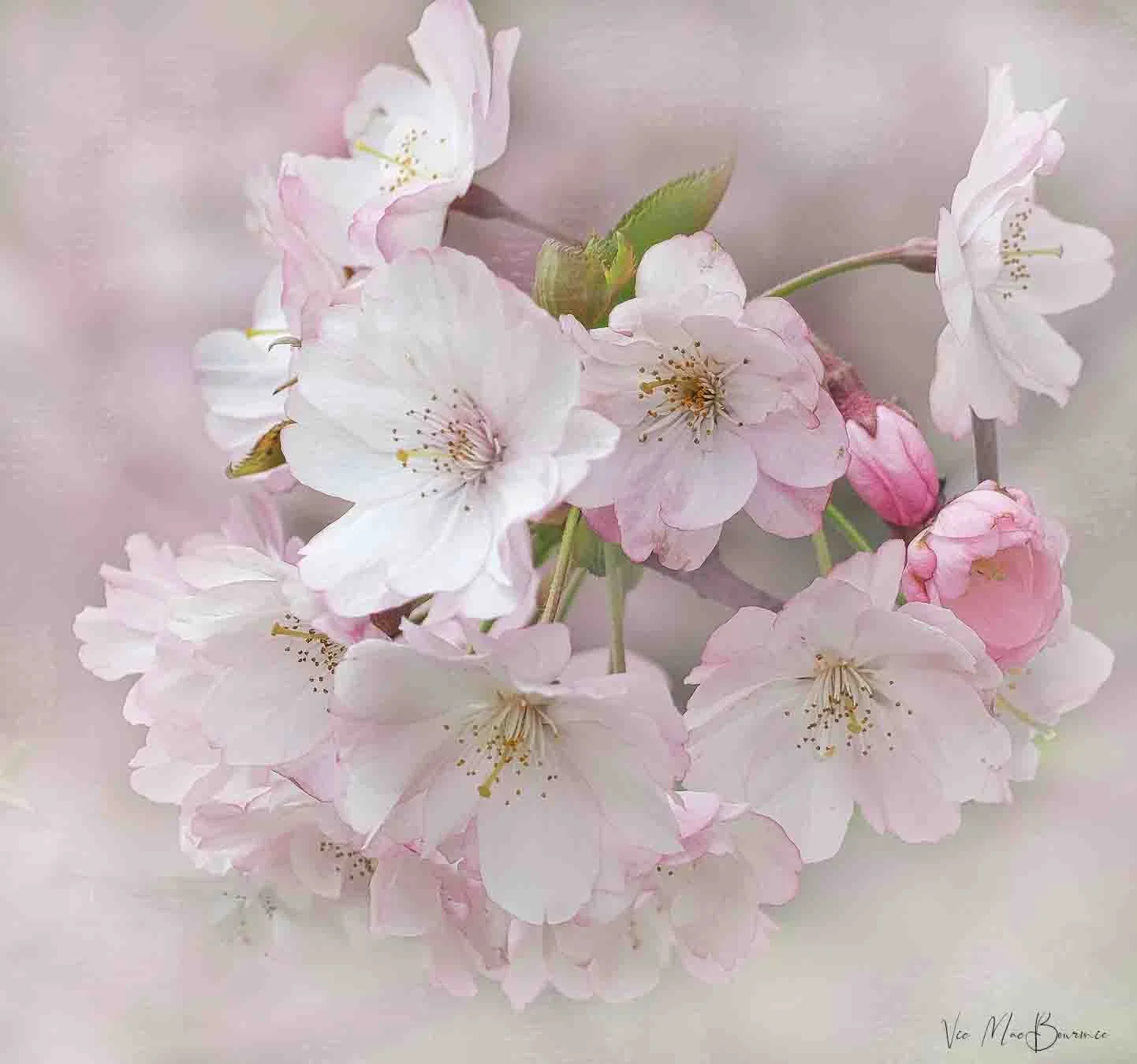

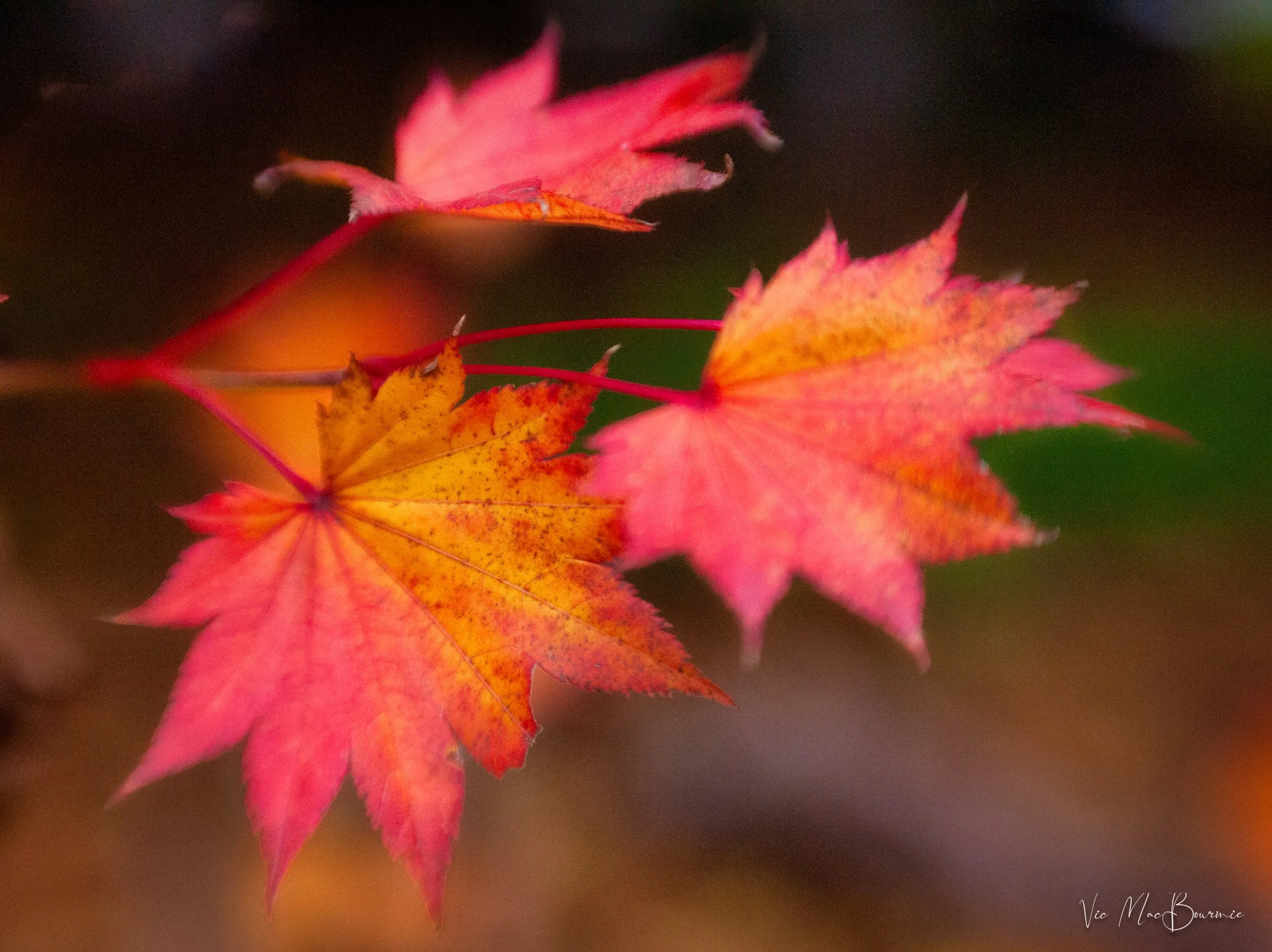
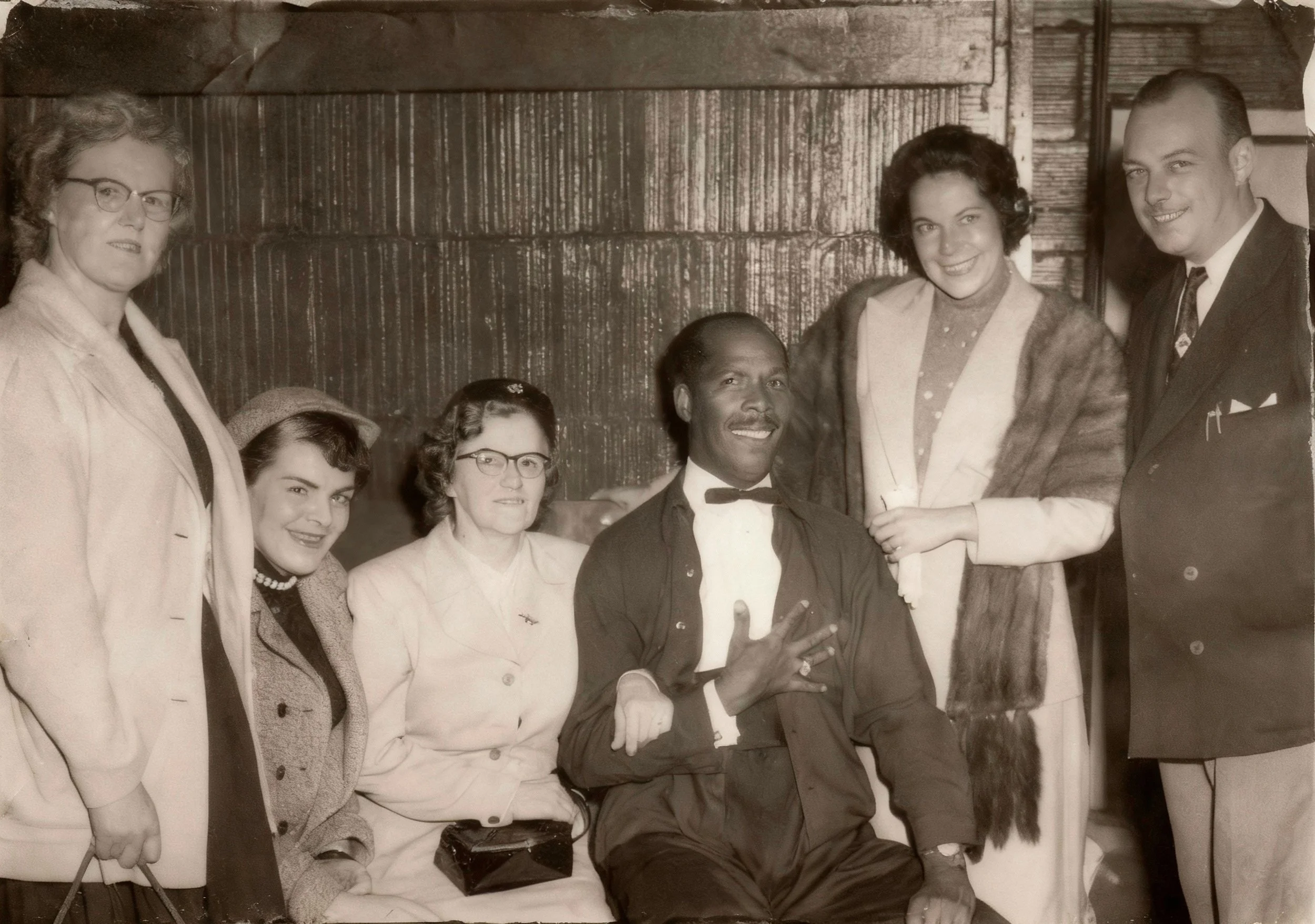
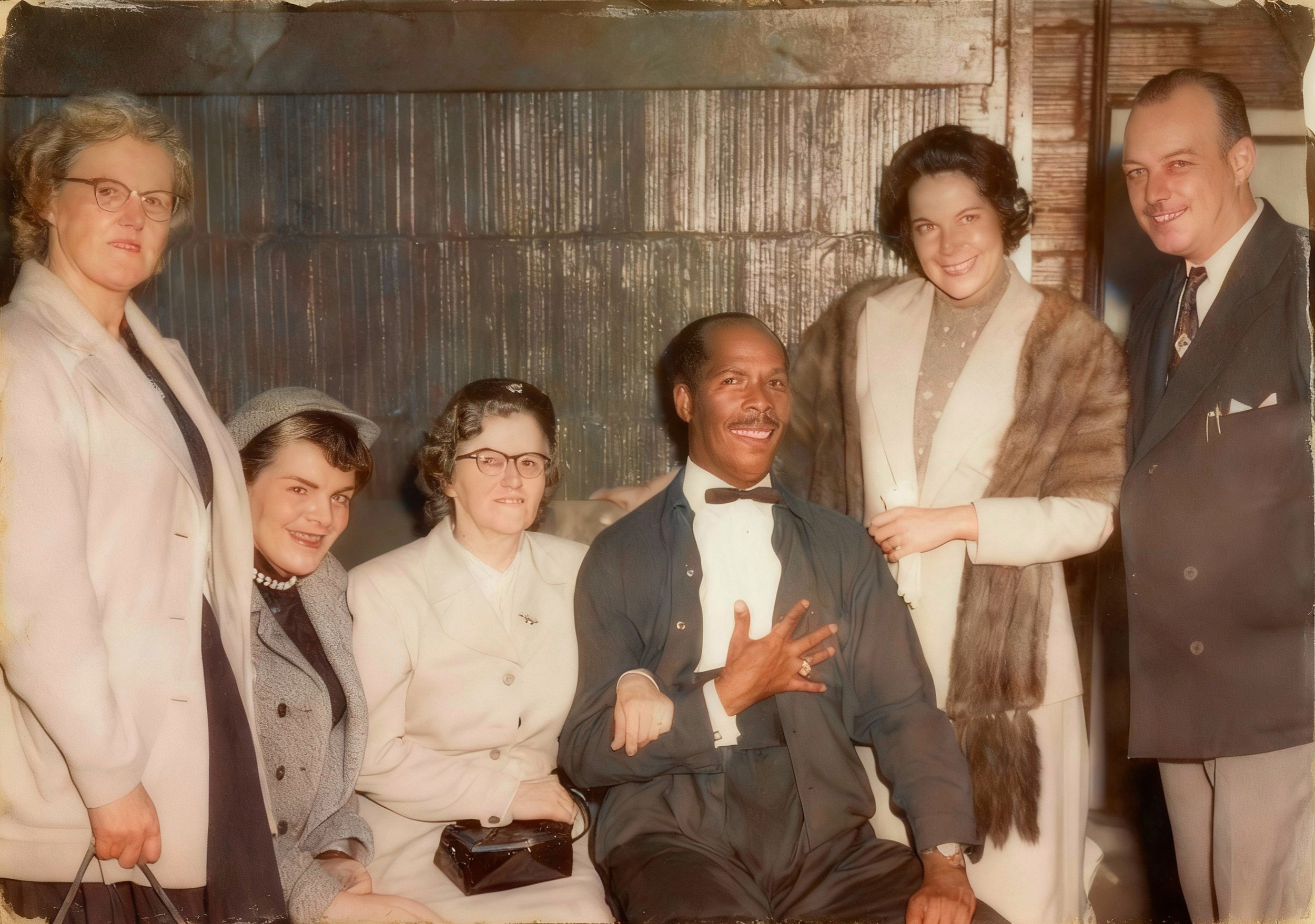
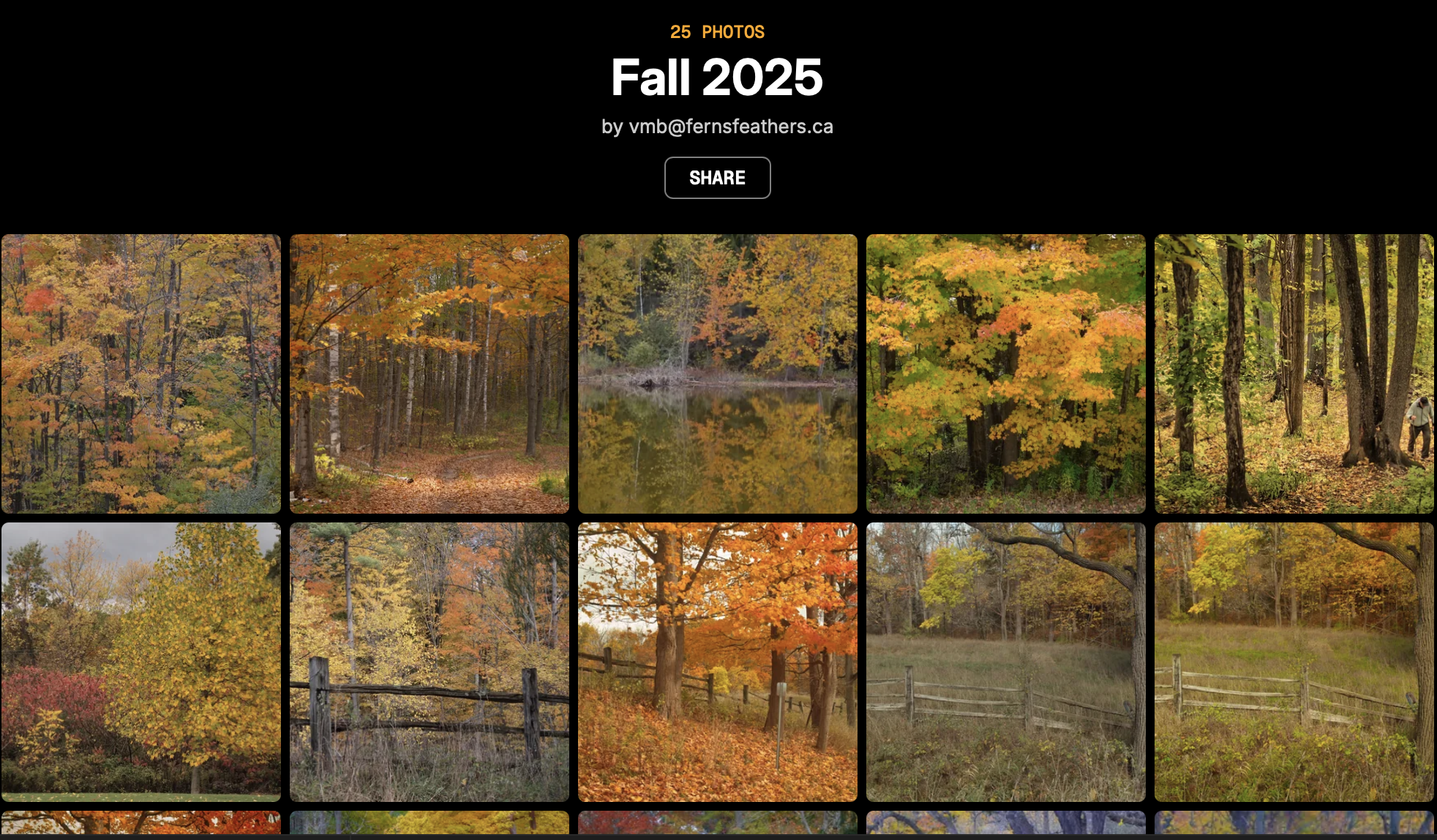


















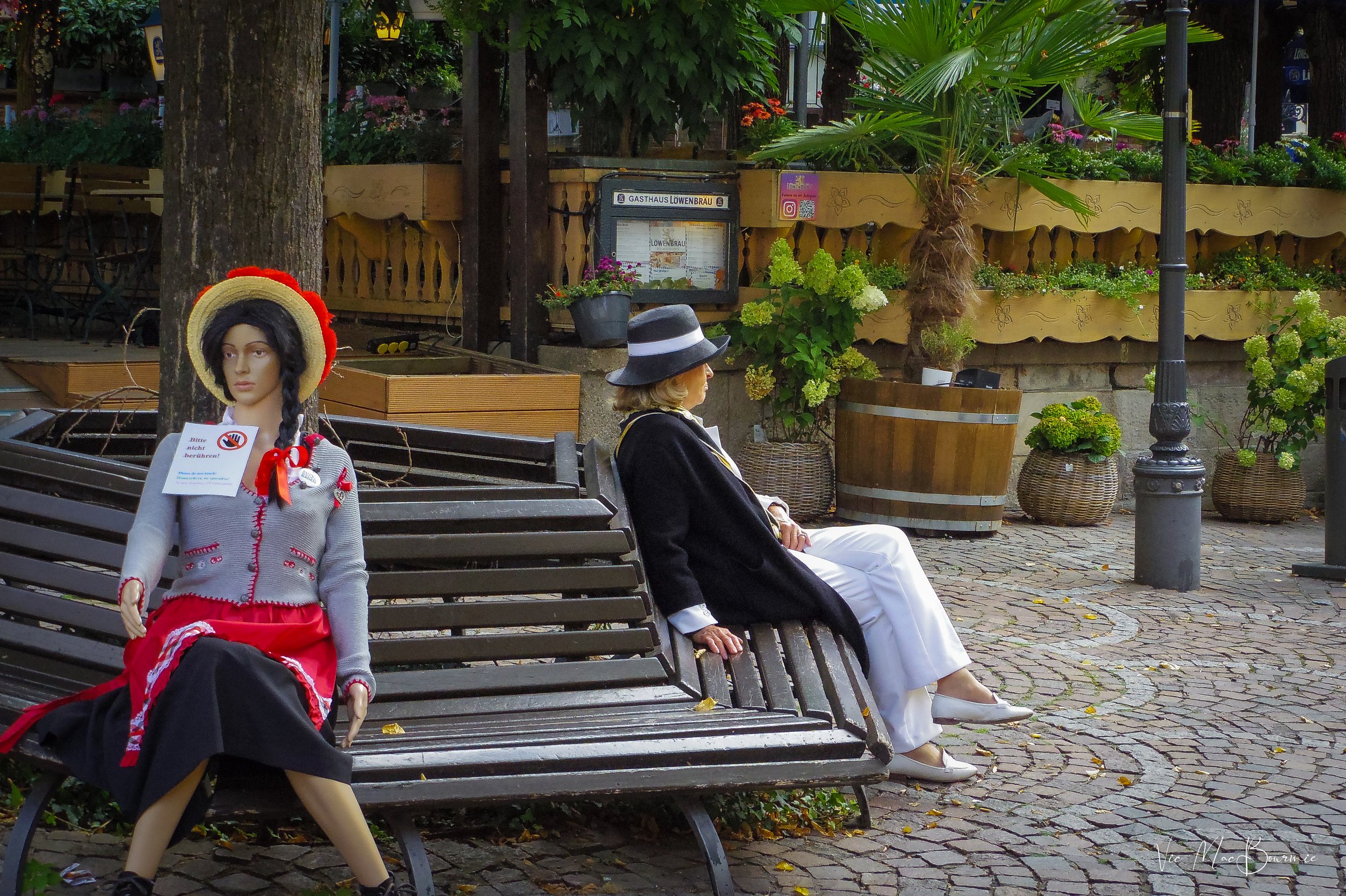








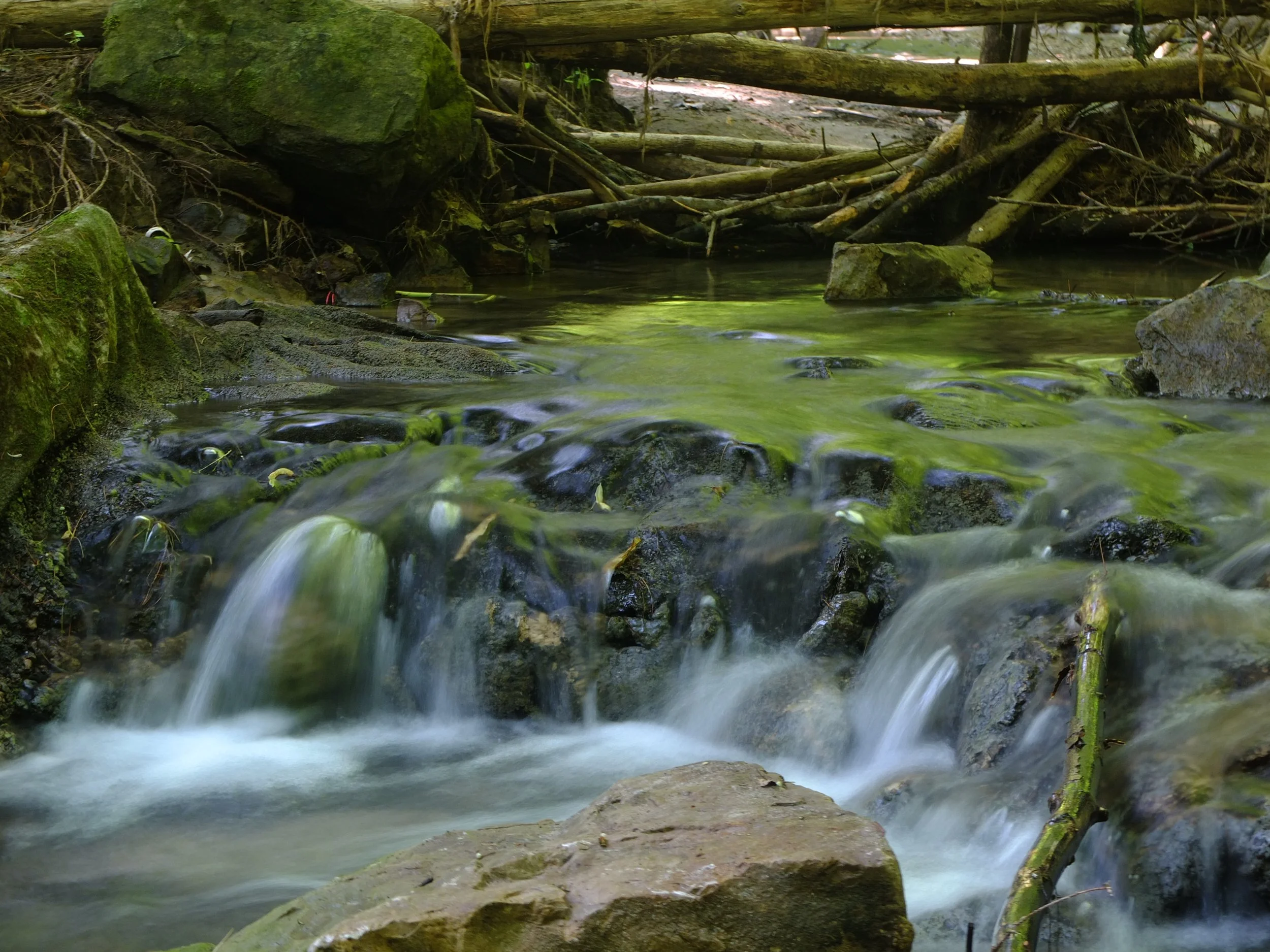

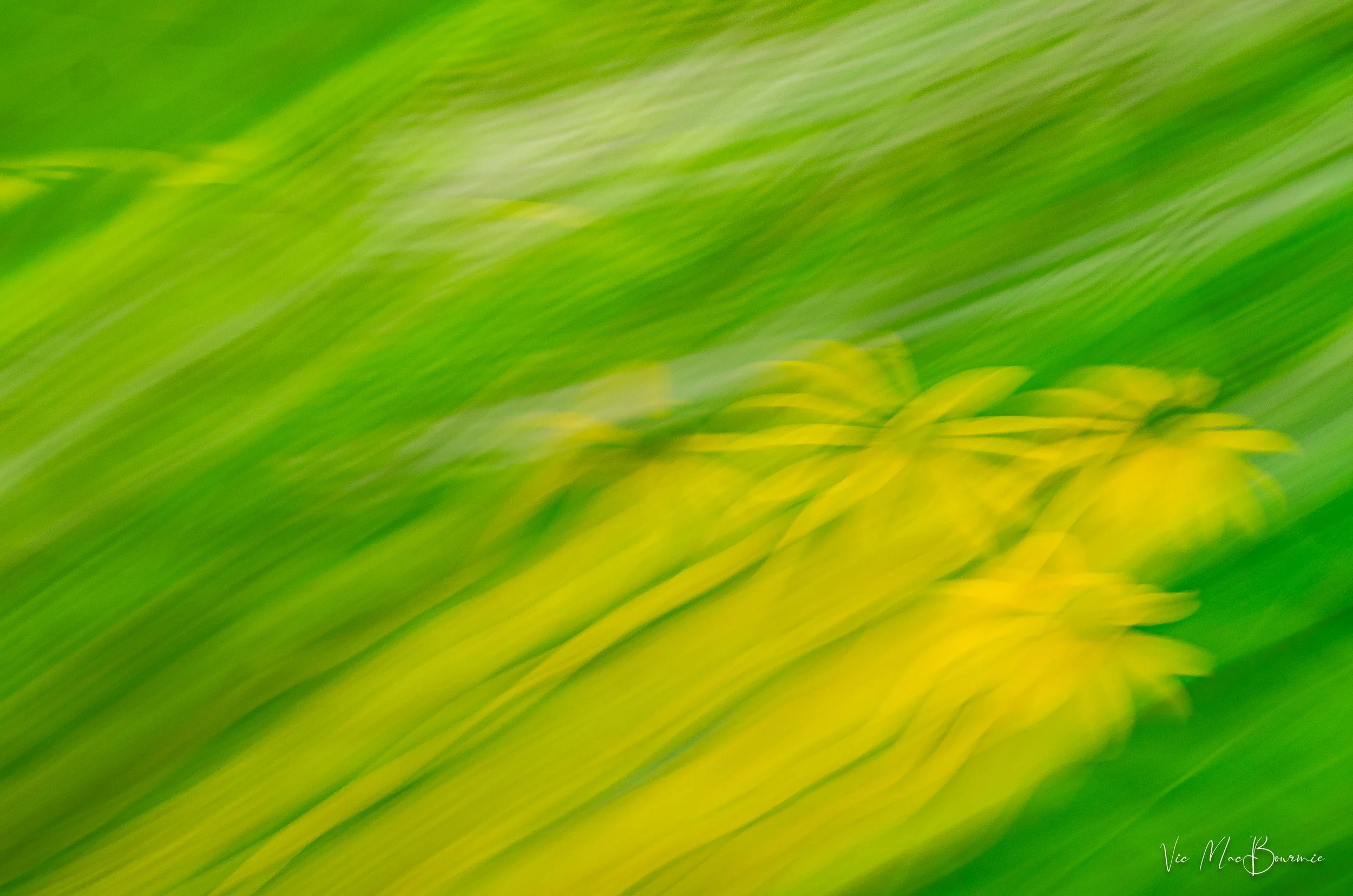
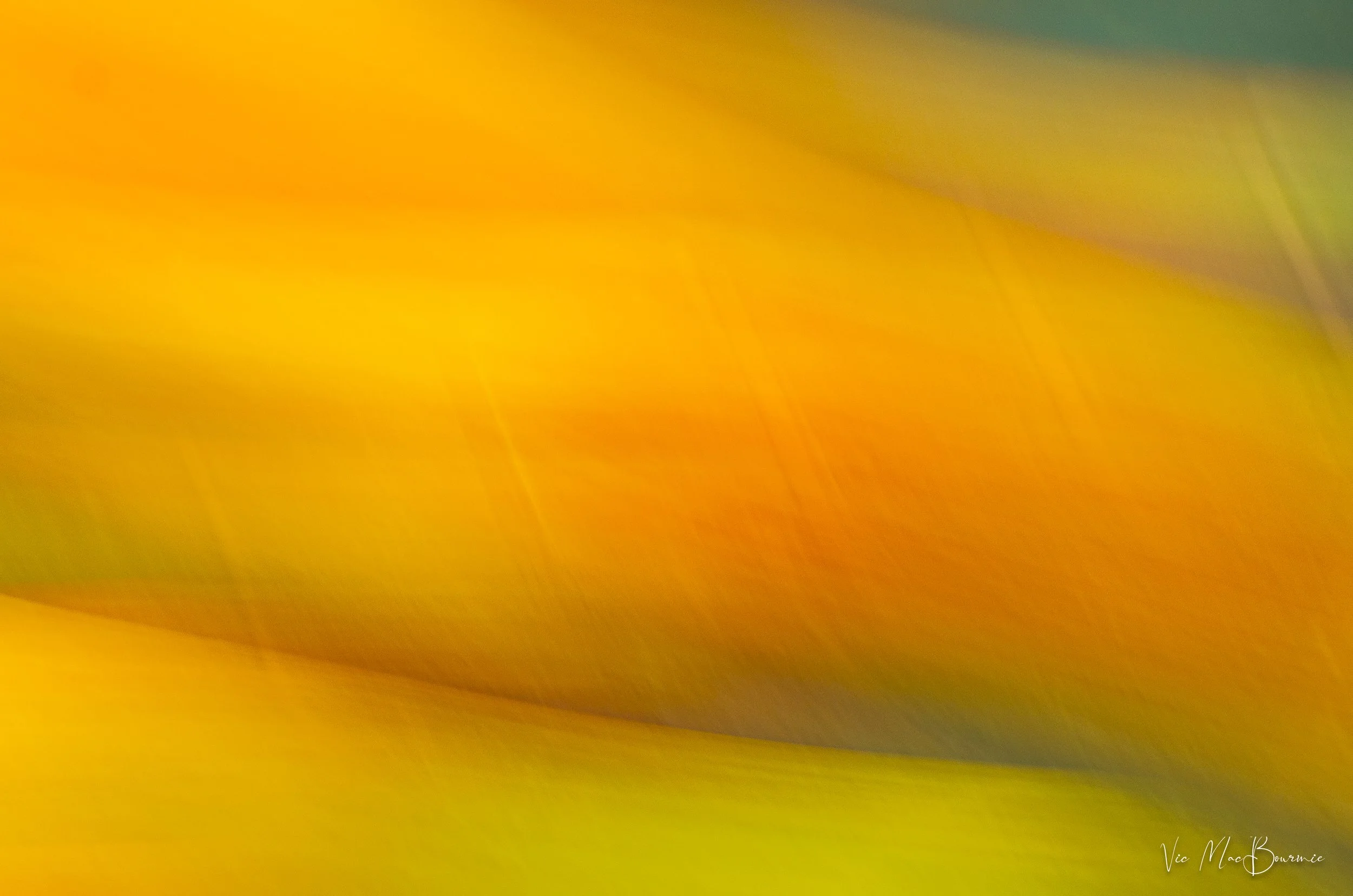











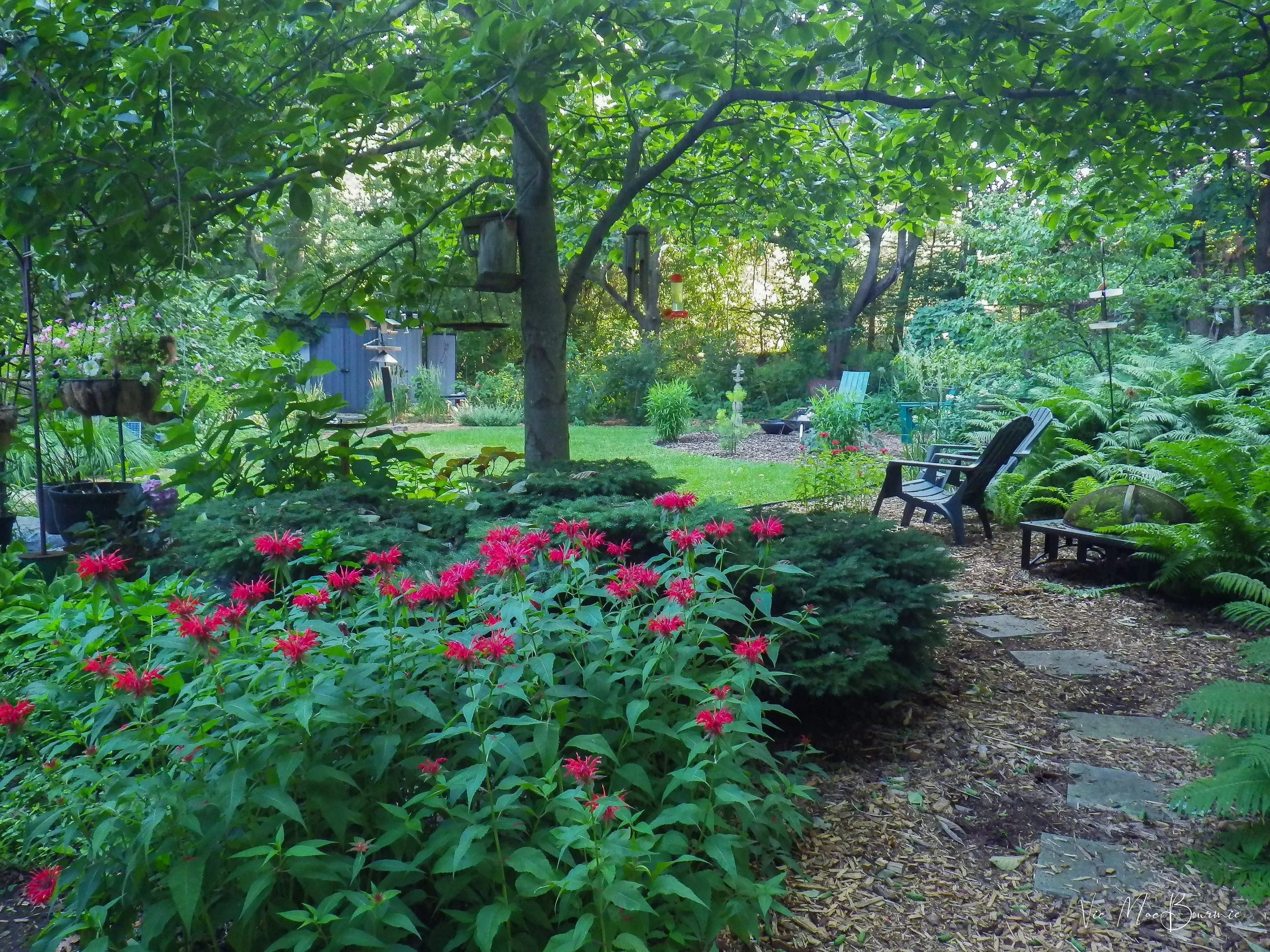

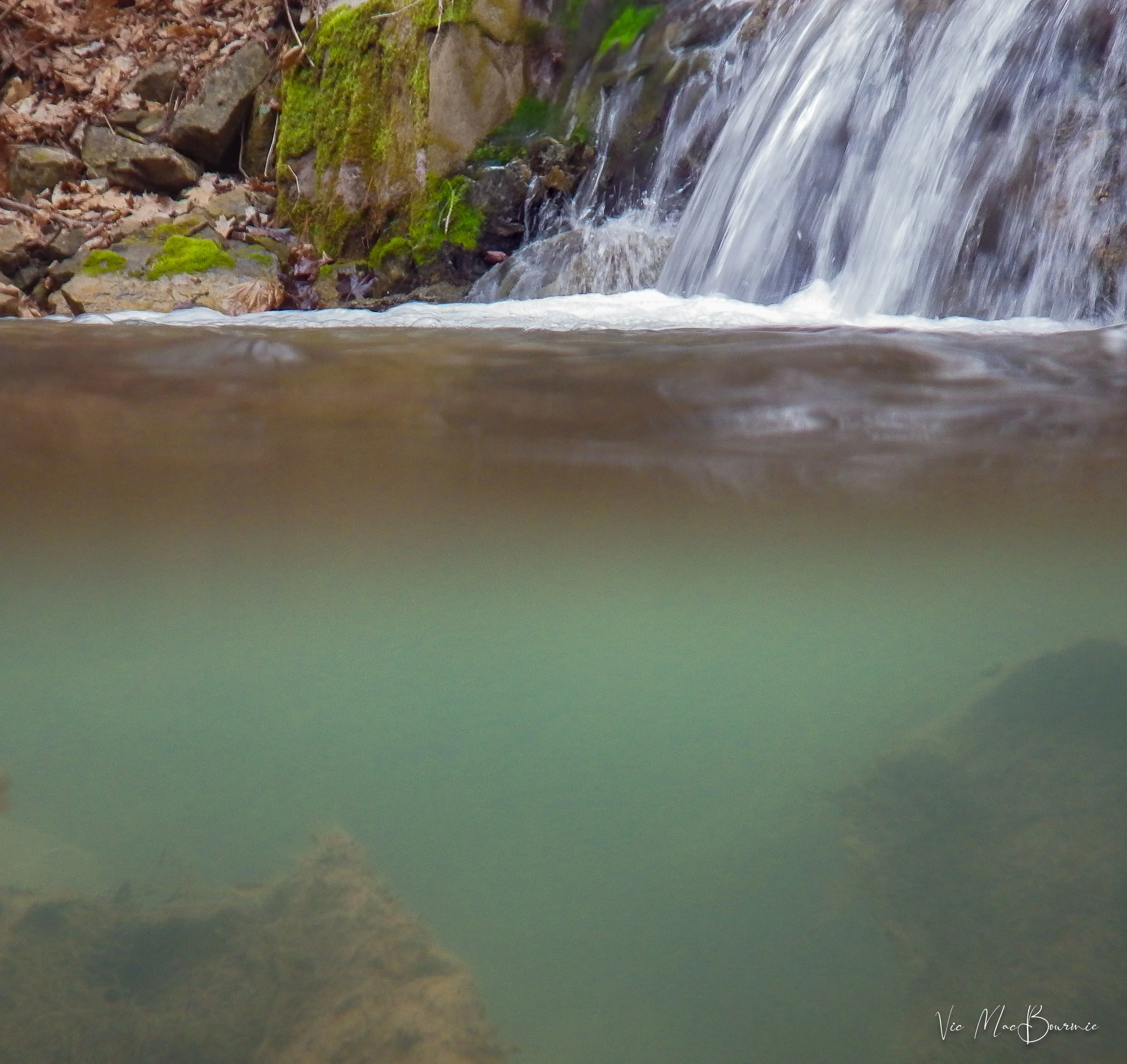
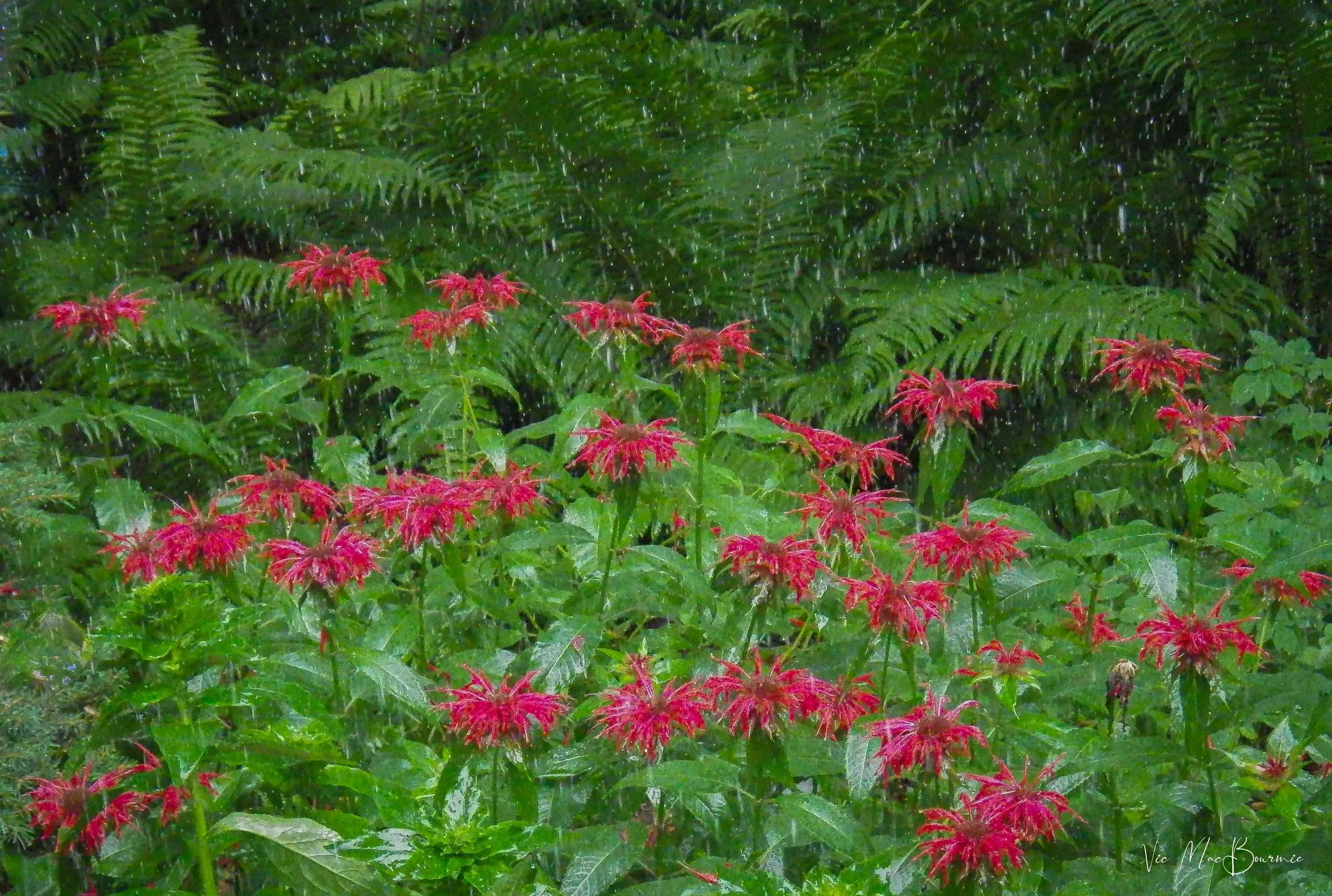







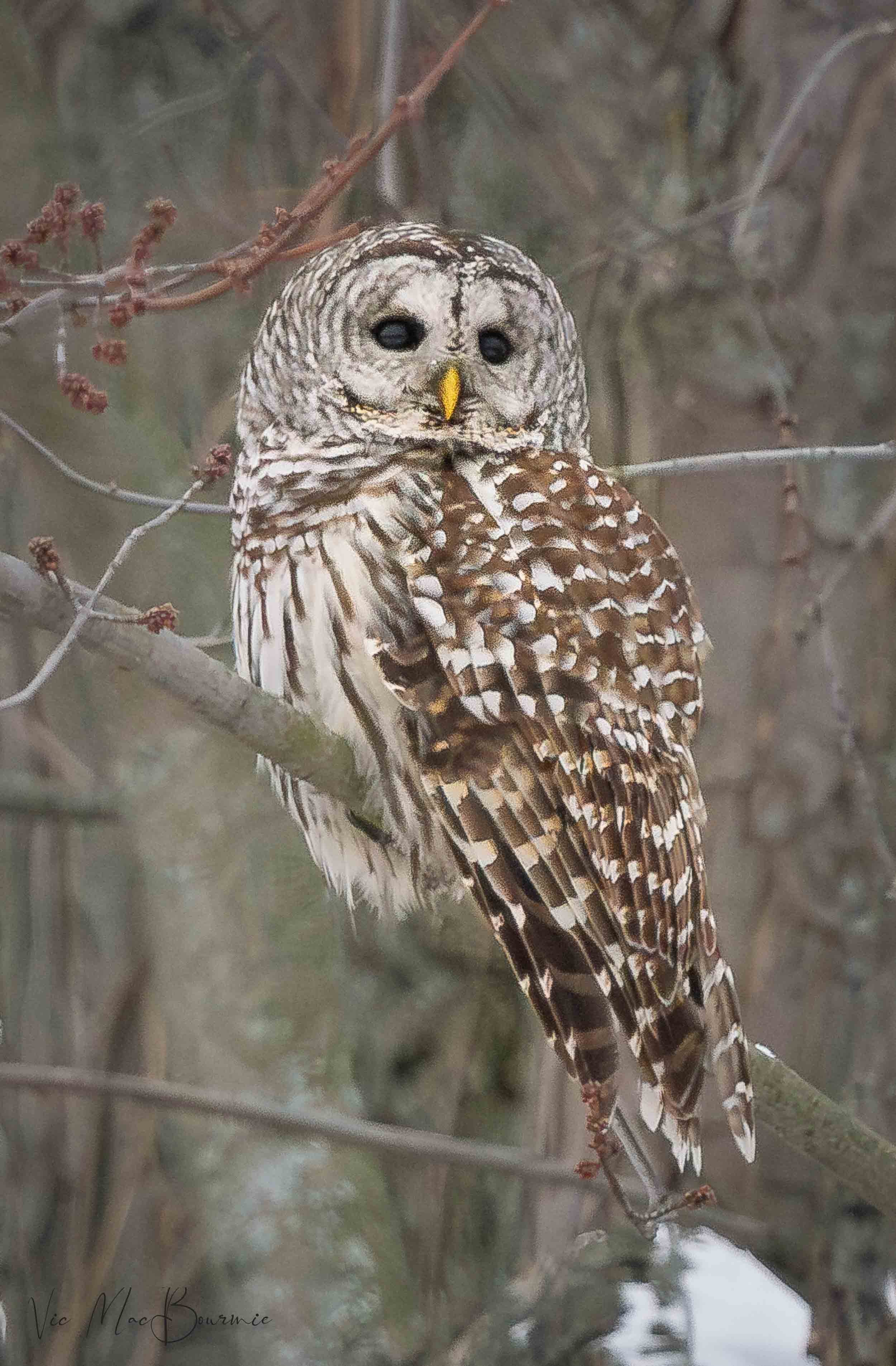















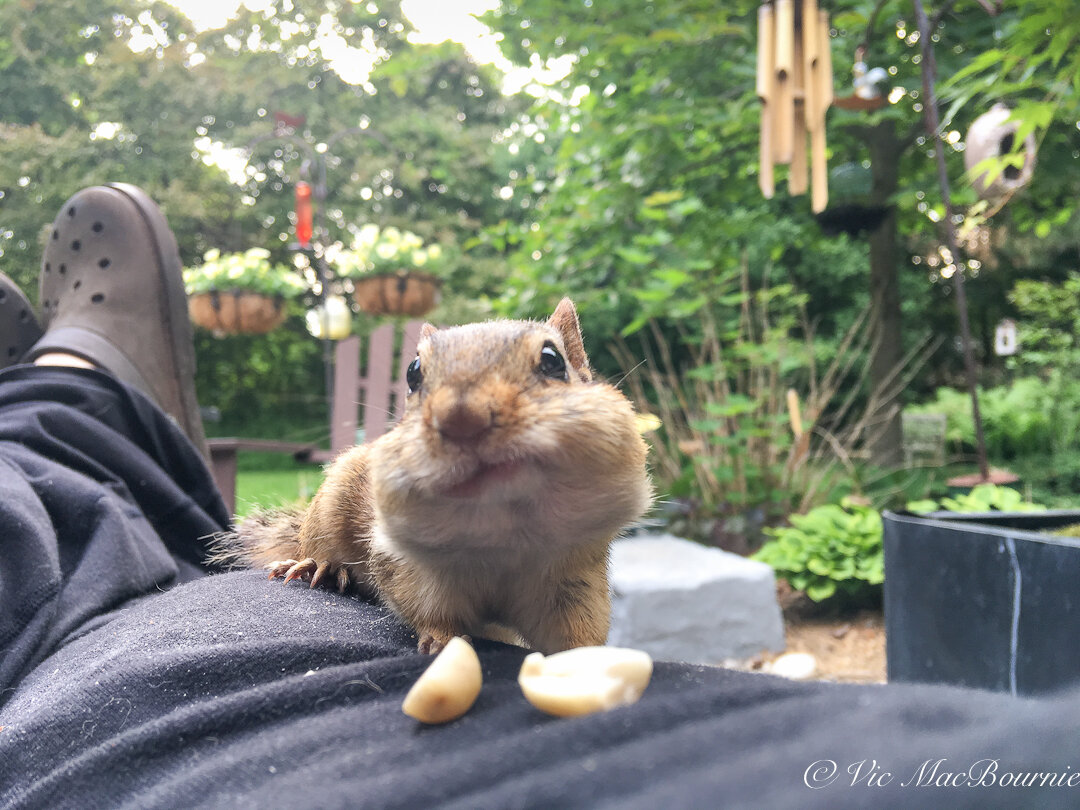
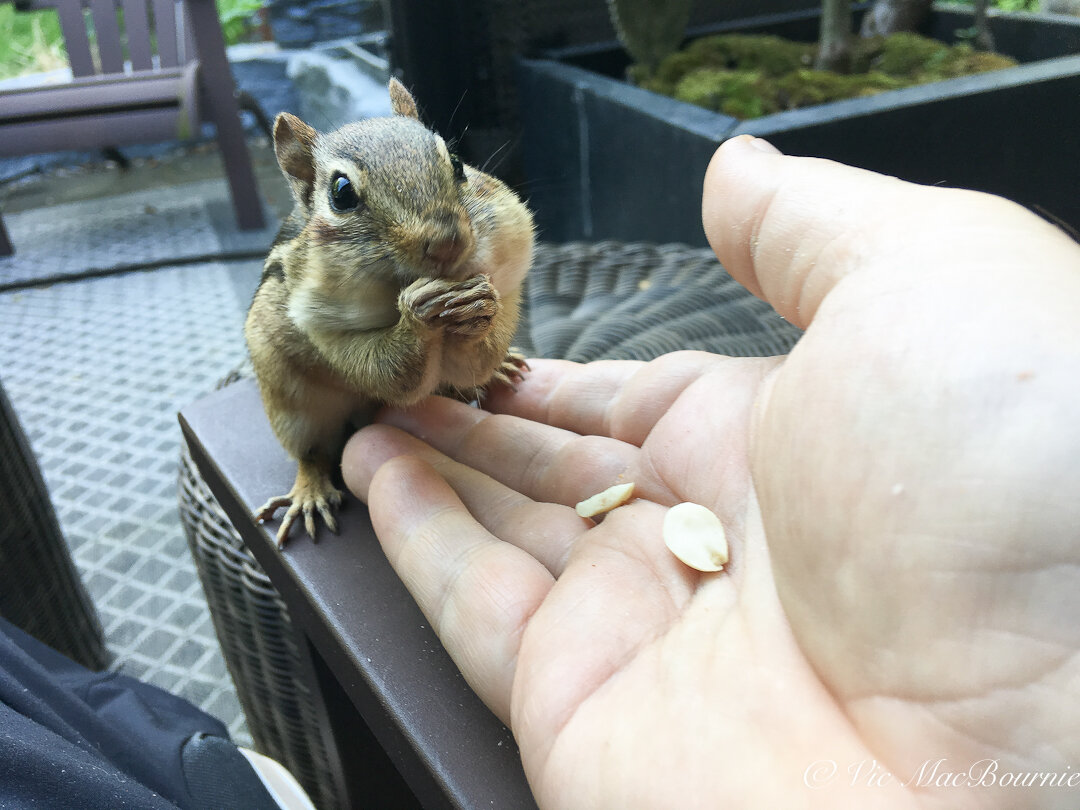
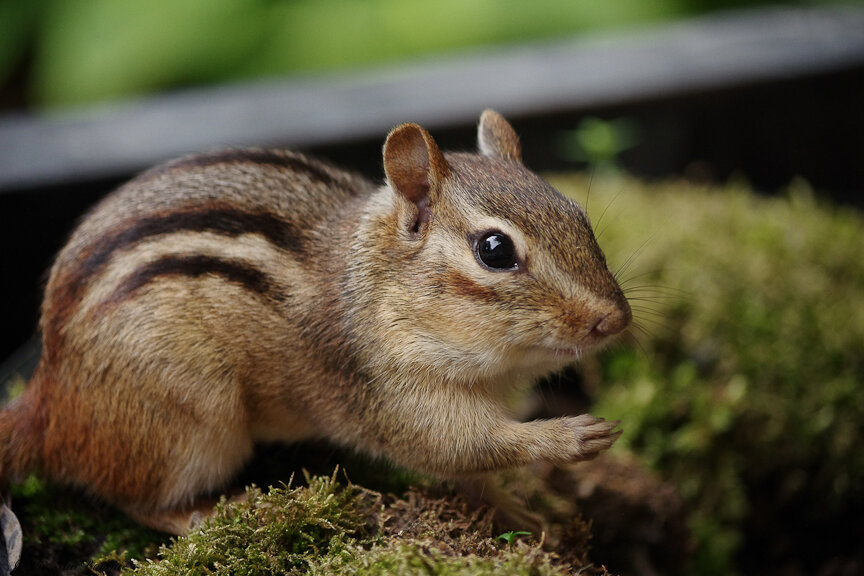
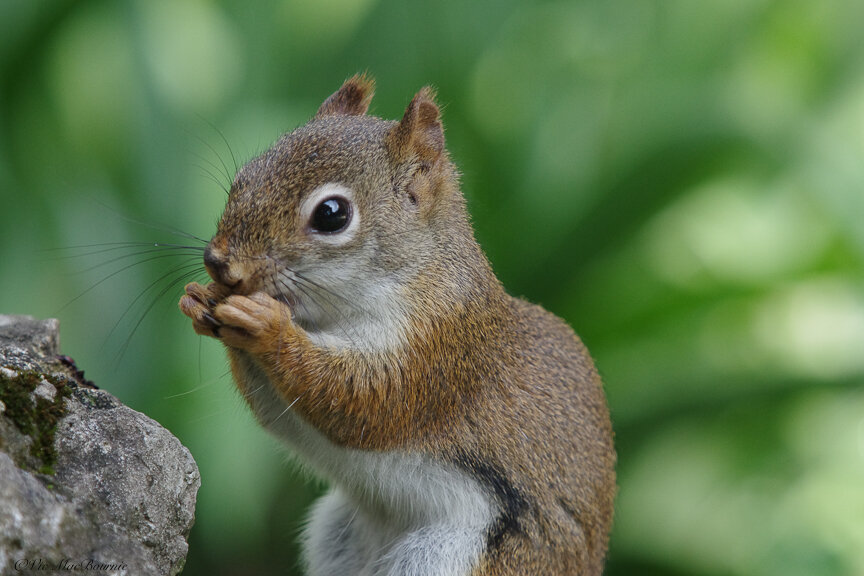


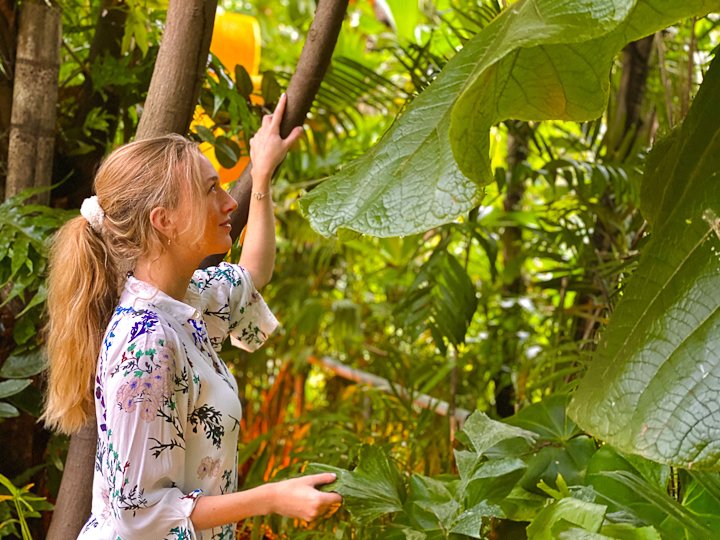










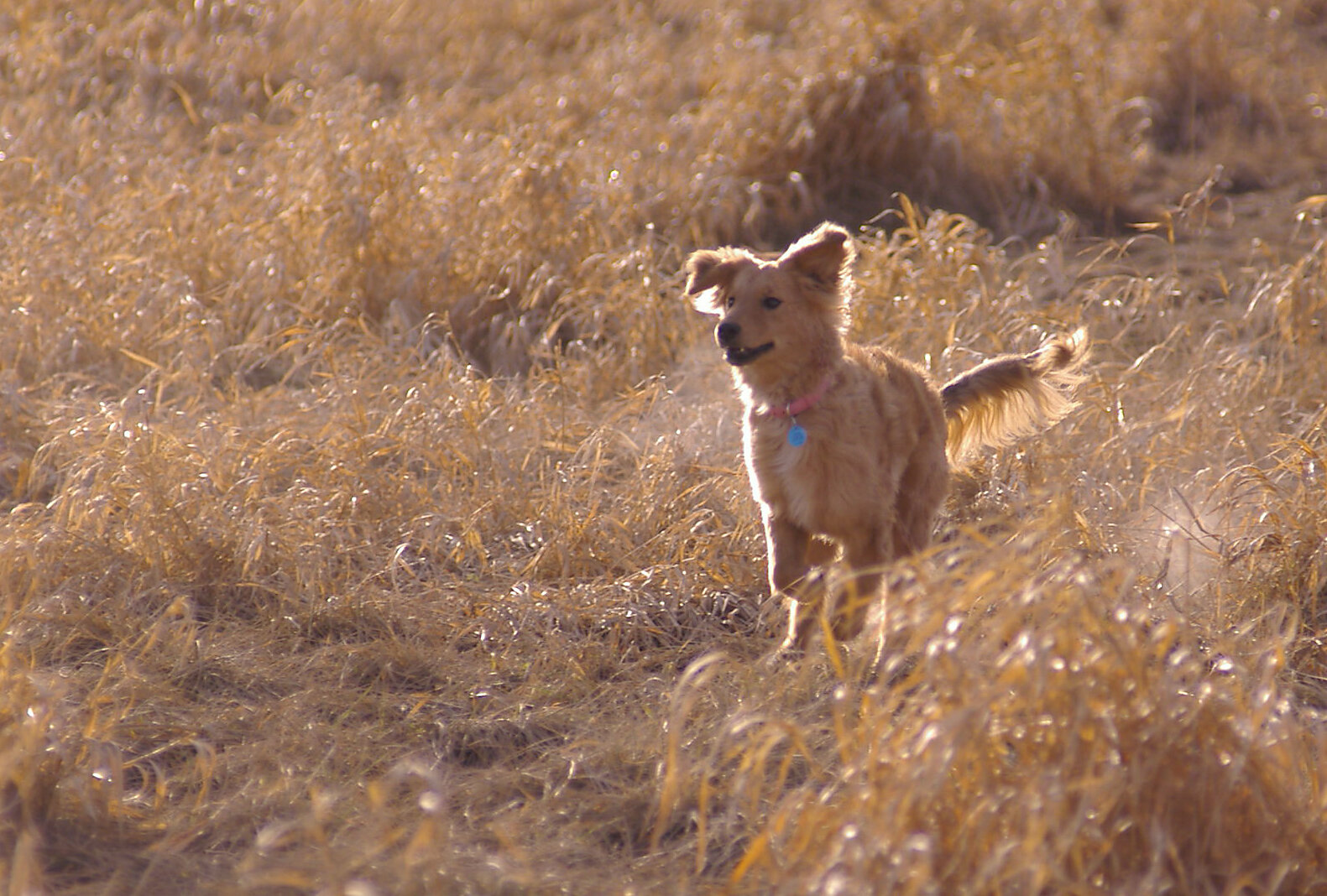
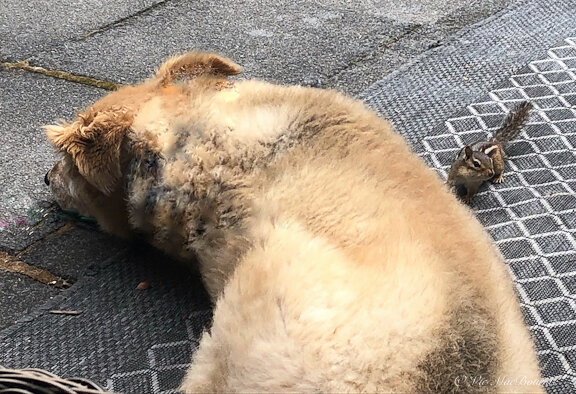






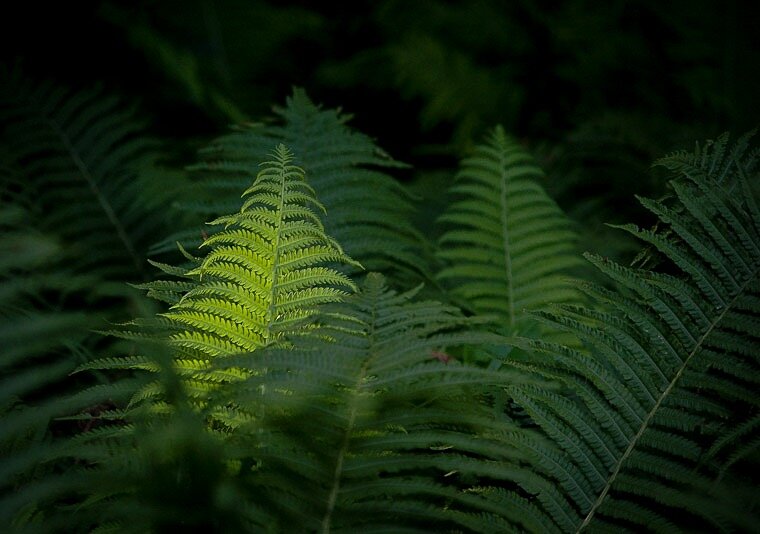





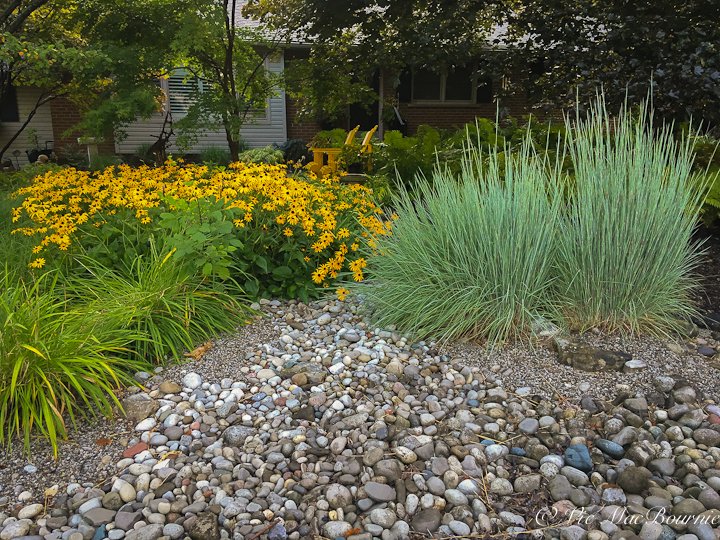





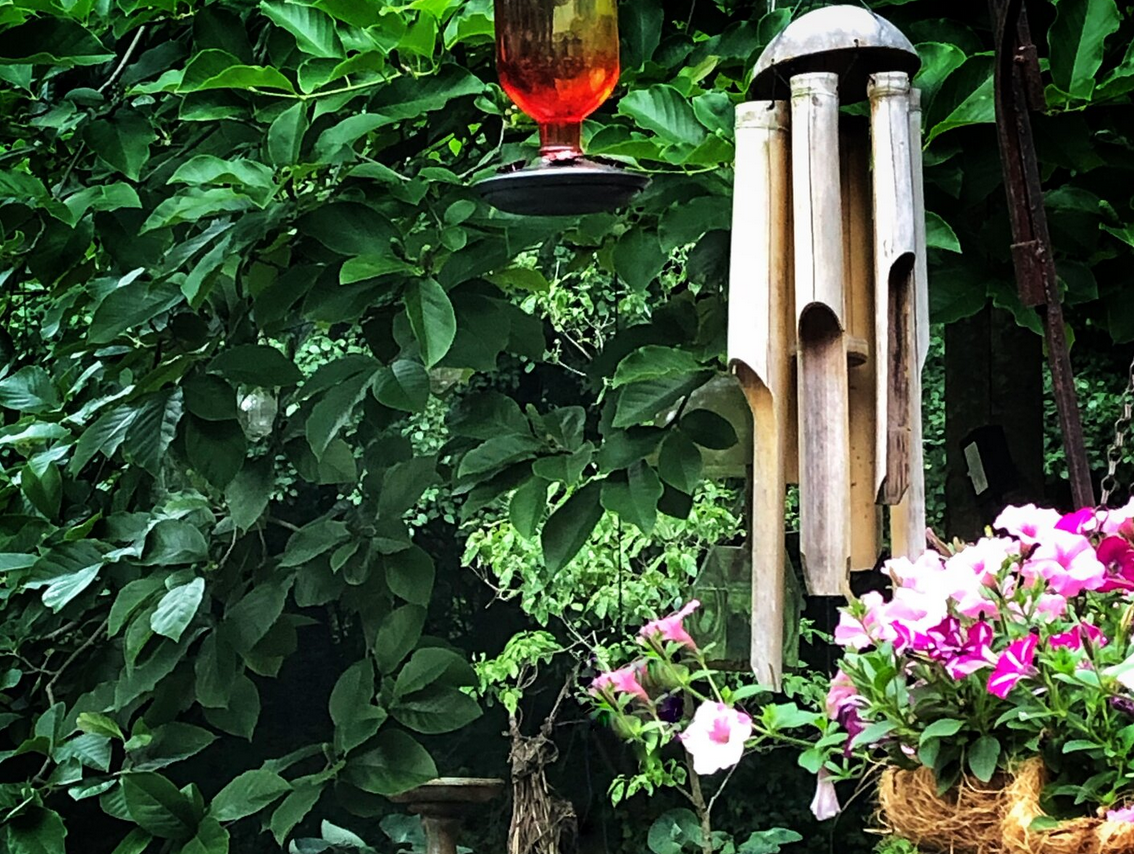

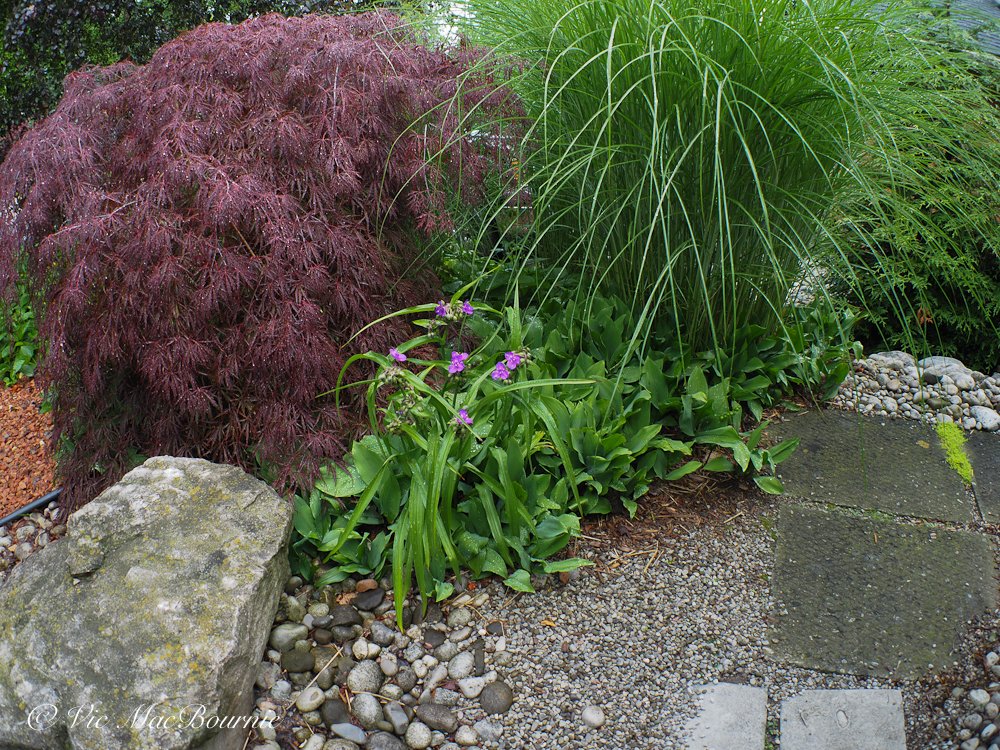
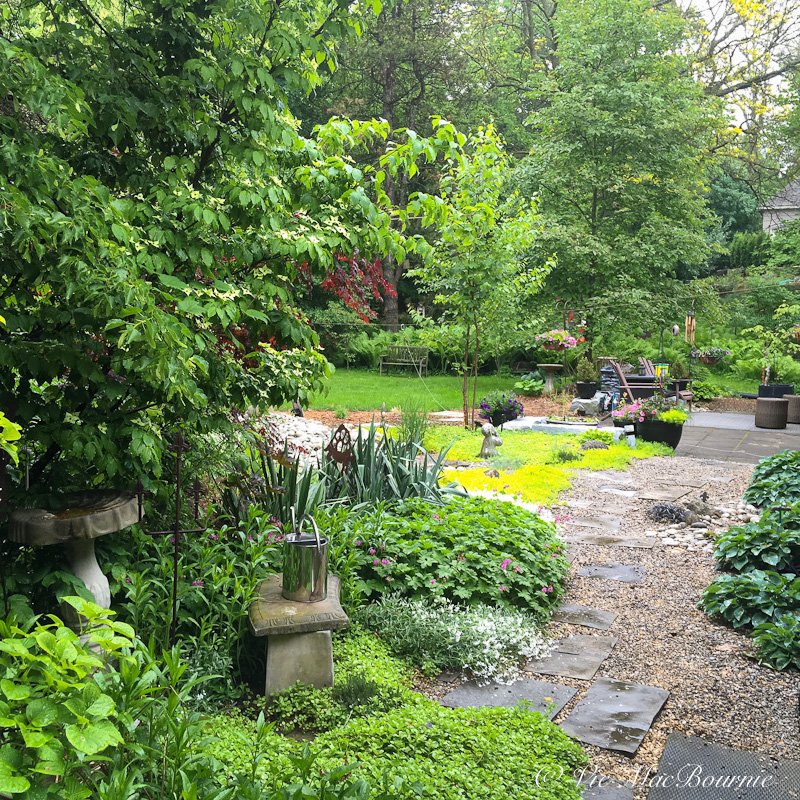
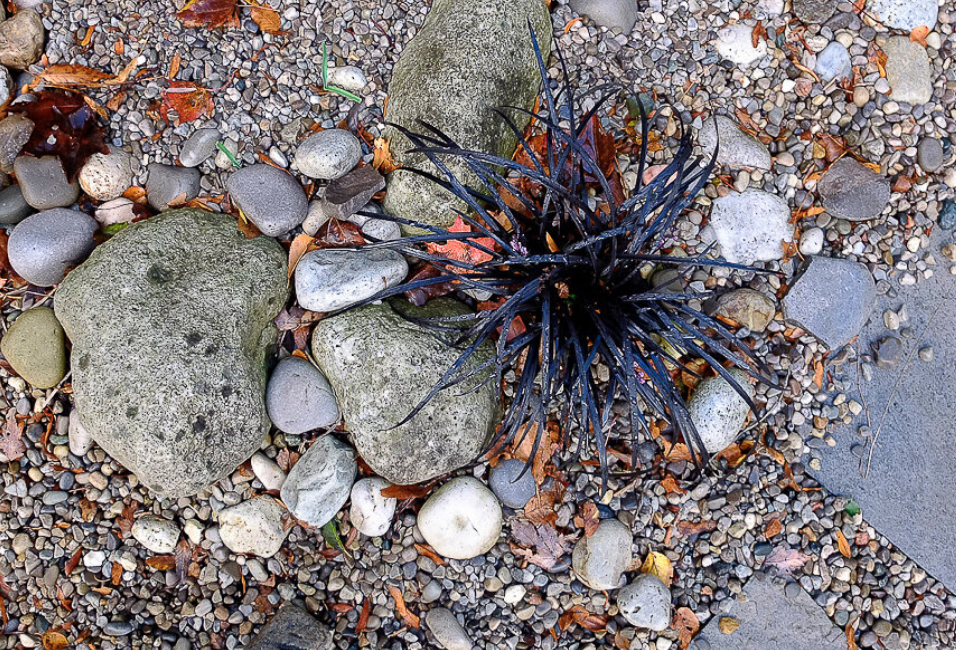
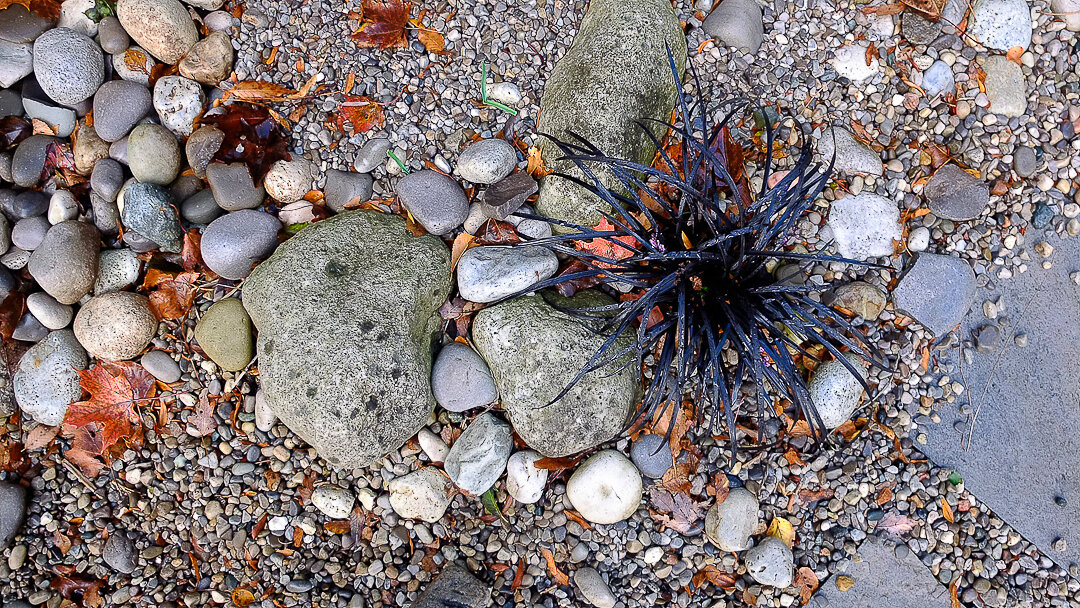


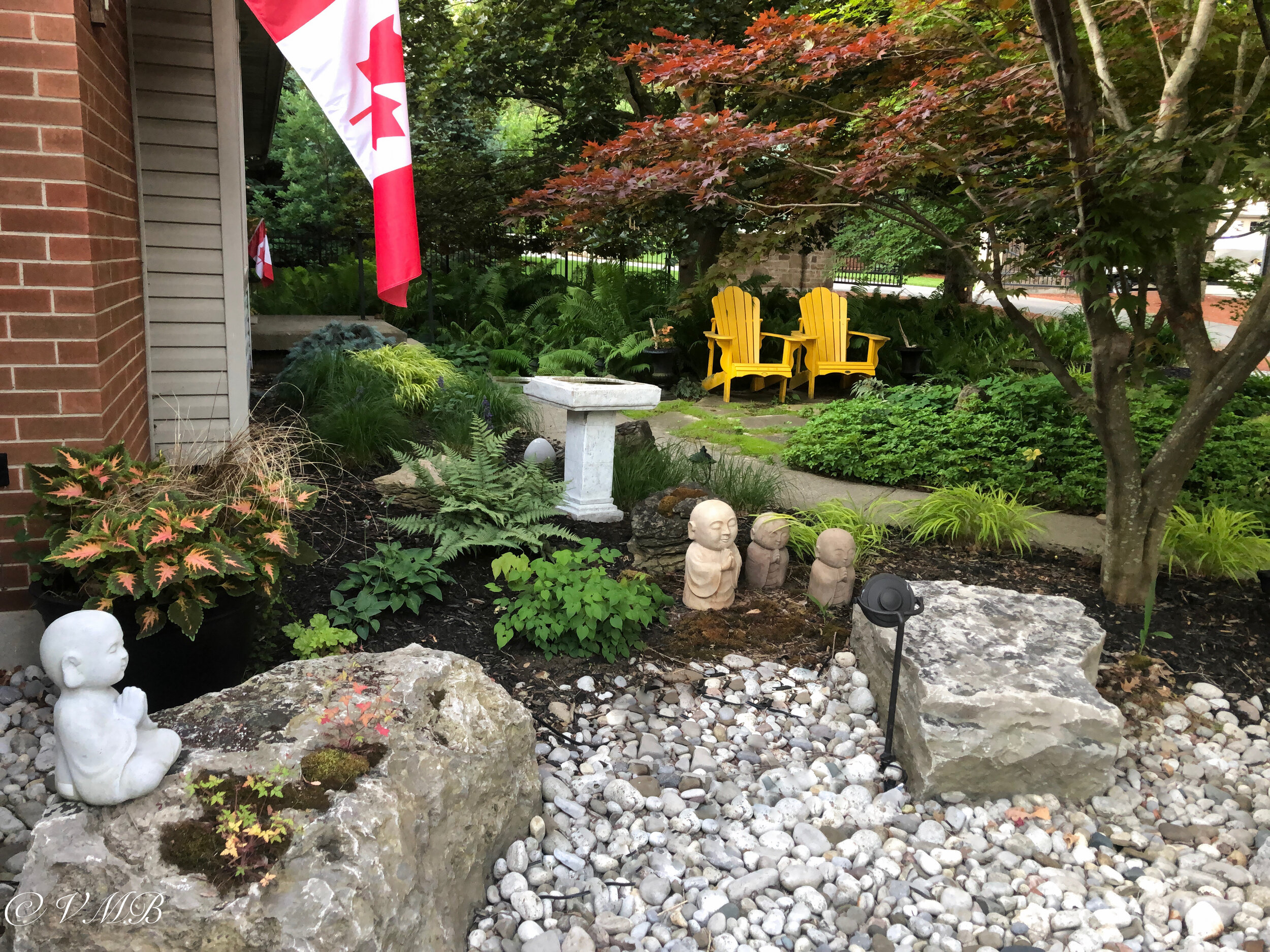
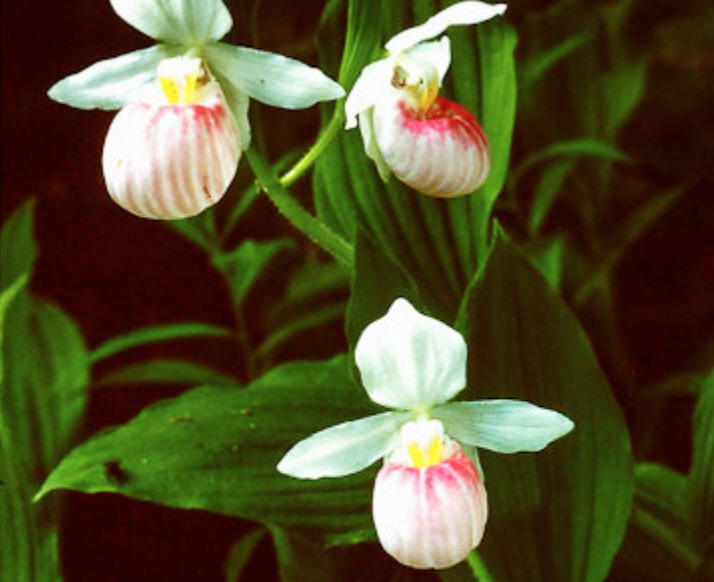
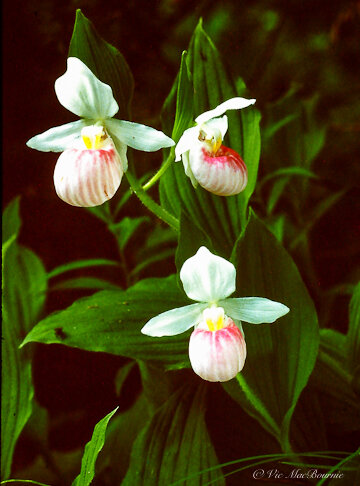

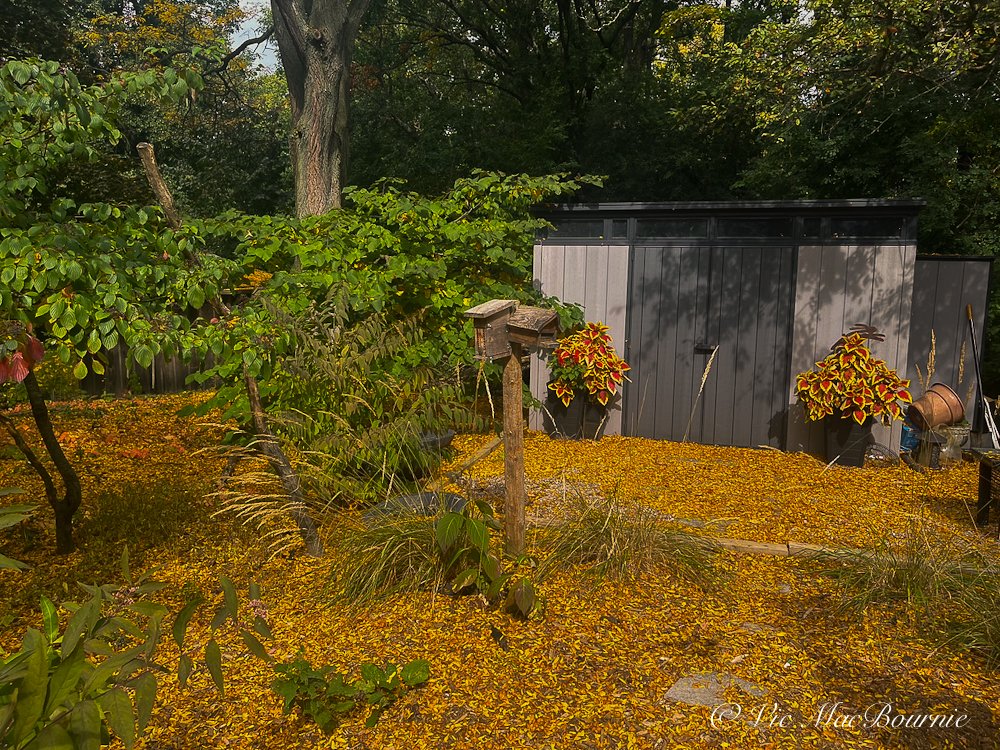

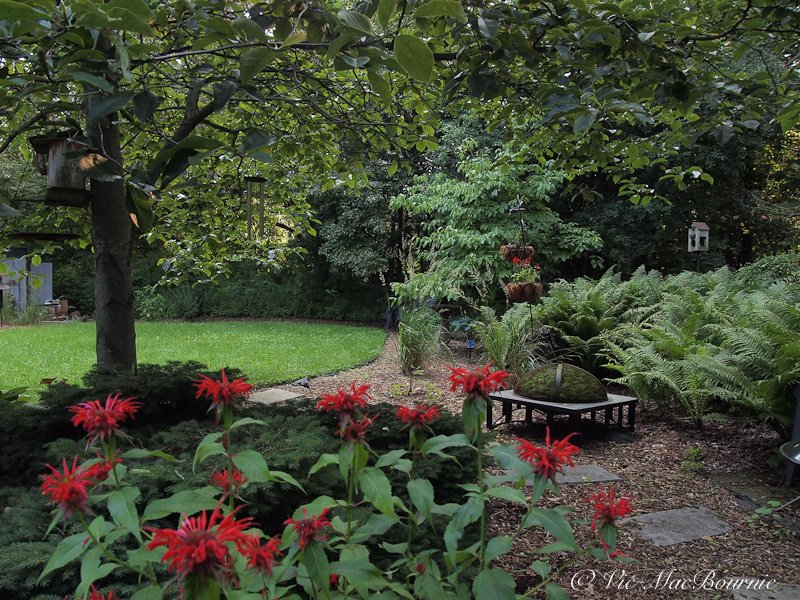

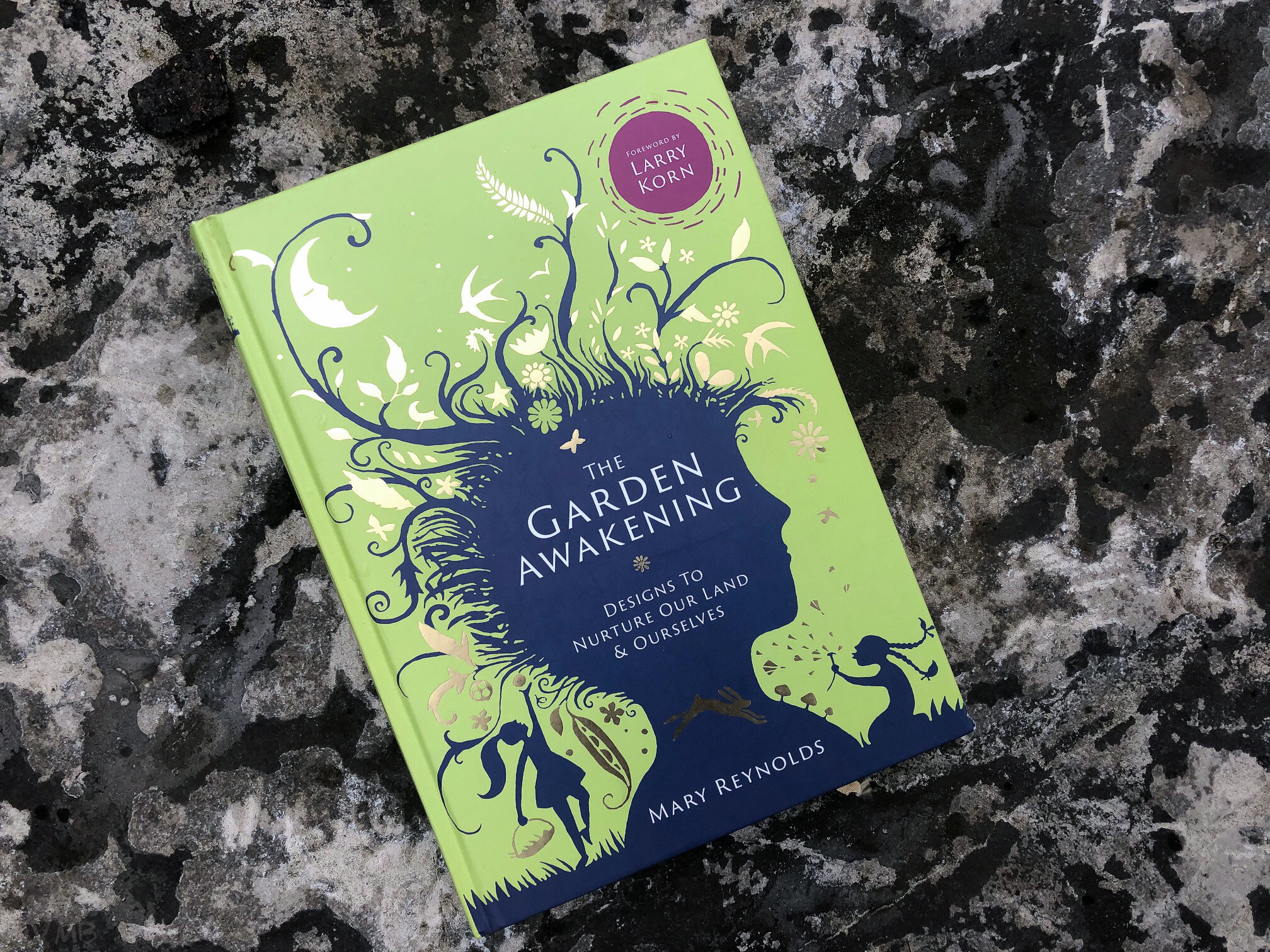
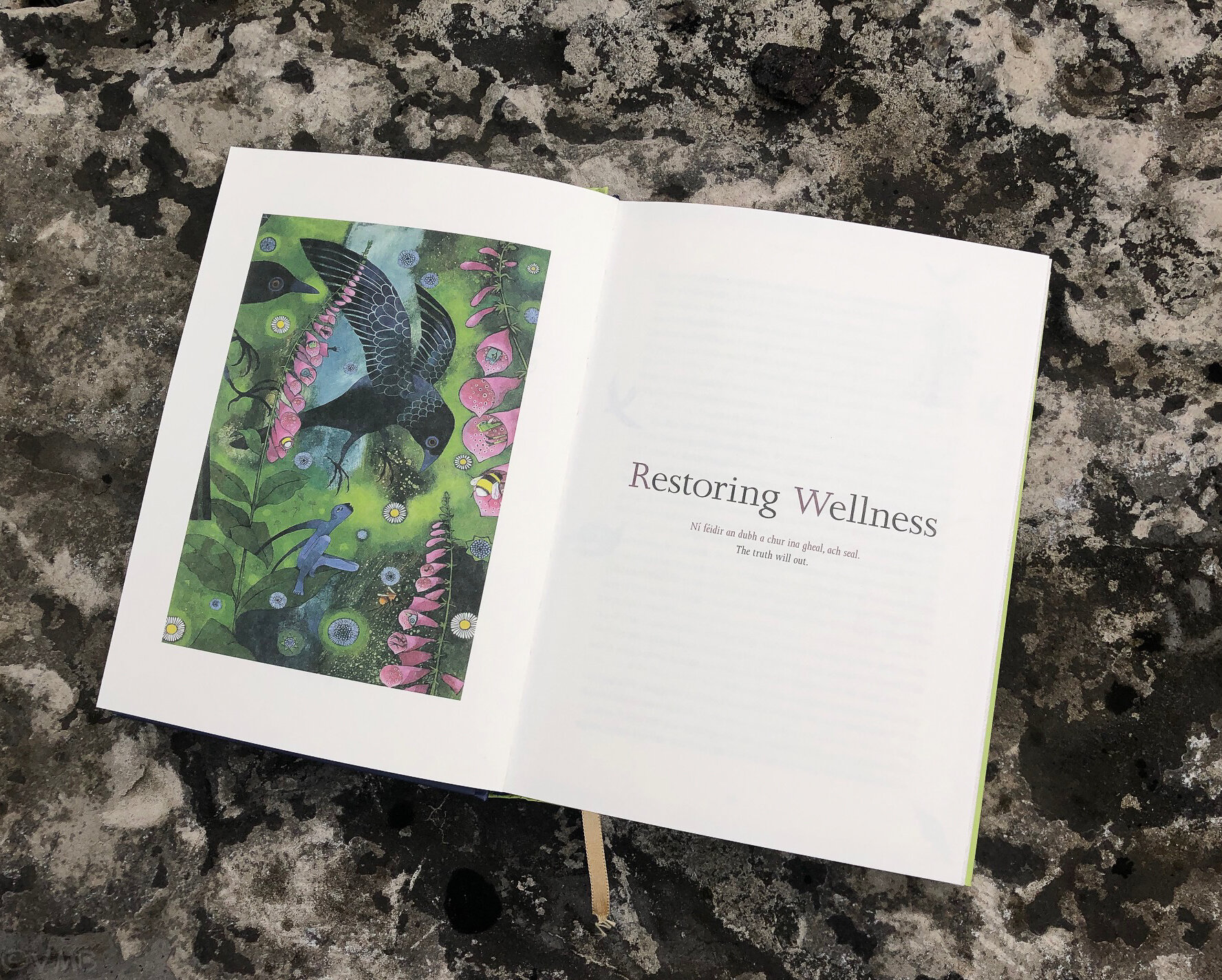
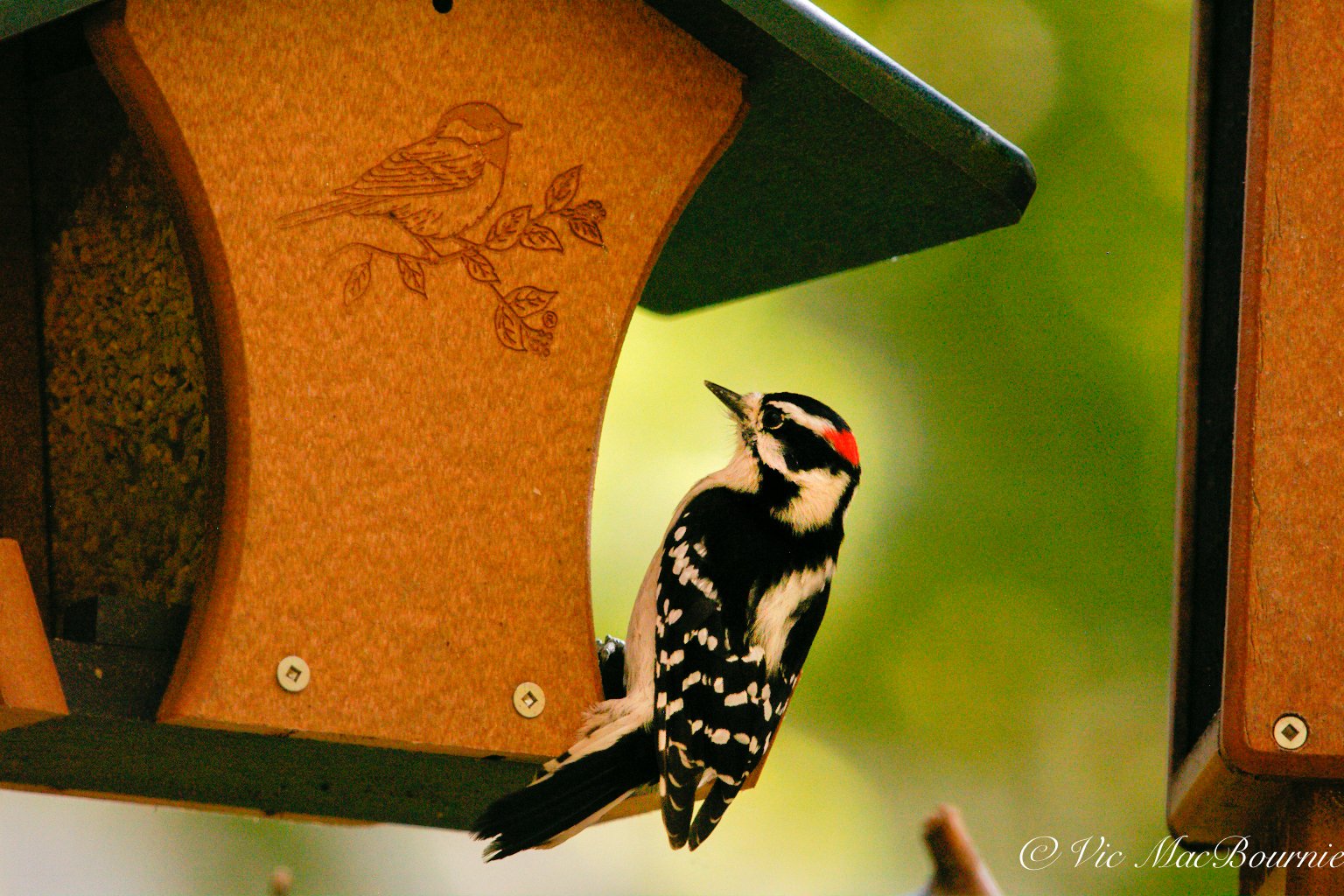







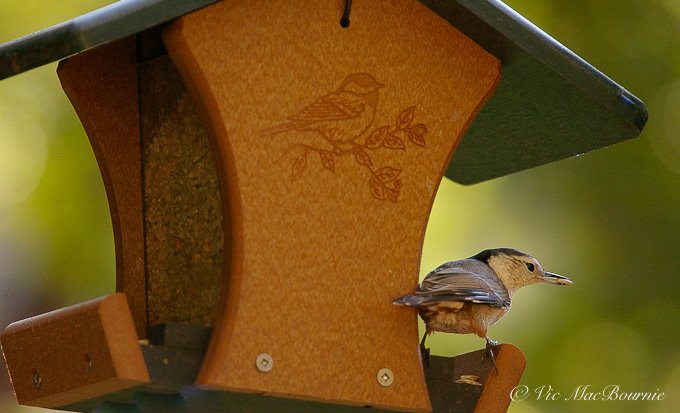
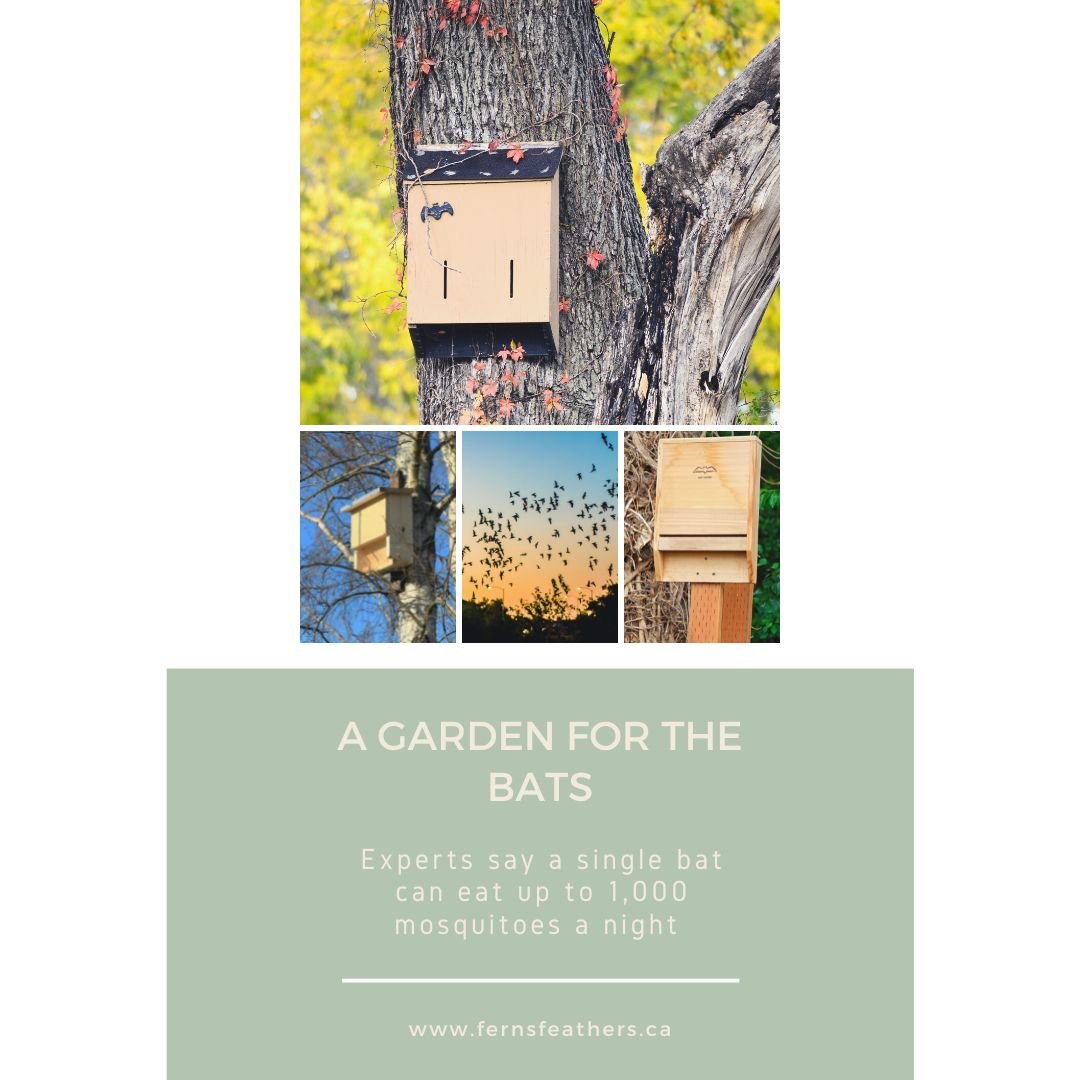


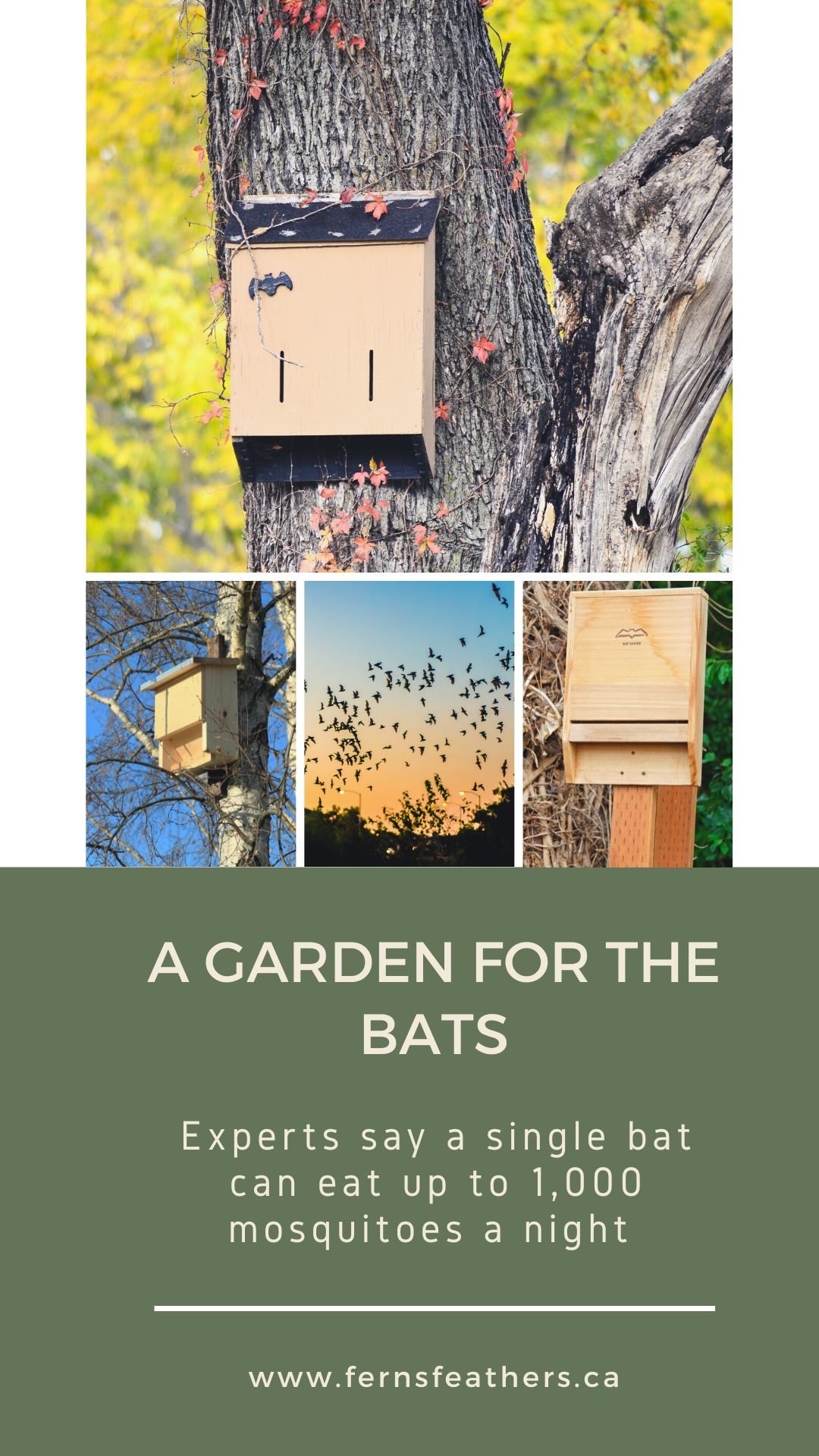
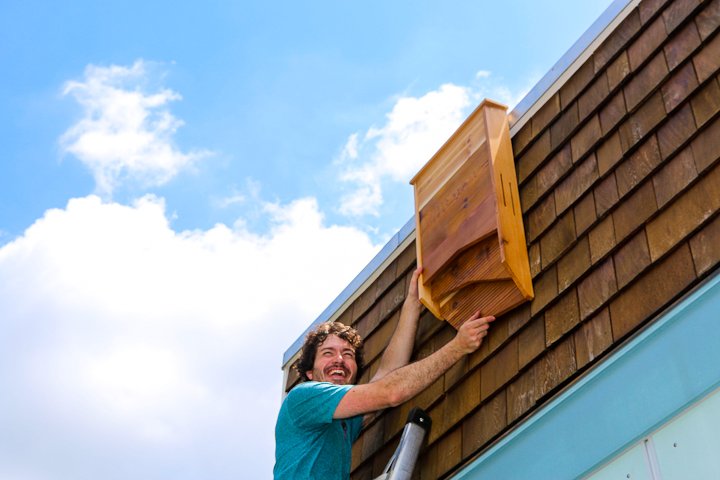



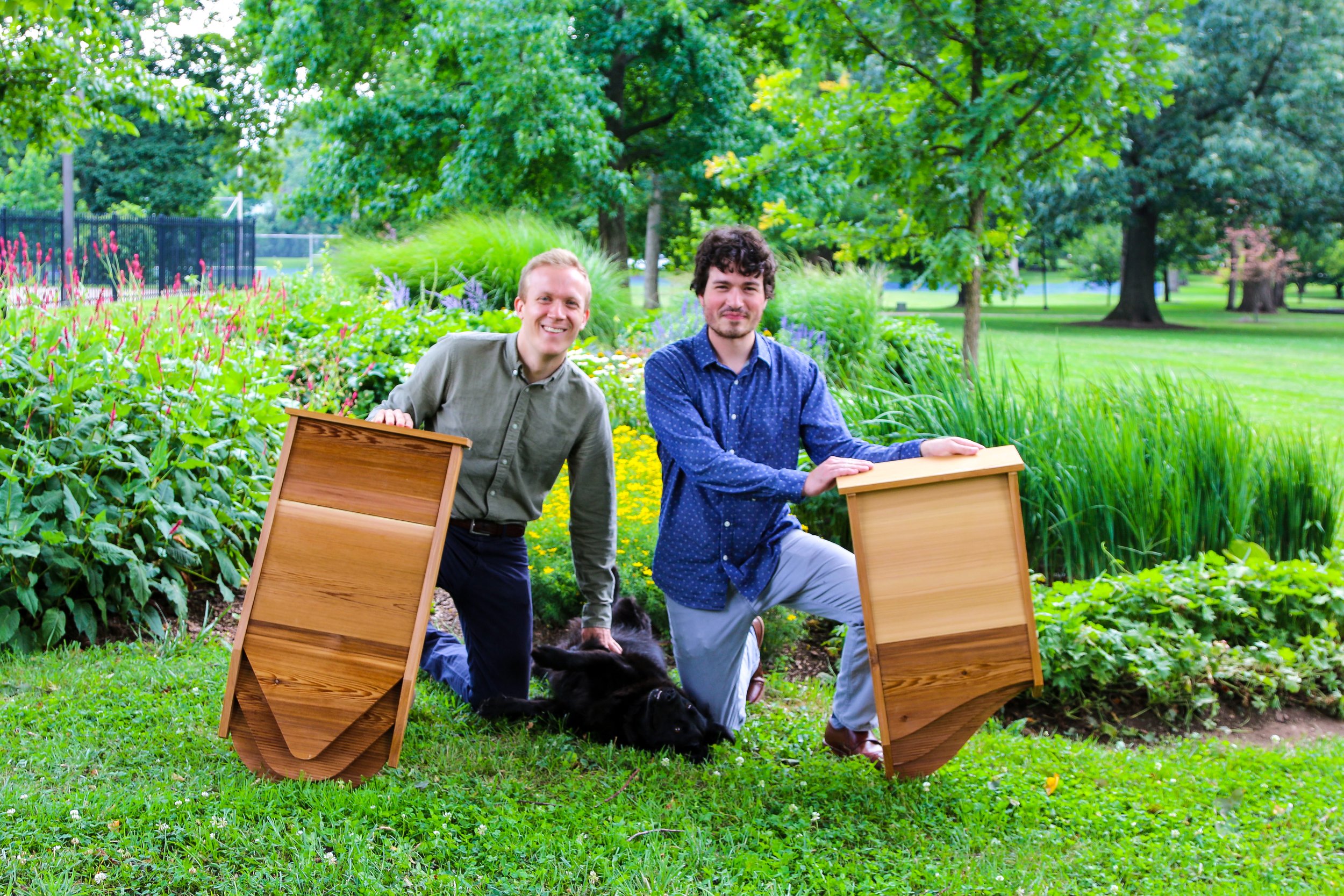




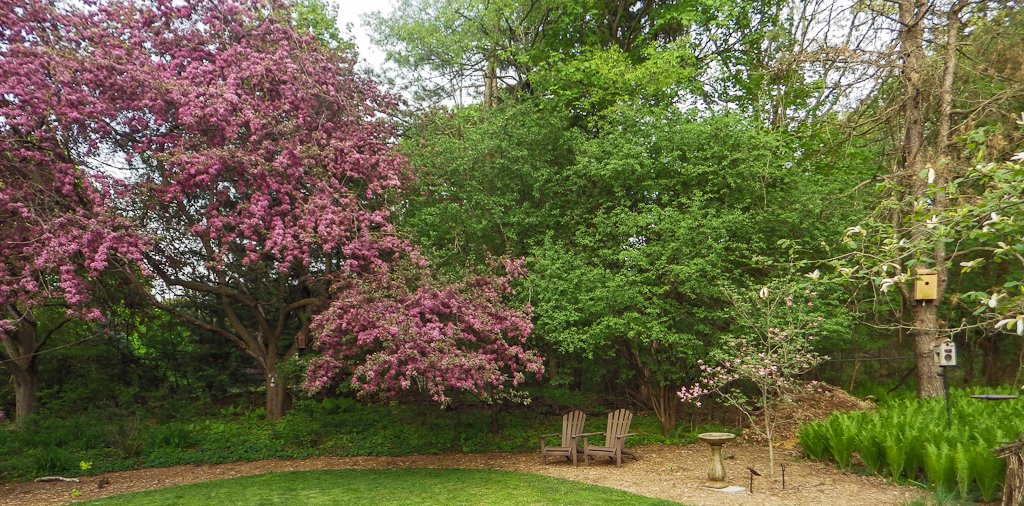
Creating a woodland/wildlife garden using native plants has many benefits including being able to photograph the wildlife that lives in and visits your backyard.